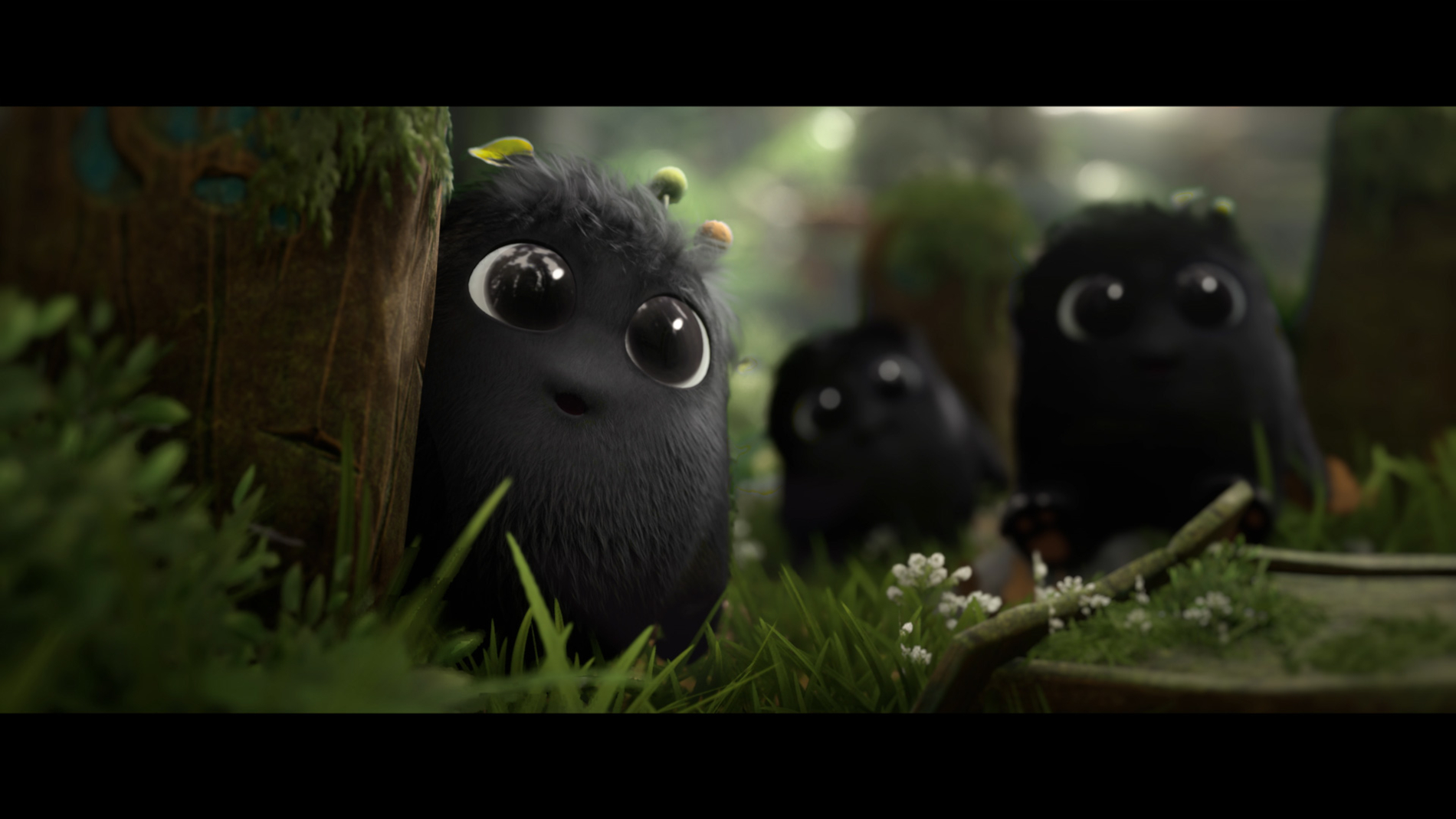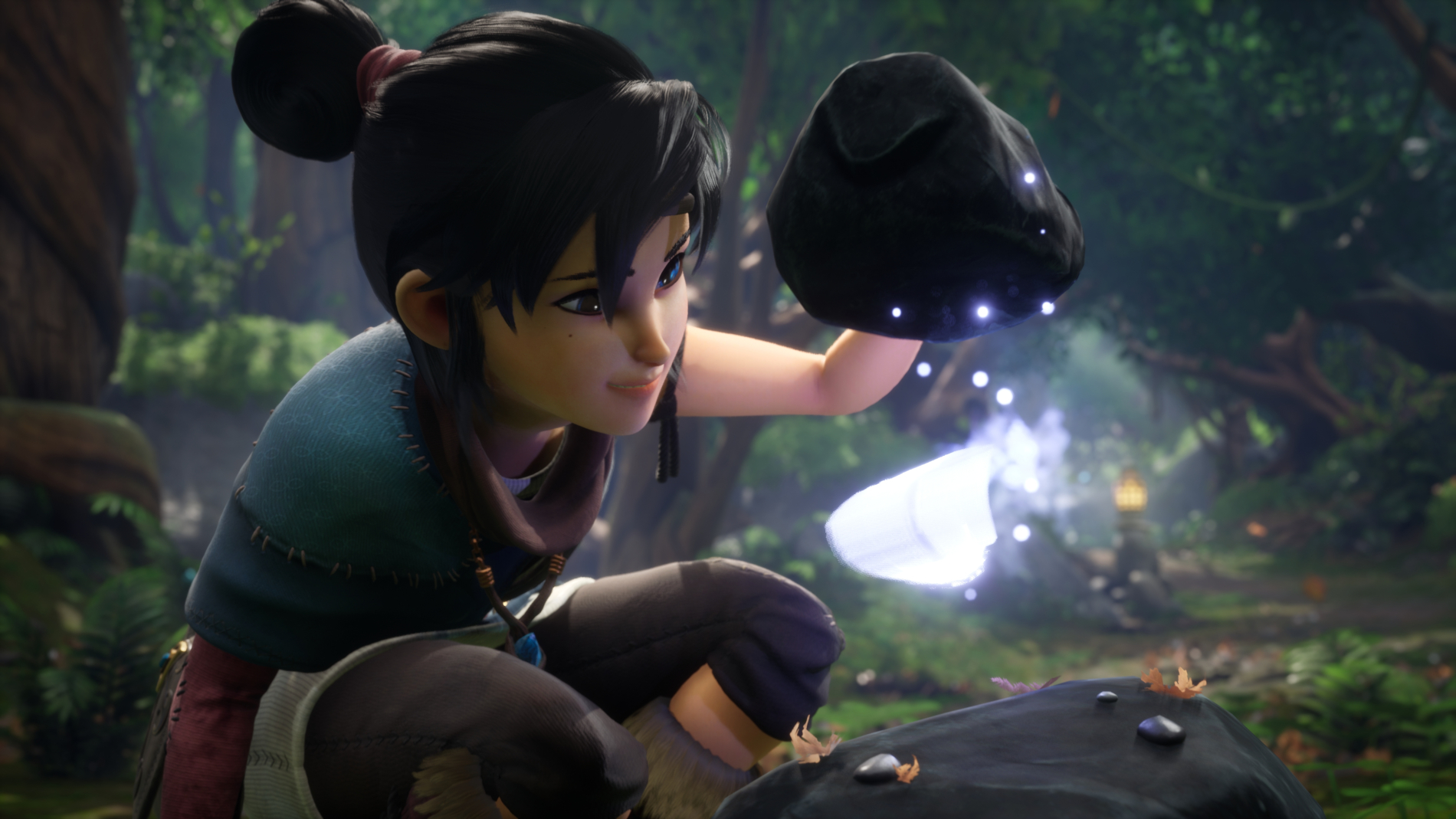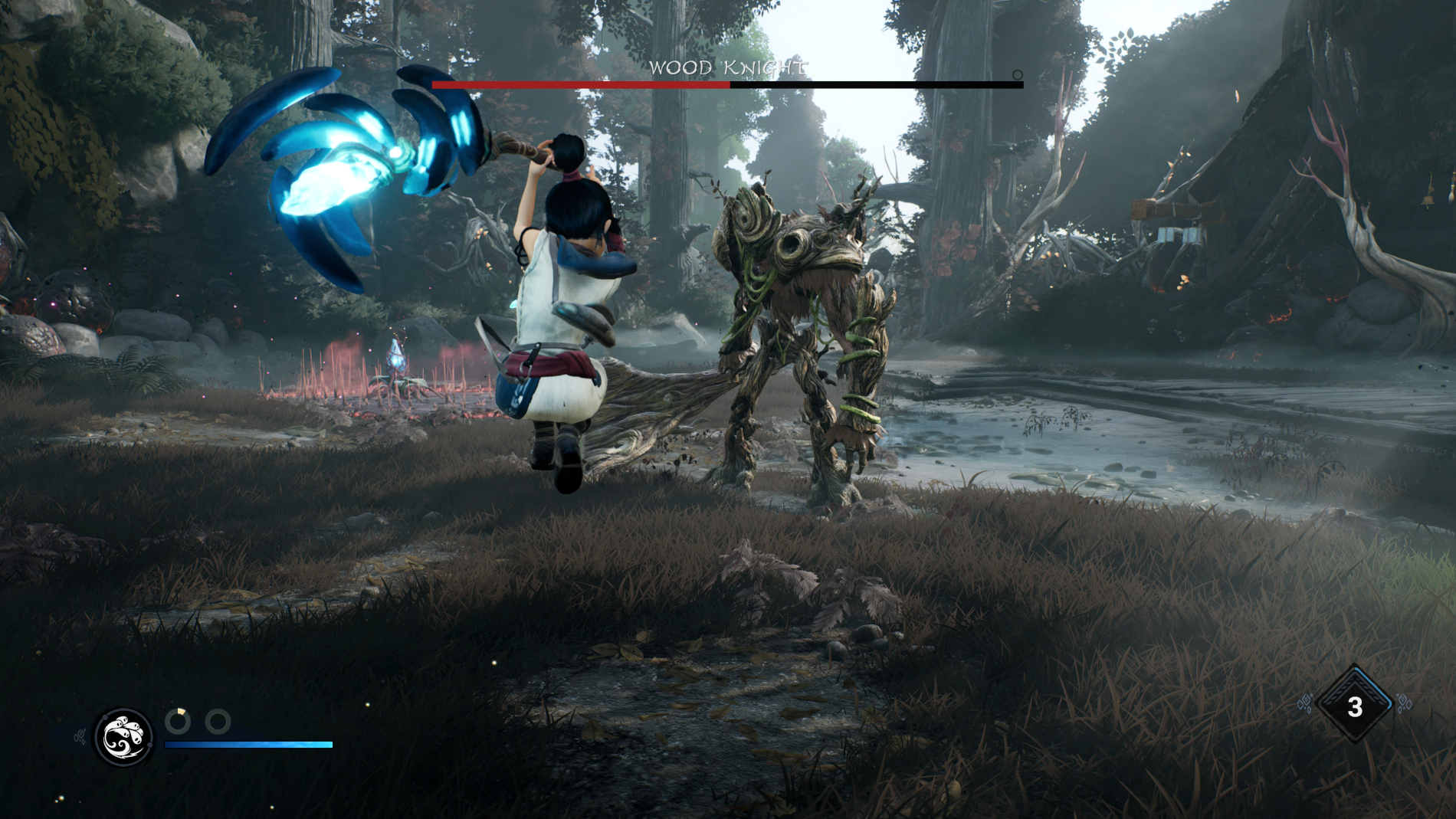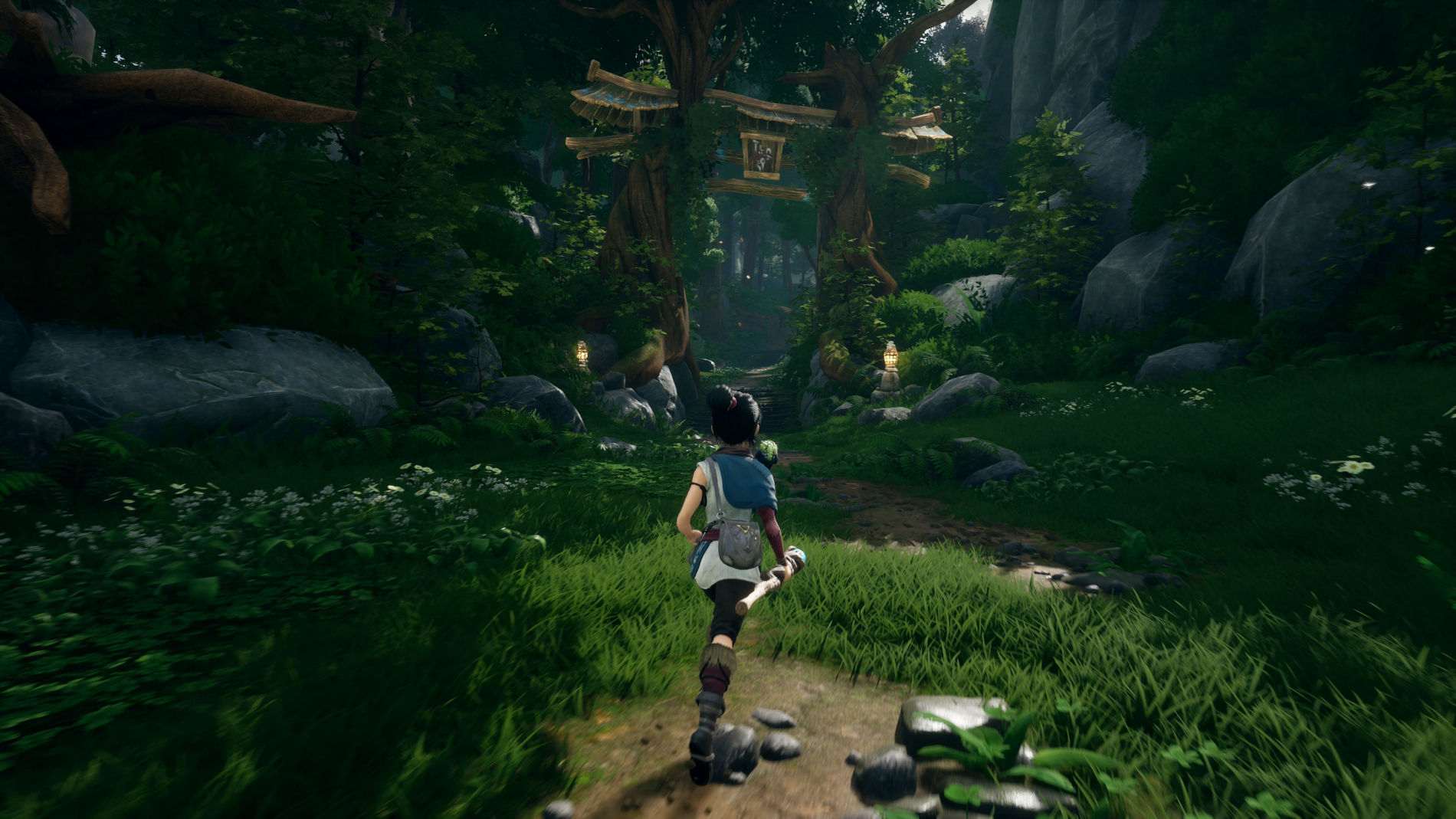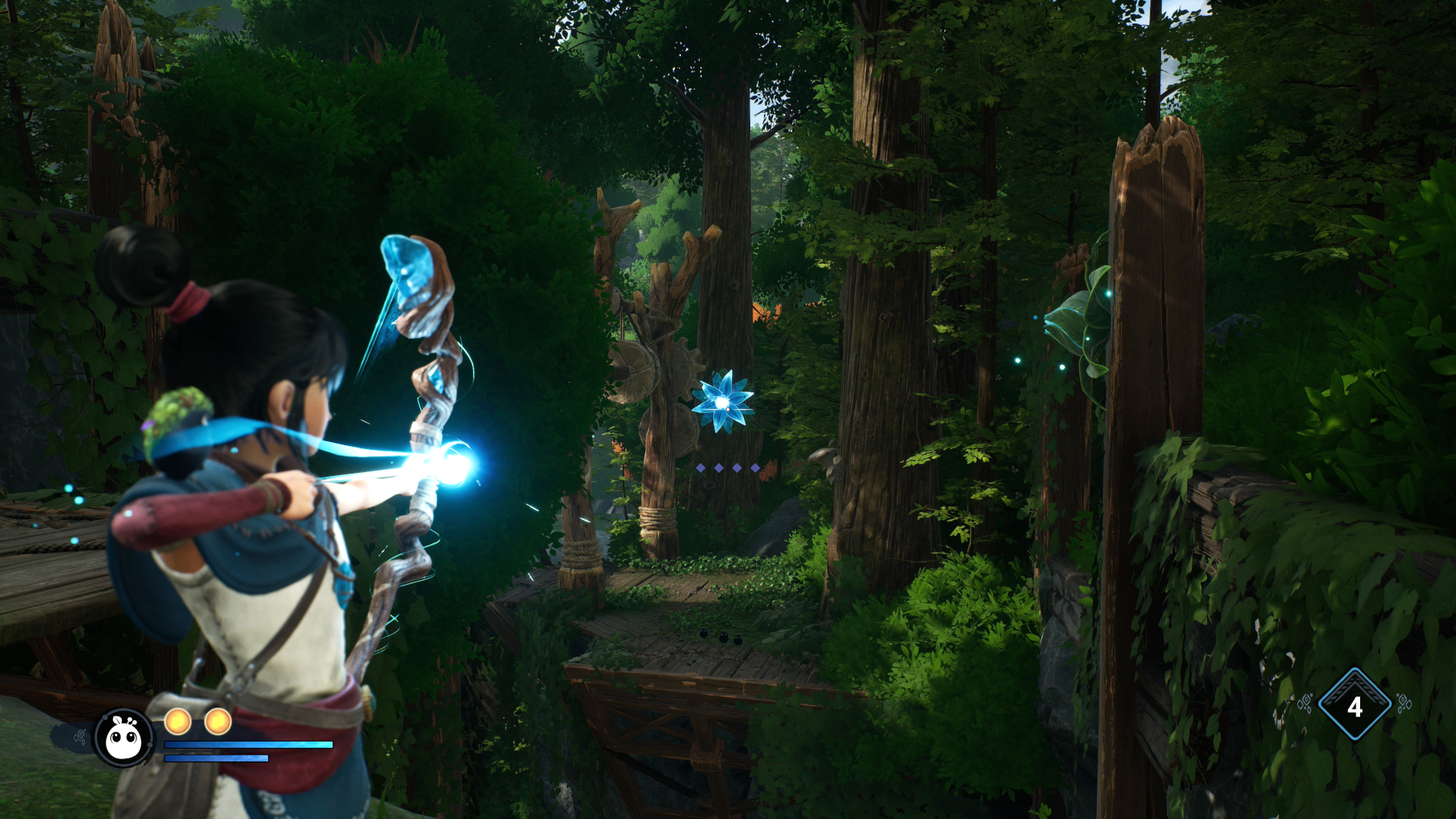Kena: Bridge of Spirits
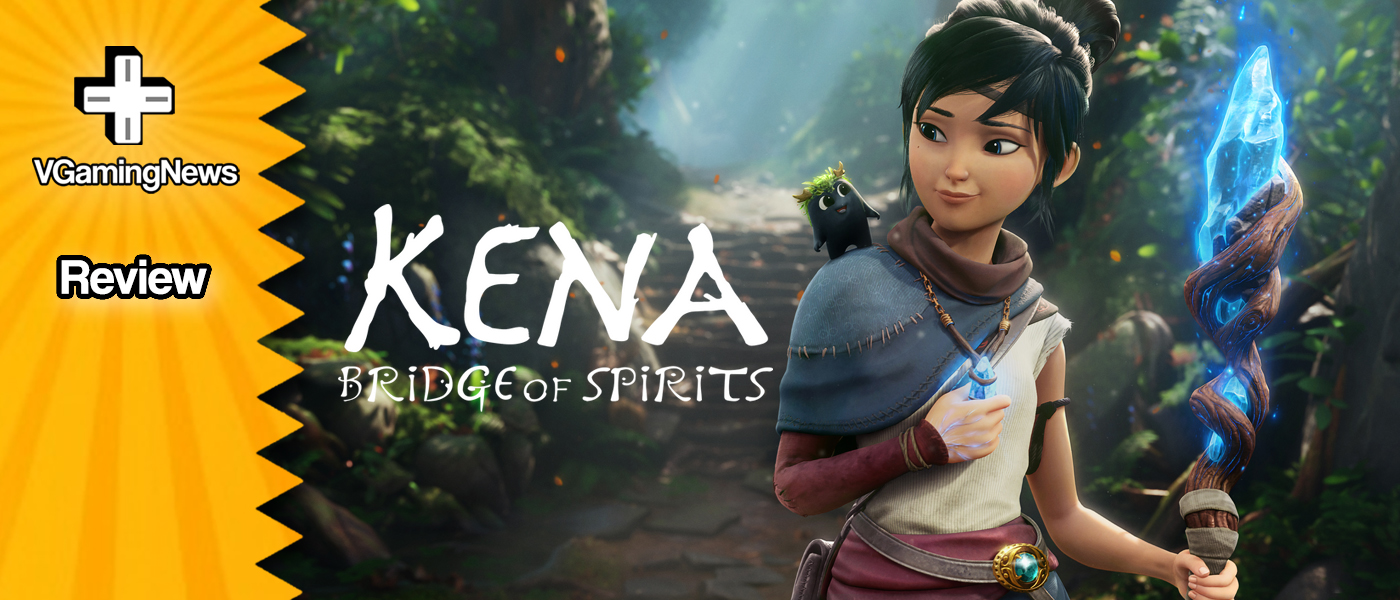

A lot of the time when you buy a game, you can roughly gauge what you’re investing in. Whether it be a vast single player RPG, a relaxing cosy farm sim, a multiplayer PvP sweat fest, or something sporty to make you feel like less of a potato sat on the sofa. I ask you this, when was the last time you played something that just made you feel? Something that, as you play, you take a moment to stop and just take in what is happening. This is exactly what Kena: Bridge of Spirits did for me. This absolute gem, originally released in 2021 by Ember Labs for PlayStation and PC, makes its journey to Xbox on August 15th. I can’t believe this beauty passed me by those few years ago, but this further release has not only revitalised its own spirit, but in some ways mine as well.
This is an abridged version of our GAME NAME video review, which can be seen here:
You play as Kena, a young spirit guide who uses her powers to aid those who have deceased in passing from the physical to the spirit realm. This responsibility has been inherited from your father, and the story revolves around helping the spirits in a specific village (that is suffering from a growing plague). Your quest is to ascend to the mountain shrine, as the power that dwells there draws to the power that lies within Kena herself . This concept of helping spirits to find peace is very much reflected in another brilliant title called Spiritfarer. Both these games excel at one of the most important details in a single player experience in my opinion, and that is making the player give a crap about the characters. Not just focusing on the protagonist, but building relationships with others and making you care about helping the spirits move on. What’s remarkable is that Bridge of Spirits can do this without reams and reams of dialogue and text, but with fewer and more impactful moments. I adored every character and every moment I shared with them, I was so invested in each of them and their stories, I just wish we got to see a bit more of them before they moved on.
Meet the Rot; who act as our little spirit companions throughout our quest. These little fellas help solve puzzles, move objects, obtain items and even fight during combat. Immediately they remind me of Pikmin, and much like Pikmin they are bursting with personality, especially when you can customise them all with hats! Something so simple, but oh my days, I loved seeing their goofy faces wearing them, and it allows for a sense of individuality between them all. Honestly, I thought my wife was going to explode with joy as I showed her the rot entourage in their headgear, and she rates the game 10/10 from this factor alone. (Note to self, buy cute hats.)
At A Glance
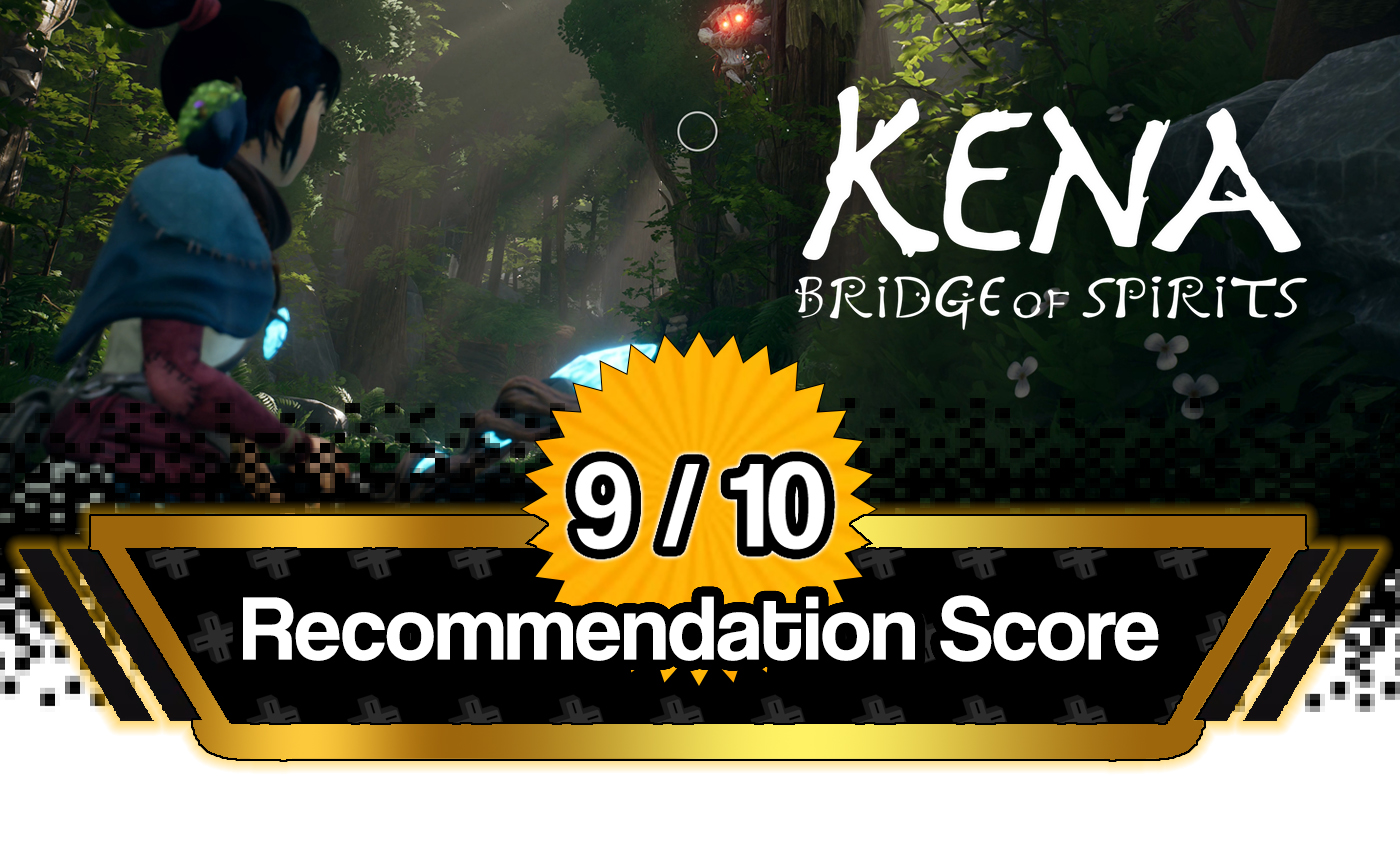 |
|
|---|---|
Positives |
Negatives |
+ Exploding with charm and feeling + Stunning visuals and a beautiful soundtrack + Real investment in characters and story + A good range of difficulty settings for all abilities |
– The odd camera mishap – Not having a sequel announced yet. More please! |
Available on: |
|
These hats, along with the rot themselves, act as collectibles found throughout the world. As you find more rot, your horde grows and grows, and as you explore each nook and cranny, the little troopers pop up and wait for you along the landscape almost like tiny cheerleaders. Other such collectibles include charm stones that, when equipped, enhance certain abilities. Flower shrines that offer gems when prayed at, cursed chests that provide a challenge to open. Meditation spots that increase health, and spirit mail that unlocks more of the main village. There is a very helpful checklist on the map for these collectibles broken down by each area, so naturally, we were going to one hundred percent this bad boy. This included going for the difficulty and secret achievements as well.
The charm constantly pours out the screen as you explore the world that is very much inspired by Eastern locations and culture. Its beautiful artistic style pairs so well with the energy the game brings, sometimes it felt like watching something straight out of a Pixar animation. This equally applies to the gorgeous accompanying soundscape, with layers of music built up that morphed seamlessly between environments. This is something that struck me just moments into starting the game. You begin in a dark cave, illuminating your path in crystal blue light bouncing between the walls, hollow percussion sounds with a hint of woodwind playing in the background. Then as Kena emerges into the stunning forest of emerald green, a crescendo of sound blossoms, enriching her with energy and life. There were so many moments I caught myself just stopping and going “wow”, where I would leave the sequence going at a meditation spot, and my wife and I would bask in the peaceful ambiance.
When the peace is over, the combat begins. I found the mechanics fluid, with controls that were responsive and not too complex. Using a combination of light and heavy attacks with your staff, along with later unlockables such as the bow, you can string together simple and effective moves. As you battle, you gather courage orbs to then get the rot involved. Using an orb would allow you to use techniques such as the mighty rot hammer or a powerful piercing rot arrow. There is also a simple ability tree that further adds variation to combat, like the multi arrow and parry attacks. These abilities are unlocked by using one of two currencies collected, with the other being used to purchase the rot hats and the different outfits for Kena. These outfits are found by completing trials that unlock as you progress through the story, adding further replayability and challenge to the game.
The transition from Playstation to Xbox has so far been pretty fluid, as I have had absolutely no trouble performance wise. Controls have felt crisp, visuals sharp, frames indeed by the second, 60 of them to be precise, and in 4K. Load times are negligible, as are respawn times when you die. I would say however that my only, and very minor issue, came from the rot cloud ability and the camera angle, in that for a short time it seemed to either lock or freak out when the ability ended. One time, by accident, I activated the cloud as a cut scene started, so they just seemed to stay in that form until I moved on, again a minor issue, and if anything – funny.
I have absolutely loved my time playing Kena: Bridge of Spirits; I’ve struggled to find any real fault besides just wanting more of everything. I asked my wife her opinion, but she was too busy customising the rot with unicorn and mushroom hats to pay any attention. With a run time of about 10 hours for the story, and double that for 100% completion, I still can’t get enough of every captivating detail. The visuals and soundscape, the character investment, the platforming and combat, and the emotion that comes with it all. This game explodes with charm and feeling, and if you haven’t experienced it for yourself, I simply cannot recommend it enough.
In the interest of full disclosure, VGamingNews was provided with a copy of the game in order to conduct this review.
Thanks for taking the time to read our review, If you’d like to support us further, please consider buying us a coffee!
Wild Seas
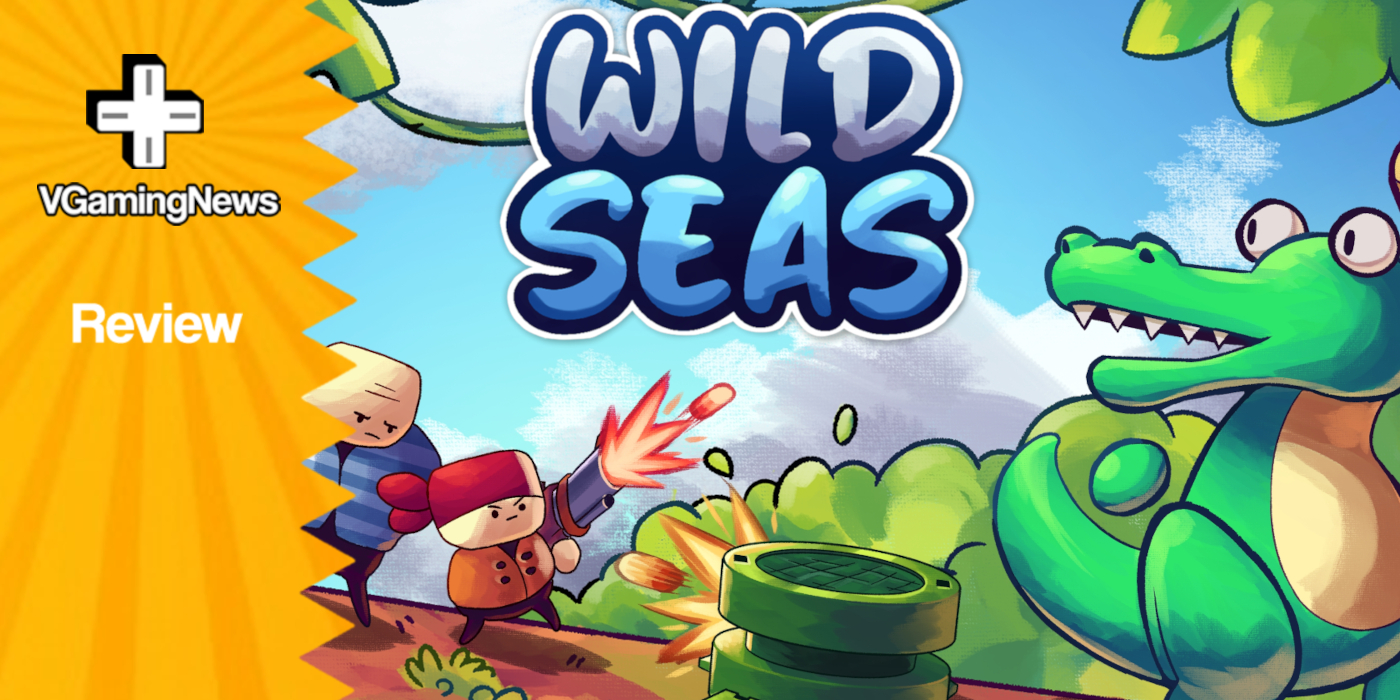

From watching Captain Pugwash or being bathed by Matey Bubble Bath as a kid, I’ve always felt there’s a romantic idea about pirates. As I grew up, Disney taught me that they were playful scallywags who journeyed the Caribbean looking for treasure, rum and a brothel. This couldn’t be further from the truth, as pirates were only looking out for themselves, sailing the seas to pillage and plunder what they could. While games like Sea of Thieves and Lego Pirates of the Caribbean make you play as a cheeky rapscallion, it’s up to Wild Seas to tell it like it is, that pirates are bad.
Wild Seas is a tower defence game from DuDeeki Studio that challenges an adorable crocodile to defend multiple islands from marauding pirates. With its Cookie Monster eyes and a multi-purpose club that can cut grass, deflect bullets and shatter concrete, our plucky croc takes it upon itself to be the saviour that the tropical islands need. As it decides to resist the oncoming invasion from dastardly pirates who are looking to steal the island’s crystal and turn our protagonist into a nice pair of shoes.
At A Glance
Wild Seas 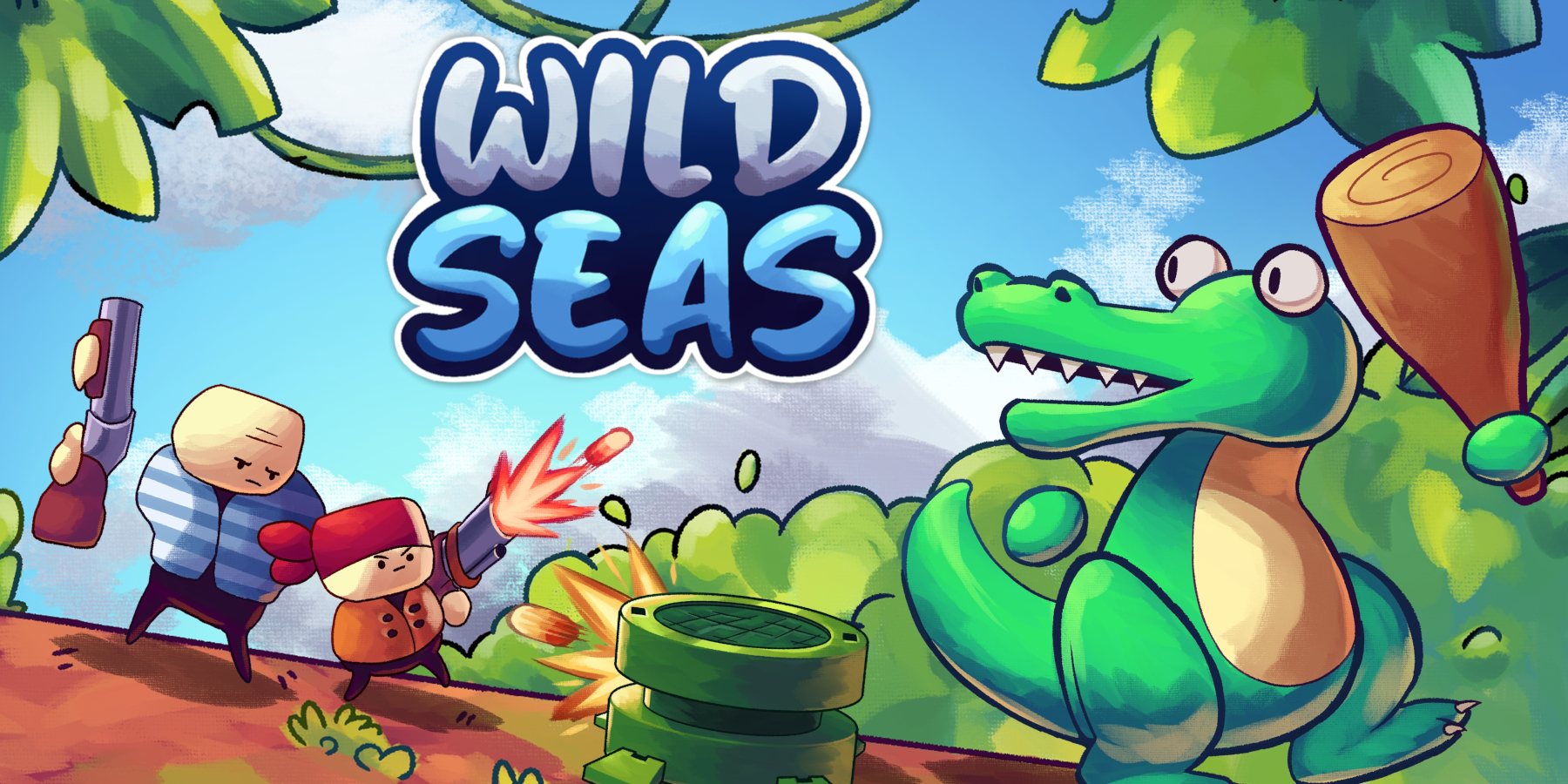 |
|
|---|---|
+ Adorable visuals |
Positives |
Negatives |
– Limited arsenal |
Overall |
6/10 |
Played On |
Xbox Series X|S |
Also Available On |
Nintendo Switch, PC, PS5, PS4, Xbox One |
Wild Seas is broken down into four islands, each having a set number of waves that grow in intensity. As soon as I entered the island, the preparation started, and I was given 90-seconds to begin constructing my defences around an imposing crystal. With zero coins to my name (crocodiles don’t have pockets), I first had to scour the landscape for treasure chests. Once I had a handful of coins, the merchant, who had taken refuge behind the giant crystal, was off to buy my first few towers. I then had to position them where I thought the attackers would come from.
The first few times this happened, it was an absolute farce. The game doesn’t prompt you that you have a time limit, or give you any indication of where the pirates will come from. It took me by surprise that a cute-looking game wouldn’t hold my hand and after I got over my initial shock (read as: 4 four defeats in a row during Wave 1), I rather enjoyed the old-school approach of dropping you into it. Once I did find my sea legs, Wild Seas became oh-so-more fun.
My plan in place, it was time to survive the onslaught of salty sea dogs who were trying to destroy my crystal. For the most part, the towers take care of themselves; they don’t break down and can be upgraded throughout each run to give them more power. There are only six to choose from; five are for attacking and one periodically heals the unnamed crocodile. The handful of offensive weapons vary in power, the cheapest being the less focused, scattering bullets everywhere, and the most expensive typically one-shots everything in the vicinity. The defences are simple to understand and I quickly worked out what each one did and where it was best placed to help. This is essential, as each wave of enemies became gradually more demanding, meanwhile my croc-buddy was running around the screen trying to collect loot and batter any pirate who got too close.
The baddies themselves were varied enough; the basic privateers with a one-shot pistol typically started the waves, and as I progressed, pirates became larger with better weapons, like a rapid-fire shotgun that pumped three rows of three bullets in quick succession. You can deflect most bullets with a swing of your bat, but it becomes a nightmare trying to time a swing to get all of the bullets out of the way. At the end of each level was an additional boss wave, which was either really impossible or stupidly easy, depending on how you positioned your weaponry. If you lose your health or shatter the crystal at any point, you’ll be hoofed back to the beginning, and while there are no spoilers here, I will advise you to make sure you have every type of turret on the island. With there only being four islands, once you have worked out a viable strategy, you’ll be rolling the credits in no time.
Despite this, the game encourages you to come back and replay each island as you try different approaches. This is partly down to the simple nature of the gameplay, coupled with the beautiful graphics which left me thinking Wild Seas is simply lovely to look at. The top-down perspective makes the vibrant levels pop with colour and although each map is small in scope, they give the impression that a larger world could be just beyond the horizon. The characters are distinct from one another and really well designed, and while the pirates are plenty, the star of the show is our loveable crocodile, with its vacant look that reminded me of Ed the hyena from The Lion King.
The soundtrack is by far the worst thing about Wild Seas. It is an 8-second loop of what I can only think of as “Generic Foreboding Noise 3”, and after 30-seconds of listening to the deep droning, I had to mute my TV. The only time I turned the volume up was to check if it changed when I set sail to another island and, spoiler alert: it doesn’t. I understand that solo and small devs might not have the funds to create or licence music, but if you’re going to use stock audio, might I suggest something more piratey? Thankfully that is the only issue I had with Wild Seas, as everything else was more delightful and well presented.
On the face of it, Wild Seas seems like one of those cute indie titles that will be a calm and relaxing time. After a few minutes, you’ll understand that this isn’t the case and the game is surprisingly demanding, with elements of resource management and positioning of the defences taking priority. Sure, it’s over far too quickly and the God awful “music” can return to the sea, but if you’re in the market for a budget tower defence game that is fun and offers addictive gameplay then you can’t go wrong with Wild Seas.
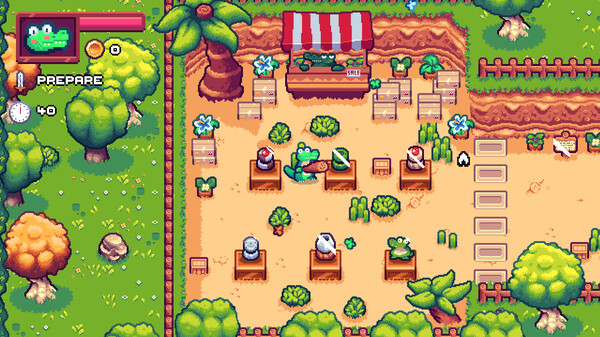
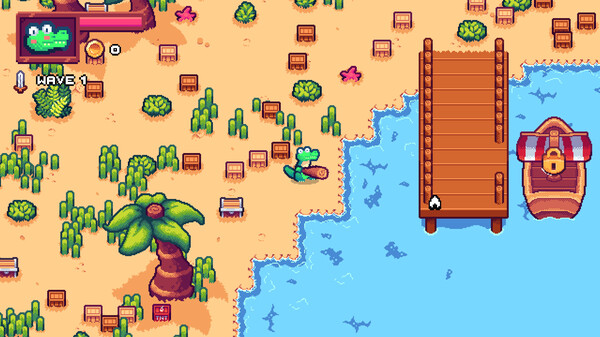
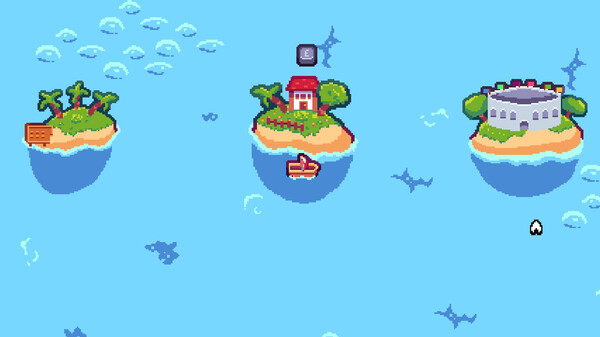
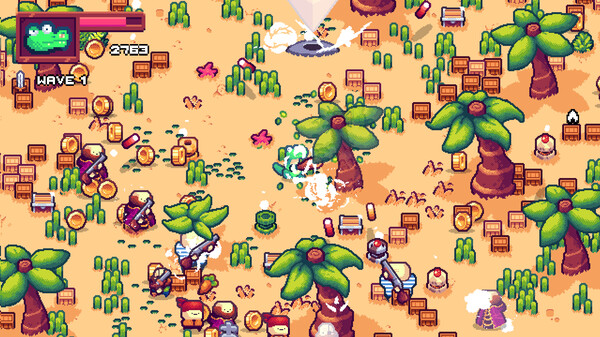
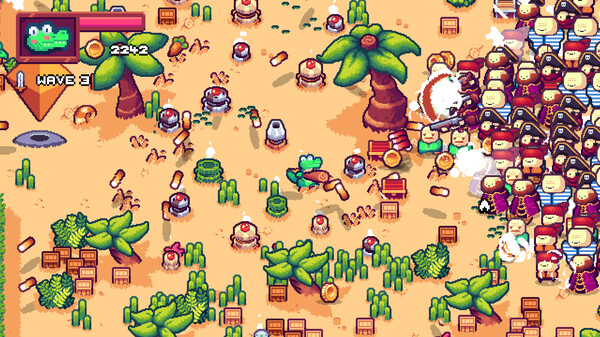
In the interest of full disclosure, VGamingNews was provided with a copy of the game in order to conduct this review.
Thanks for taking the time to read our review. If you’d like to support us further, please consider buying us a coffee!
SokoMage
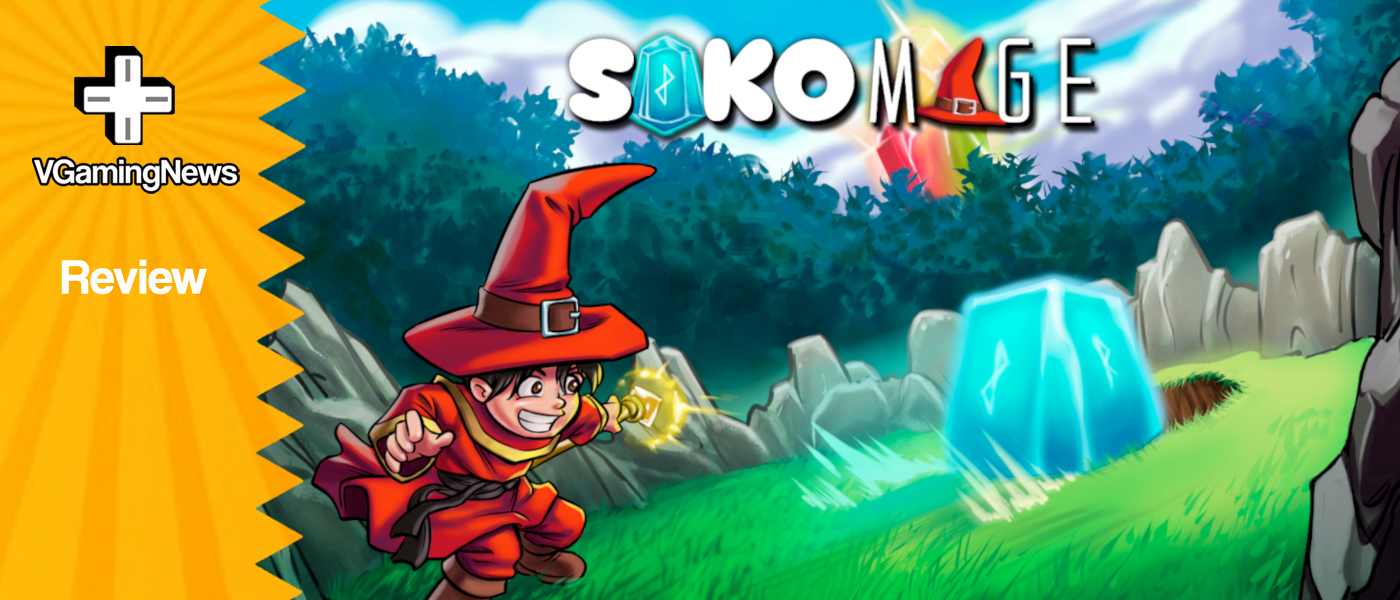

I am an absolute sucker for both pixel art and puzzle games. If you waved a boxed copy of Piczle Cross in front of me whilst my shed was on fire, my garden would be full of smouldering ashes in no time. In a more realistic turn of events, when Afil Games reached out to us to cover SokoMage, I virtually vaulted to the head of the queue and promptly downloaded this cute pixel art heavy puzzler.
SokoMage found its home on Steam and PlayStation when it was released last year, but now finds a new home on Xbox. The cute top-down puzzler has now made its way over to Xbox, where a new audience has opened up for the budding indie studio. SokoMage plonks you in the shoes of a wizard who has managed to get himself trapped in a labyrinth. With only his wand and some plucky spirit, he’s got to find his way out of the maze by shooting blocks across the screen in order to reach a huge crystal that is waiting to take him to the next stage.
At A Glance
SokoMage 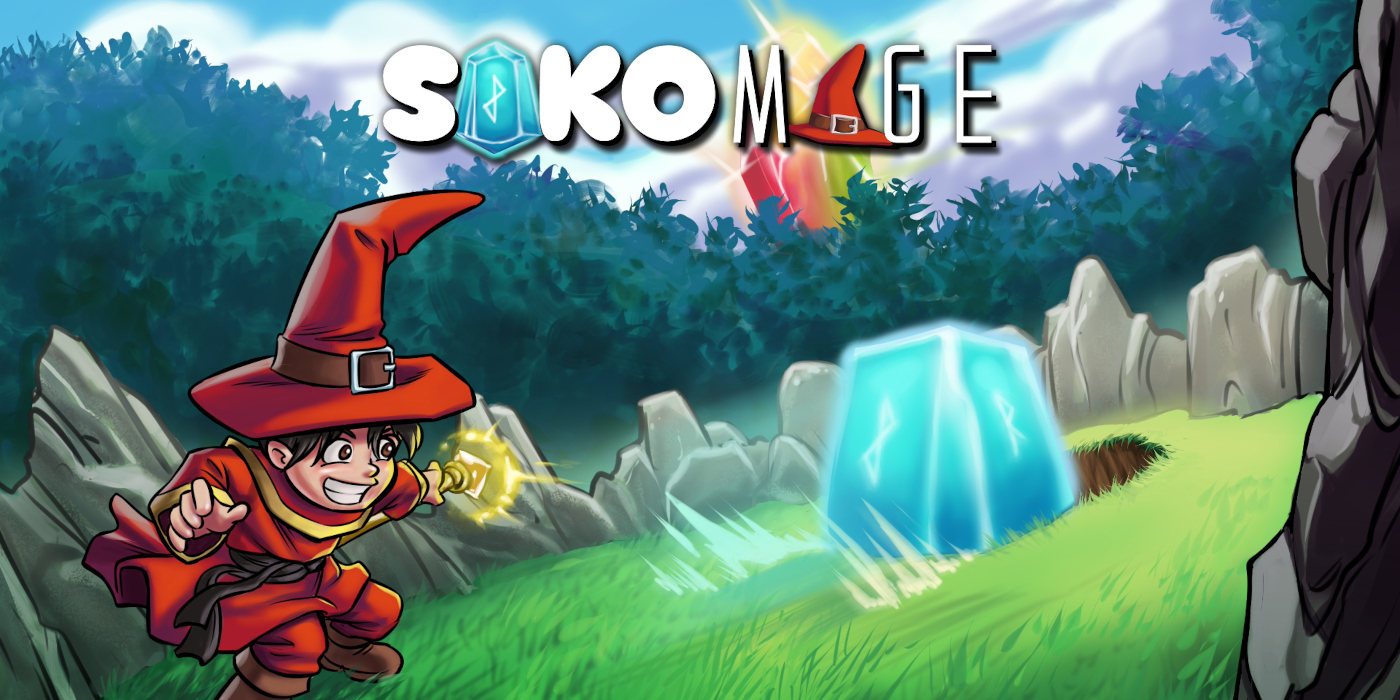 |
|
|---|---|
+30 levels of brainteasing fun |
Positives |
Negatives |
– 30 levels are not enough |
Overall |
5/10 |
Played On |
Xbox Series X|S |
Also Available On |
PC, PS5, PS4 |
Each level in SokoMage tasks you with filling holes with moveable blocks so that you can bridge any gaps and collect the gigantic crystal that waits for you. It’s a simple premise but throughout 30 levels, things do get progressively tougher. Things start out relatively simply, as you knock a glassy object around a level with only bushes blocking your path. With a swift push of the button, our wizardy-chap will swing his wand and cut down the obstacle in the way. Another swish of his magical stick in front of our moveable stone will send it careening until it either hits another wall or falls down a hole. As you move through the maze, you’ll be introduced to directional arrows that change the direction of the block, along with pulsating red ‘X’s that stop the item in its tracks. I found the game had a gentle rhythm as it introduced each element, with each obstacle coming at me at about the right time in the game. A particular favourite was the directional panels, which spun my rock in various directions and reminded me of Team Rocket’s hideout in Pokemon Blue.
The stages in SokoMage are grouped into three distinct areas, Forest, Desert and Ice. Each has its own look, with deep greens filling up the screen for the forest, whereas the ice level extruded a pale chilling coldness. The pixel art graphics were utterly charming and I couldn’t help but feel that SokoMage was a homage to mid-90s gaming. That aesthetic is topped off by a cheery chiptune soundtrack that may be short but punctuates our lil’ wizards adventure really nicely as he goes about escaping the maze.
With the presentation and the (albeit limited) soundtrack, SokoMage has a lot going for it. Unfortunately, as the game moves forward, some problems do occur, and they’re the type of things that limit how much praise I can heap on the game. As delightful as the soundtrack is, it is only as varied as the limited level themes, in that you have three tracks that loop every half-minute or so. Early on this isn’t a problem as each level is quite short, but in SokoMage’s later stages, the music gets repetitive to the point I almost muted TV. The reason why I didn’t cut the sound is that by the time I reached for the remote, the game was done. There’s sadly no way to dress up the fact that 30 levels lasted around an hour or so, which is a real shame. I was enjoying the challenge, with some of the levels giving me a real run for my money, but those were few and far between in the grand scheme of things.
There isn’t a lot to SokoMage and the levels are over far too quickly. It reminds me of the games that get churned out specifically for achievement hunters rather than having any kind of substance, which is a shame because what is contained in SokoMage is somewhat different in that respect. The puzzles get trickier, particularly as the game expects objects to be shuffled between screens and the introduction of multiple solutions lead to a few head-scratching moments. SokoMage is a super short experience that does delight but is over far too quickly and offers no incentive to replay it once you’ve cleared the game.
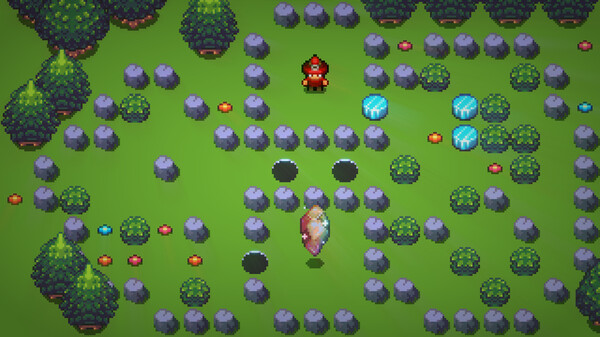
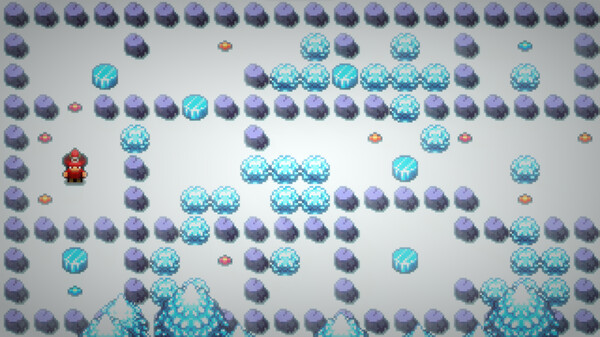
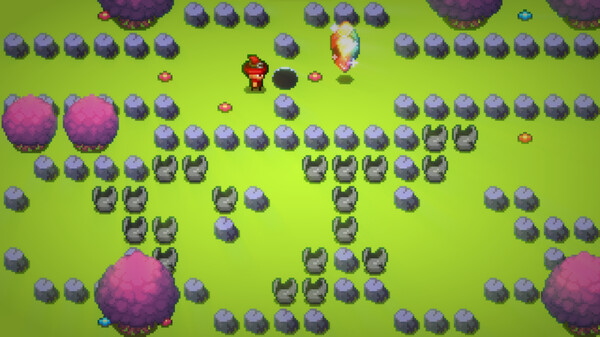
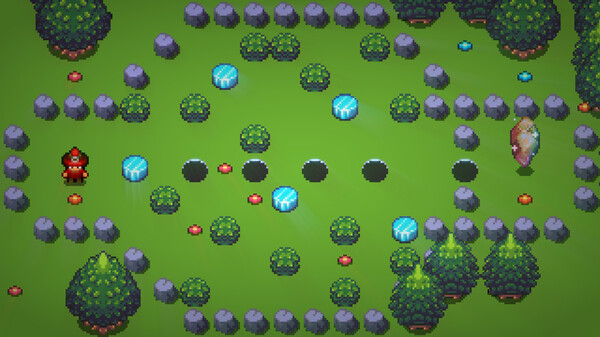
In the interest of full disclosure, VGamingNews was provided with a copy of the game in order to conduct this review.
Thanks for taking the time to read our review. If you’d like to support us further, please consider buying us a coffee!
Inkulinati
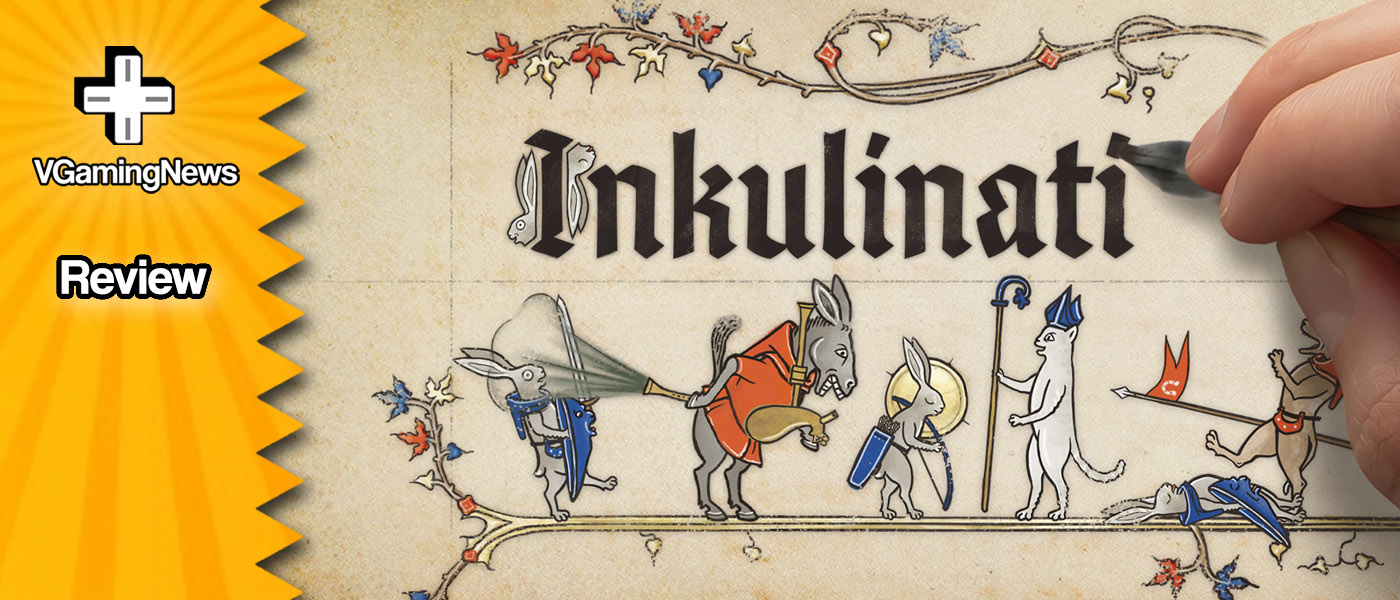

When I think of Monty Python, the first thing that pops into my head isn’t one of Eric Idol’s ditties or John Cleese’s sarcastic punchlines, but Terry Gilliam’s amazing artwork. While I got a kick out of skits like the fish slapping, coconut clacking and “Jesus, Sir”, it was the offbeat artwork that made me a fan. It’s no surprise then, that when Inkulinati crossed my path, with its art style that looks straight out of the mind of Gilliam, I just had to give it a go. It’s not often I play a game based solely on how it looks, instead I rely on a bit of research, like the previous works of the developer, or what genre the title sits in. After all, I don’t want to be stuck playing a turn-based strategy game, do I?
You might be surprised to note that Inkulinati is indeed a two-dimensional turn-based strategy game that is set in the pages of a medieval book. But, before you start, I will say that like many things in life, there are exceptions to this rule, and after seeing the first trailer for Inkulinati many moons ago, the latest game from Yaza Games is certainly an exception I’m glad I took the plunge with.
As the player, you take on the role as a member of the titular Inkulinati, a secret society of Ink Masters who fight using quills, across the pages of medieval manuscripts. After your master, a green frog who resembles a certain green Jedi Master is ‘accidentally’ killed, you set off on a quest to revive him. As with most video games based on French medieval manuscripts, you battle through the pages against various Inkulinati and gain the support of different armies who help you on this straightforward quest.
At A Glance
Inkulinati 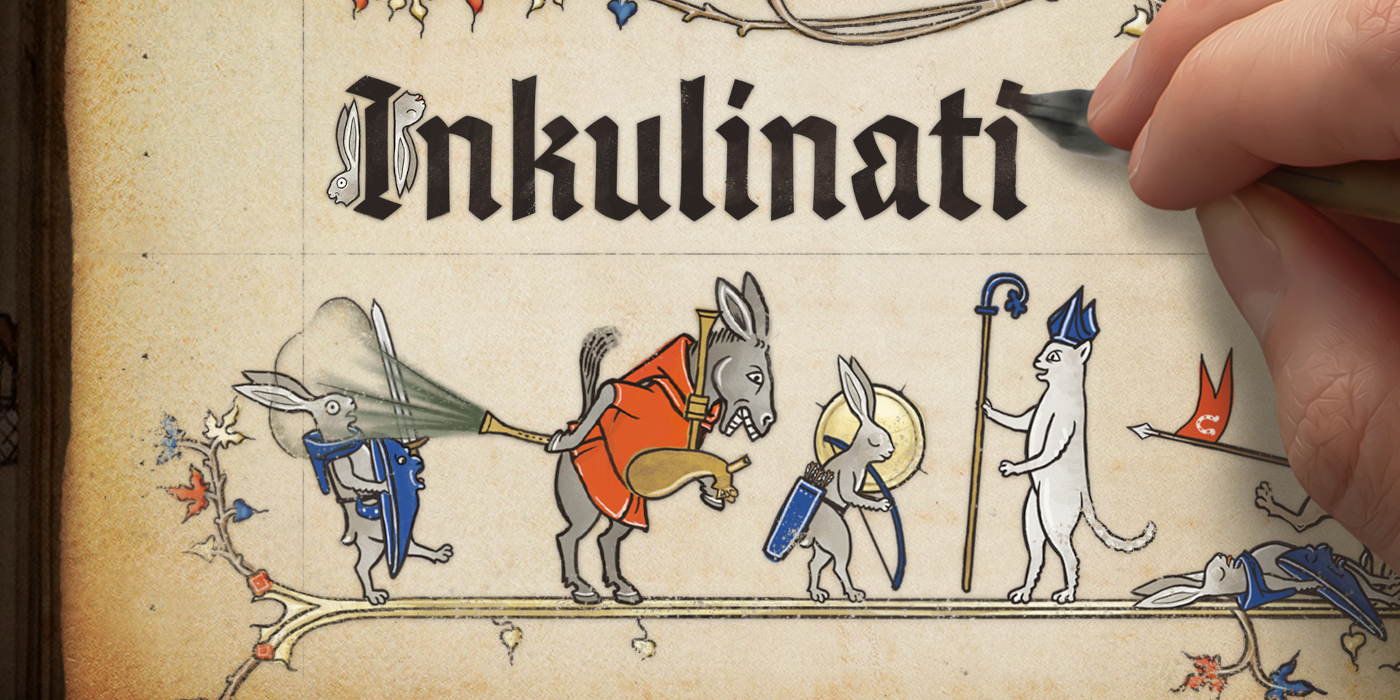 |
|
|---|---|
+ Excellent visuals |
Positives |
Negatives |
– Overly long tutorial |
Overall |
7/10 |
Played On |
Xbox Series X|S |
Also Available On |
Nintendo Switch, PC, PS5, PS4, Xbox One |
Before I get ahead of myself, I’ll start at the tutorial. When pressing ‘A’ to begin Inkulinati I was quickly introduced to the story with a quirky live-action introduction featuring a knight and a noblewoman. The set design was actually spot on but bore no resemblance to what was coming. After this odd start, I collected my five-animal army and headed into battle. It’s here I was shown how to move around, attack the opposing side and defend my mini Inkulinati. This chap or chappette sits on the screen as a representation of whoever is drawing the pictures in the book. The goal with Inkulinati is simple: send your units to attack the opposing Inkulinati while defending your own. If one of your squad is downed, you can use ink, which is collected during each round, to draw more squaddies to help with the crusade. As you progress, you get to unlock more moves, like a push that allows you to shove an opponent out of the pages and into the void of nothingness. I also got access to the brilliant fart attack, which stuns enemies in several different ways, including the cartoonish green gas cloud, or a silent-but-violent, which is shown by a mischievous smile from the perpetrator.
I don’t mean to toot my own horn, but the summary paragraph is a pretty good overview of what Inkulinati is as a game. The tutorial covers all of this information, along with a few other bits and pieces, but it just so happens that the tutorial makes up around 50% of the gameplay. I was deep into learning the ins and outs of Inkulinati before I realised I still hadn’t completed any of the game’s story. This wasn’t optional either, the game railroads you into finishing the vast majority of the how-to guide before letting you run free on the game. I felt a bit downhearted with this, as I’d have preferred a quick rundown of the vital bits before being let loose on the game proper.
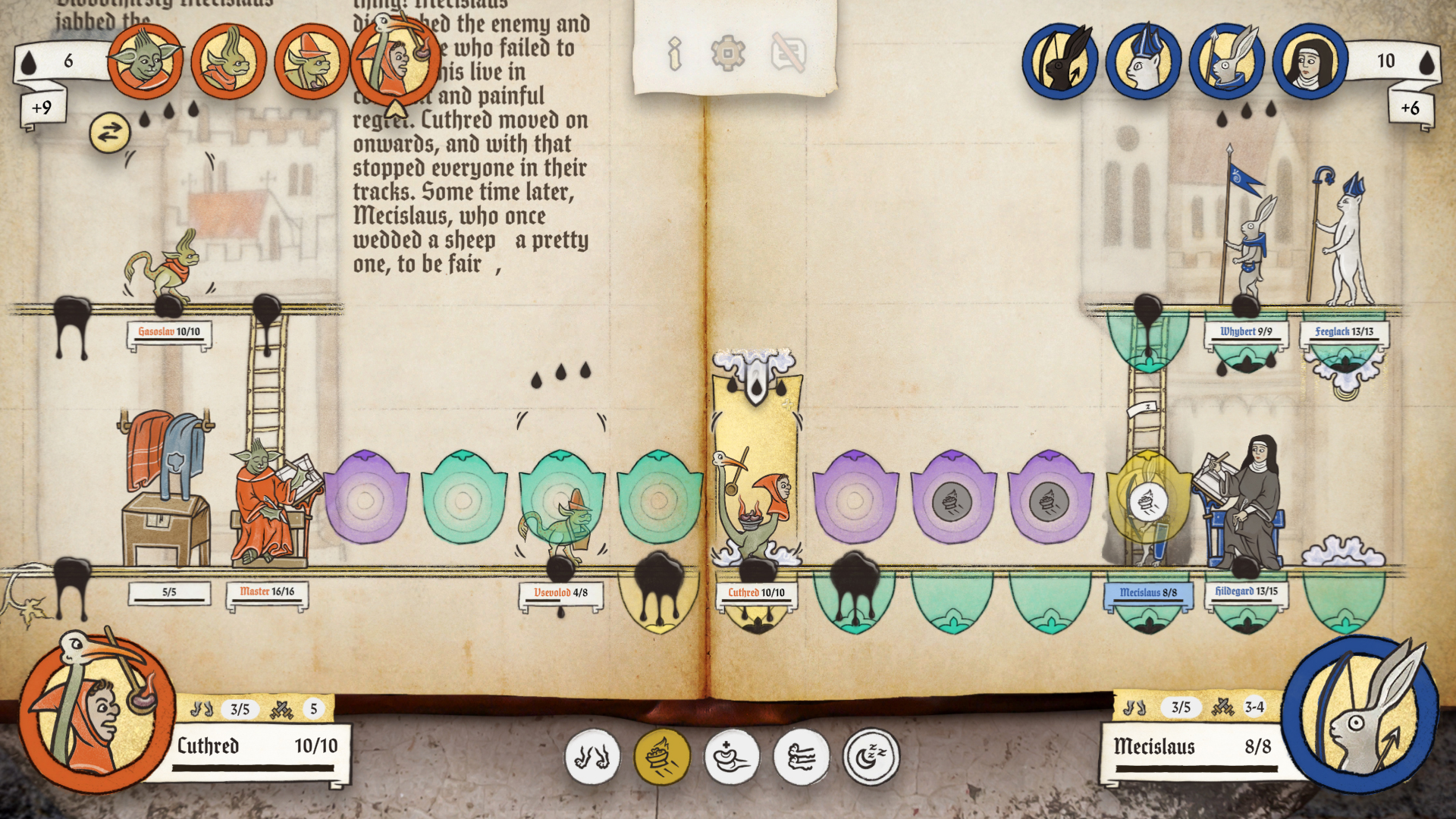
Still, while the tutorial is as long as the entirety of Monty Python and the Holy Grail before the police shut the production down, Inkulinati is a lovely game to look at. To paraphrase the ultimate northerner and all-around role model Sean Bean, one does not simply describe what Inkulinati looks like. From a quick cursory glance, Inkulinati is a hand-drawn manuscript that even Bilbo Baggins would be proud of, but scratch beneath the surface and there’s something altogether more strange going on. Inkulinati is a cartoon battler that takes inspiration from the 12th-century French work Bréviaire de Renaud de Bar which pits dogs against rabbits as they try to take over castles, and folds it into a modern video game. At the beginning of each battle, a real-life hand that’s wearing a knight’s gauntlet, complete with chainmail, brings to life an assortment of creatures – primarily of the bunny and canine variety. Each one of these creations has its own set of skills, ranging from a rabbit that can shoot bows, to a stabby dog that’s better in close combat with a spear, there’s even a Holy priest cat who can bless the rest of your team to boost their stats. As you progress through the game, you unlock more wild characters that provide varied attacks. A personal favourite of mine is the murder snail, a tiny creature that has a limited range but can one-shot pretty much any enemy it comes into contact with. Unlocking this little hell demon is the Inkulinati version of Final Fantasy’s Tonberry and can massively help progress the story.
Unfortunately, Yaza Games won’t let you just unlock the Gastropod of Death and let you waltz straight to the final battle – this is a strategy game after all. Before you begin each battle, you have to select your army of five warrior types to take on a vaguely described scenario. The more you rely on a set team the more their effectiveness becomes diminished. A little sad face appears over the animals telling you that they need a break or they’ll be useless. What this means depends on the character, but expect them to do less damage and be on the receiving end of more critical hits. It’s a well-thought-out mechanic from the developers and a mechanic that’s far too under-utilised in strategy games. To begin with, having to plan your battles around how tired your units are was tough but it does get easier once you begin to expand your platoons. I liked that you had to think about every fight as if it was your first and it kept me engaged throughout my time with Inkilinati.
As enjoyable as planning my army according to what lay ahead was, the battles themselves were a little frustrating. This was primarily down to each side having six characters to look after, but also the speed at which moves would be carried out. While I had all the time in the world to make my moves, Inkulinati is structured in a way that the computer also takes time to plan their moves. Granted it only takes a few seconds for your opponent to move, but this feels like it takes an eternity for your turn to come around. Perhaps in my advancing years, I’m becoming a little impatient with a computer trying to act cute, but I’d have preferred the CPU to action the moves around 20% faster so that I could get back to living my life… or at least completing the tutorial.
I will say to Yaza Games’ credit, there is a running commentary of the battle being told in ye-olde English writing in the pages of the manuscript. The longer the fight went on, and the more frustrated with the pacing I became, the silly summary of the combat appearing around the arena made me smile. Even if the battle is mundane, each sentence would still be crafted like a Shakespearean play full of embellishments and witty jibes. It’s written exactly how I imagine The Bard would commentate on a football match between Macclesfield F.C. and Worksop Town.
While the action is carried by the humour of the characters, and narration that’s written as if the author has had one too many meads, the controls are a bit fiddly, especially with a controller. While Inkulinati was in Early Access, selecting a move required a complicated input of holding a trigger and pushing on the left stick and/or the D-pad – a concept that varied depending on the day of the week. Thankfully, with the 1.0 release, this has been streamlined significantly but still doesn’t feel entirely natural. There were occasions where I’d unintentionally select the wrong attack or push a rabbit to its death because the controls weren’t intuitive. Thankfully, keyboard and mouse support is an option on the Xbox version and this helped massively, as you could select what you wanted to do, along with who you wanted to do it with just a click of the mouse.
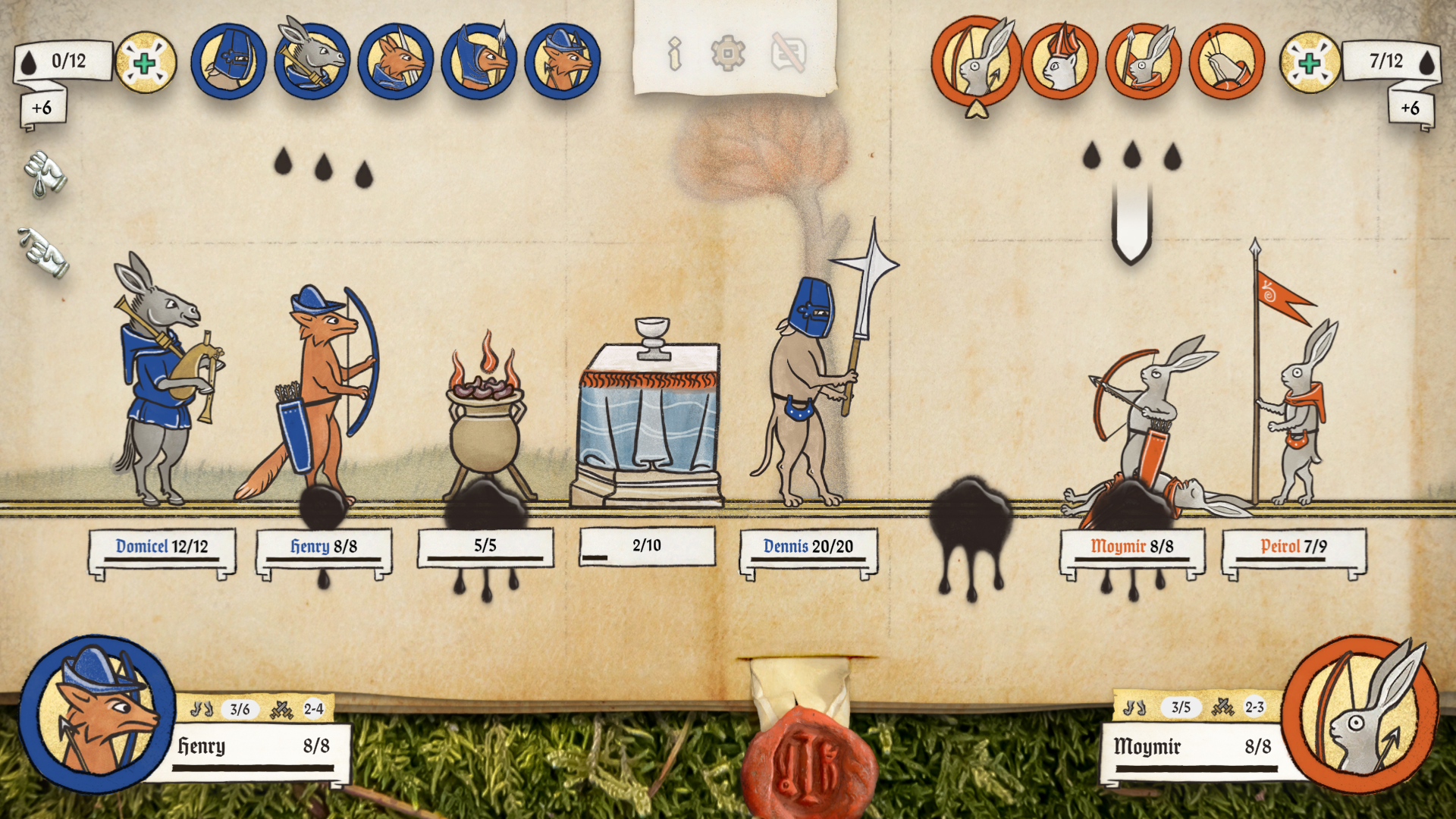
Inkulinati takes its sweet time to get going and for some unfathomable reason, the mostly unskippable tutorial is almost as long as the main campaign. Once you’ve gotten through that, the story is rather enjoyable in its own quirky way. The turn-based affair isn’t for everyone as it moves at a snail’s pace, for the most part, it gives weight to each battle but during a long play session, tedium can set in. That being said, if you’re aware of the plodding nature, this off-beat battler is a rare gem that is both funny and meaningful. The standout of the piece is the medieval styling, which looks as if Terry Gilliam was responsible for putting together the Magna Carta. While I was thoroughly sold on the visuals and humour, there was no better feeling than obtaining the win by using a fart-push combo to dispatch that last opponent. Inkulinati might not be for everyone, but for those who like the strategy genre, then you’re in for a fun time.
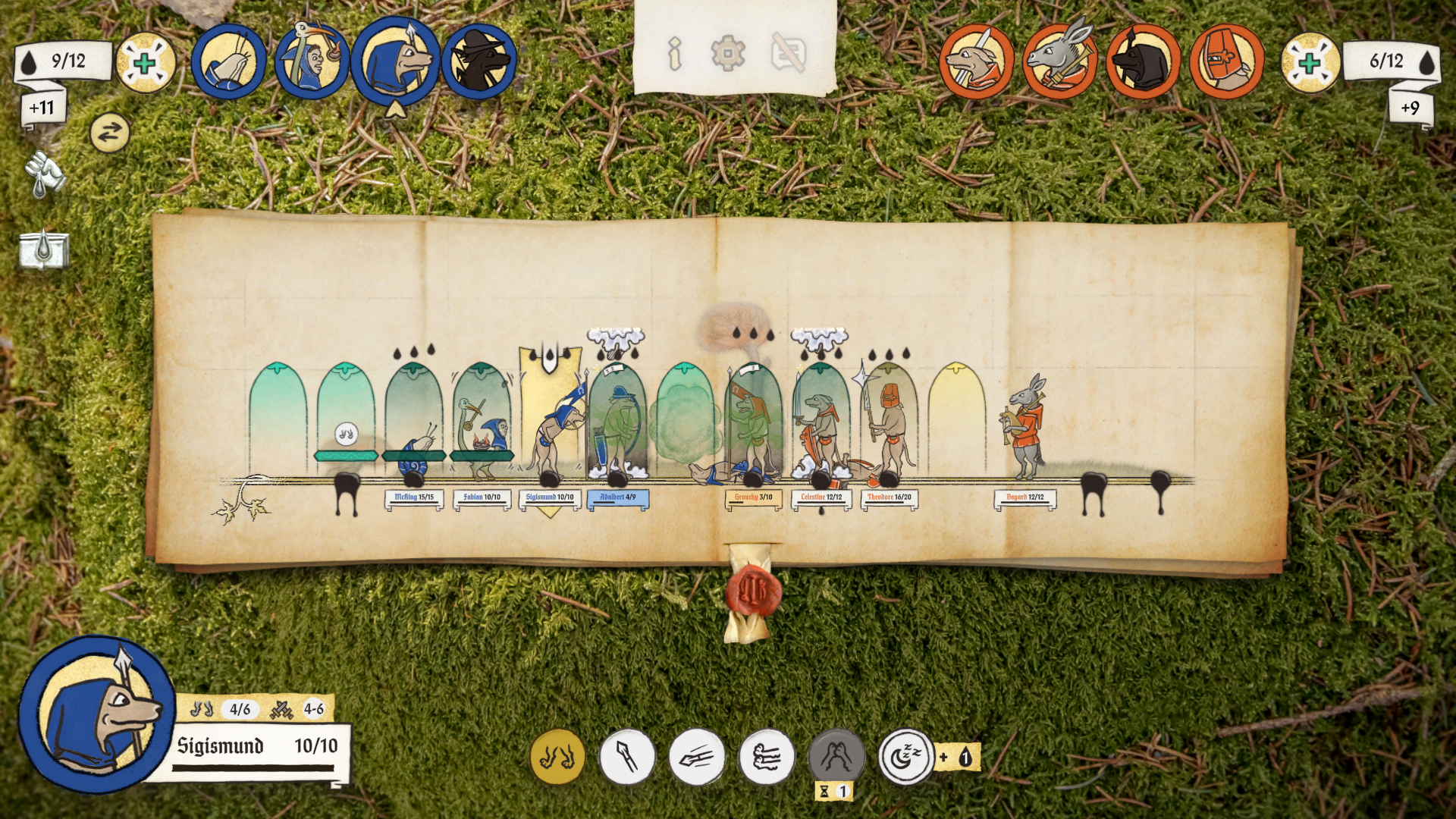
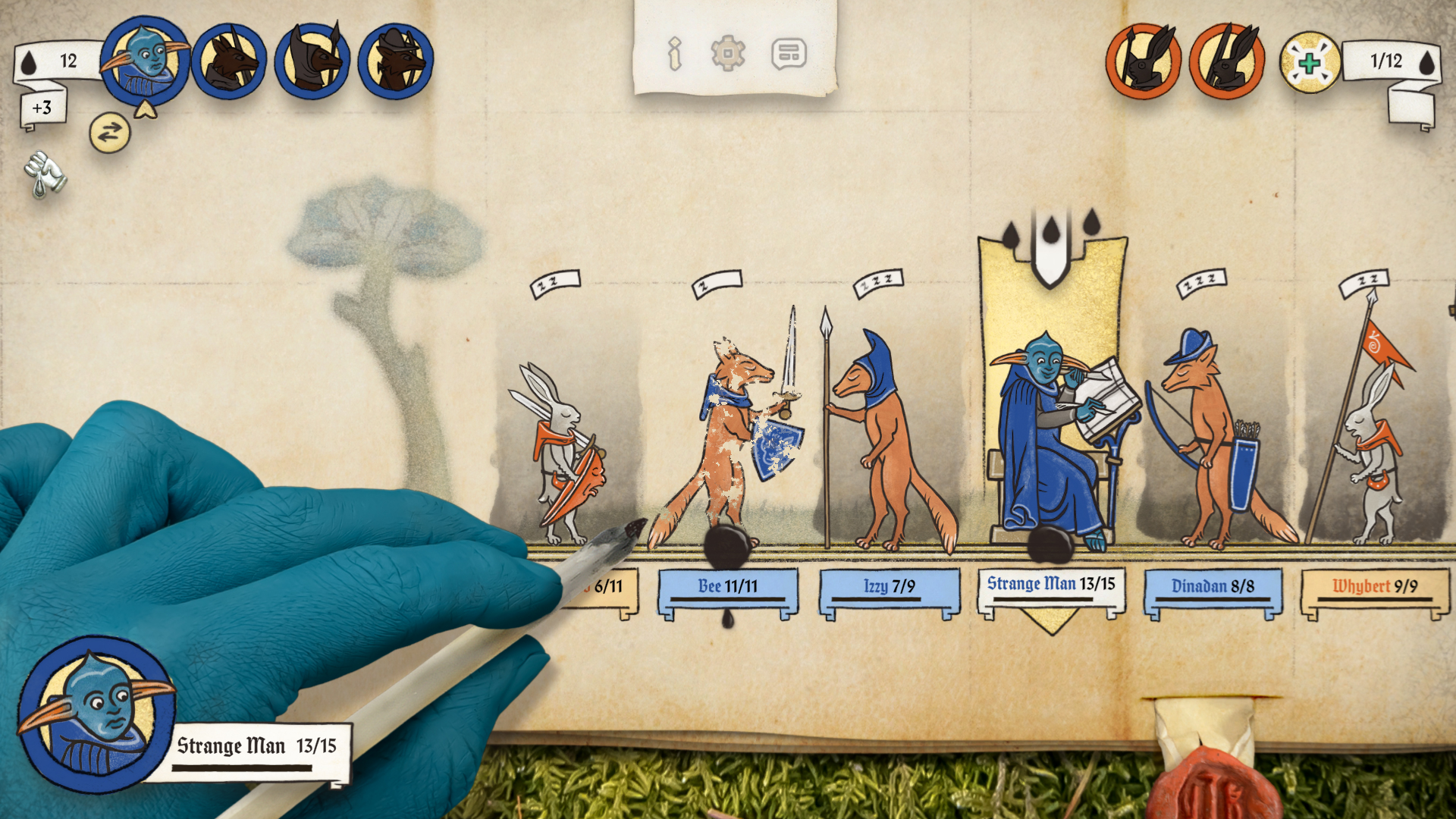

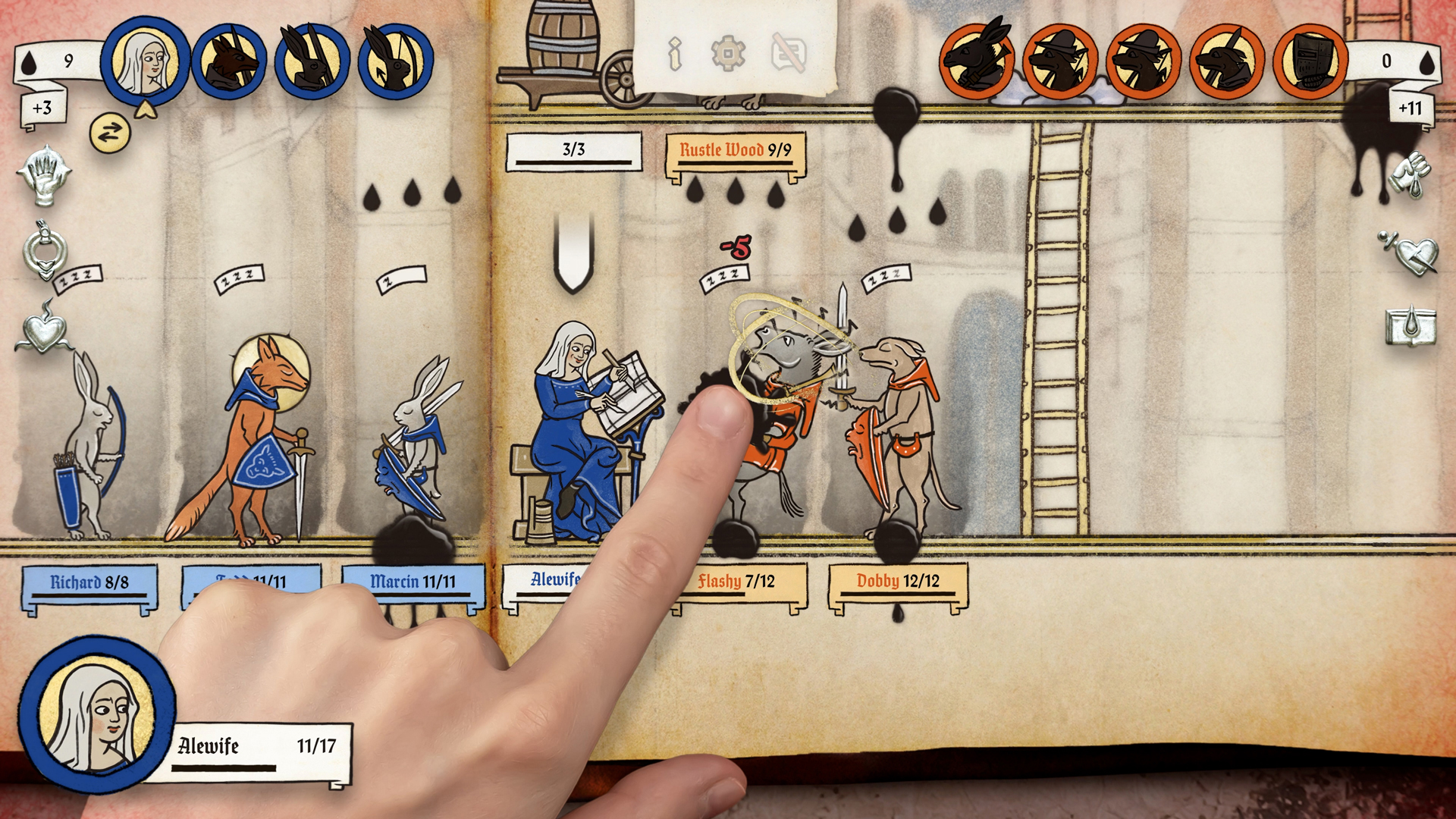

In the interest of full disclosure, VGamingNews was provided with a copy of the game in order to conduct this review.
Thanks for taking the time to read our review. If you’d like to support us further, please consider buying us a coffee!
Worldless
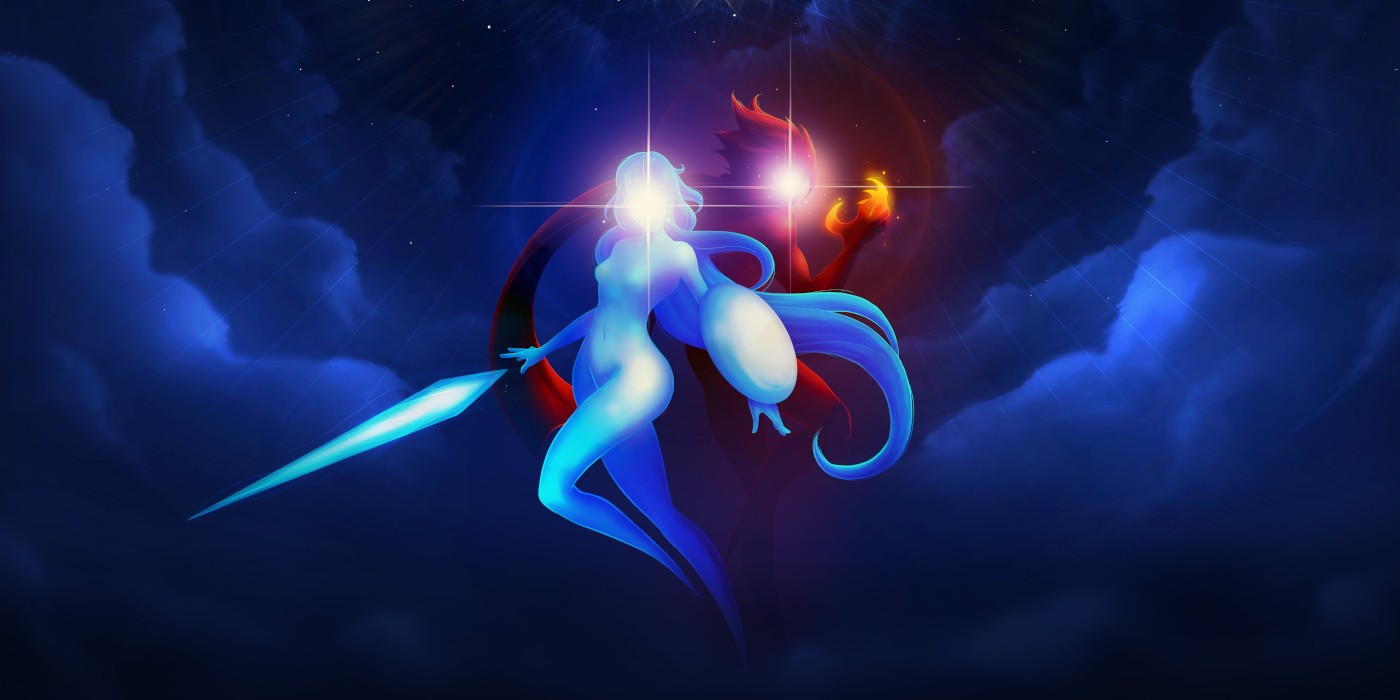

Turn based combat. Does that phrase make you jump with joy or shudder with fear? It really is quite the divisive genre that separates gamers. There are those who enjoy its tactical and methodical nature, taking time to plan out the optimal play. Then there are the others that prefer the faster pace, real time combat that requires quick thinking and adapting on the fly. In comes Worldless, a beautiful 2D action adventure platformer published by Coatsink and developed by No Name Studios. They have created a third camp, a hybrid camp, one that incorporates the foundation of turn based combat, but with engaging elements of real time reactive responses where timing is imperative. Now, as someone who can see both sides of the coin, I relished this style of game. Not only was it the combat system, but also the excellent platforming and gorgeous visuals that drew me in and kept me exploring.
The following review is an abridged version of Tom’s video review which we’ve embedded here:
Wordless is one of those games that doesn’t hold your hand, it encourages you to both discover and interpret the game as you progress. We start our adventure in space, where an initial calm is quickly replaced by an interstellar orange vs blue big bang. Orange then invades blue, kicking off an intergalactic battle through the stars. We take control of our protagonist, which for the sake of giving some identity to an otherwise faceless being, we shall call Carol. And yes, we’ve assumed Carol’s gender based on the artwork on the title screen, with her long hair, slender figure and lady bongos. Carol doesn’t know why she’s here, or what her goals are, and to be frank throughout the course of the game nether did I. The overall story isn’t quite clear, or perhaps there is a deeper meaning behind it all that went right over my head.
At A Glance
| Worldless | |
| Positives | + Innovative turn based and real time combat + Gorgeous minimalist visual and soundscape + Excellent platforming |
| Negatives | – Confusing story, if there is one – The challenge may be off putting for some |
| Overall | 8/10 |
| Played On | Xbox Series X|S |
| Also Available On | Nintendo Switch, PC, PS5, PS4, Xbox One |
| Find out about our scoring policy here. | |
Based on what we’re told from the developers, Worldless is set in a world where polar opposite realities are aligned with a common spark. Players will venture into an abstract setting full of entities with opposing goals. One half is fixated on the virtue of their nature, the other is seeking to exchange it for their demise. Polarities attract, resulting in never ending conflict, and the result is the traumatic process of Absorption which sees their very natures exchange.
You venture back and forth through this metroidvania-lite universe, collecting upgrades and battling baddies with the aim of absorbing them to further upgrade yourself. You could choose to simply defeat them to keep moving on, but you will have to come back and attempt to absorb them to gain upgrade orbs for your skill tree. Throughout Worldless, there are various battles taking place in the background between blue and orange, that not only provide a constant reminder that you are part of a larger war, but also give you subtle hints to certain moves and techniques that you can emulate. There are only a handful of on screen tips to understand the basics of combat, but away from that you are left to figure out how to navigate and battle your way through the various constellations.
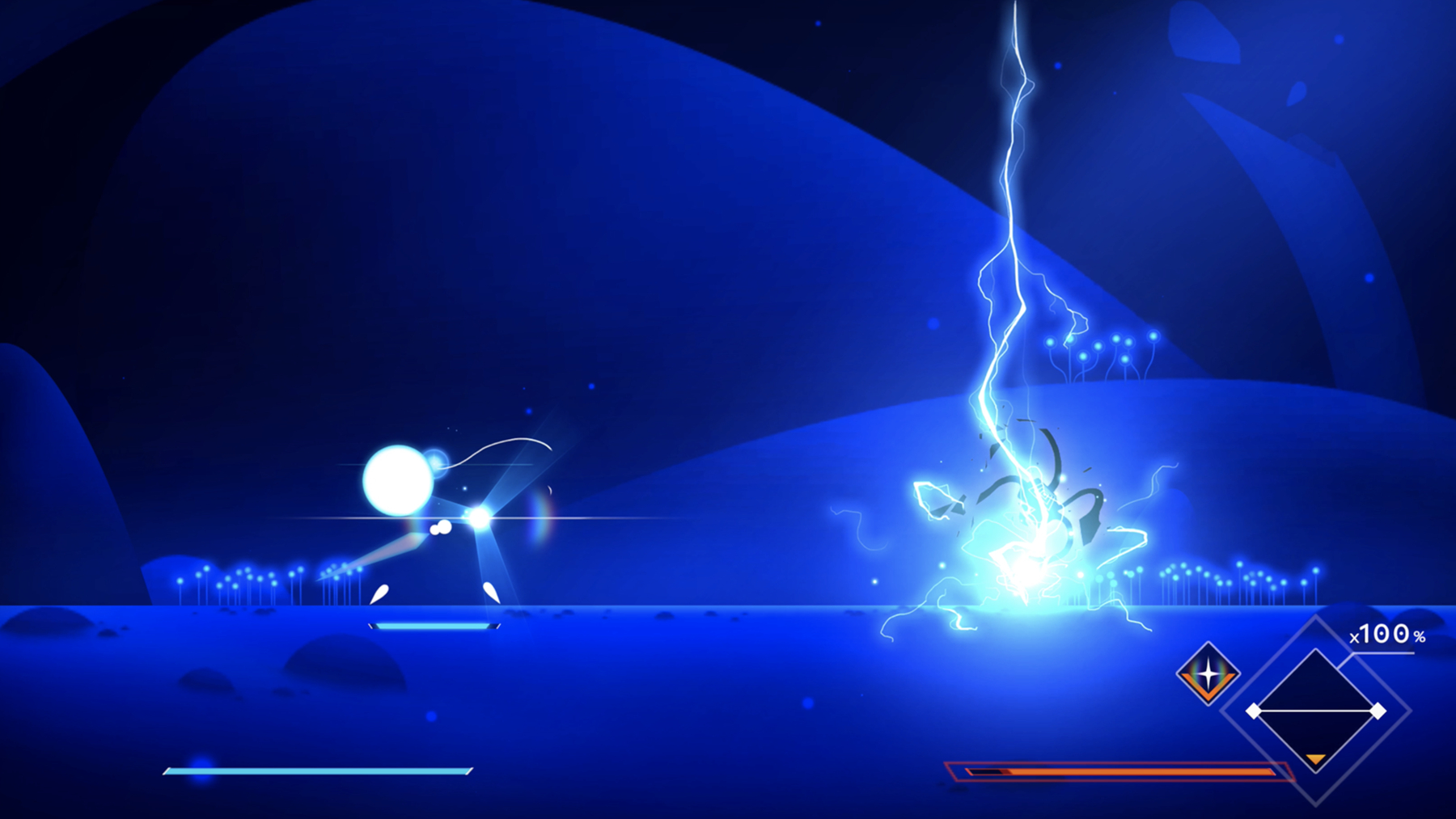
The balance of platforming and combat is done quite well. Most aspects of Worldless are very minimal – the visuals, the soundscape, the map, the character design and even the skill tree. None of this comes at a detriment to the overall experience, because at its core each element is done very well. Each area is clearly different from one another, each with its own palette of striking deep and rich colours. The soundscape is crafted very well to match the tempo and visuals on screen and there were moments, especially in the blue zone, where everything felt very serene. My ears were met with relaxing tones whilst my eyes gazed at a calming ocean blue. Then as you enter into combat, the music kicks up a notch to get you focussed, and if you lose, it seamlessly fades into what it was before.
The combat itself is a simplistic blend of tactics and timing that provides a very refreshing challenge, which increases in difficulty as you progress further and further into the game. As you enter the fray, you and your foe alternate moves within your given time frame. In offence, you switch between melee, ranged and magic attacks, each time looking to unveil their weaknesses. You then use their weakness to increase their absorption meter until you’re ready to flick the switch and embrace your inner Cell from Dragon Ball Z. In defence, using visual cues, pattern recognition and reaction speed, you must hone your parrying skills. In doing so, you can use counter strikes, gain faster absorption progression, and even gain increased attacking time in your next turn. If you fail an encounter, you don’t die or lose anything, you simply get pushed back out of the battle, leaving you to either run in and try again, or go elsewhere and return another time. This meant that the more challenging foes weren’t as frustrating as they otherwise would be, and through quick restarts and perseverance, the enemy moveset became second nature, so being able to parry or dodge their mighty blows feels extremely rewarding. The main downside is that you can’t pause during combat and the number of times I lost due to our cat doing something dumb or gross…
As I mentioned before, Worldless is set amongst a larger war, and in this we quickly establish a nemesis, which we’ll call Barry. Barry is your opposite, he is portrayed as the dark to your light, the fire to your ice, the strength to your speed. At the risk of a spoiler alert, Carol and Barry become allies and in doing so, they combine not only combat abilities but traversal ones as well, and this is where the game’s true potential is unlocked. You are able to seamlessly switch between them to dance around the map, as well as pulverise your enemies and a particular highlight was the secret level, where you are made to activate all of your brain to properly navigate the long and rather difficult parkour section. This unashamedly took longer than it should have, but nothing beats that sweet taste of success when you finally reach the end.
Before you can even consider tackling this though, we need to ensure our duo are completely decked out with their upgrades and abilities. This is where the simplicity of the map also comes into play, as you can see each node is marked showing that there is an orb available, either to pick up or absorb. The upgrade tree is striped back and very clear to see what the move is, the button input and also the type of skill it is. Overall, you’re able to upgrade your melee strikes, your ranged attacks, your varying magical abilities, and your defence capabilities.
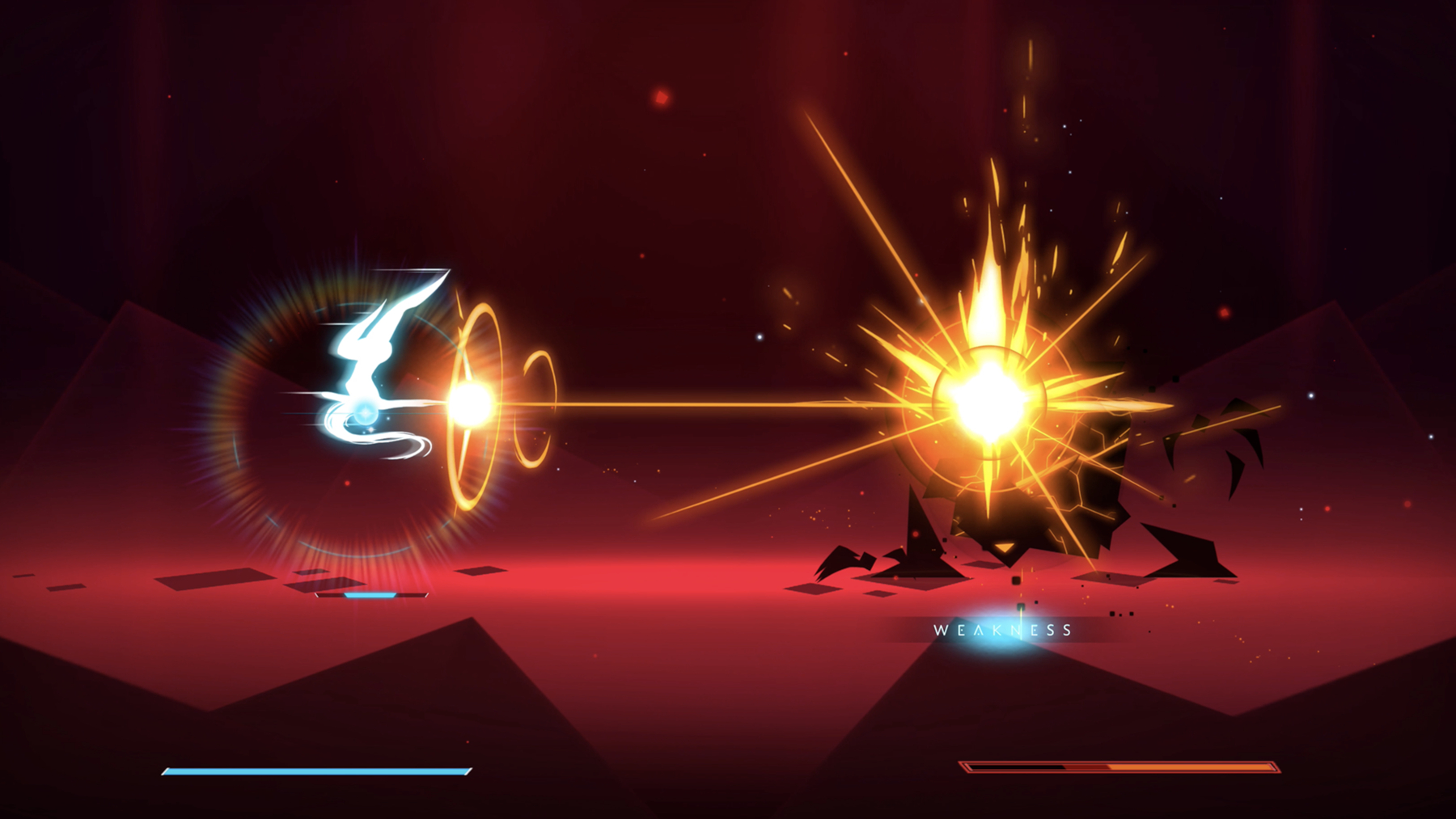
I completed Worldless on the Xbox Series X with only a couple of issues in my 11 hour run. One was a crash as I was changing areas, and the other was a glitch after a fight where I was stuck in combat mode after winning. Otherwise the game played beautifully, and even after a bizarre ending, I found myself trawling back through to collect anything I missed. Overall, although I wouldn’t count Wordless as one of my favourite 2D games, it’s one that isn’t afraid to try new things, and is able to do so with a gorgeous minimalist approach. With its harmonious blend of colours and sound and the mix of turn-based and real time combat, much like Carol and Barry, the end result is a coming together that leaves you satisfied, but perhaps also leaves you wanting a little bit more.

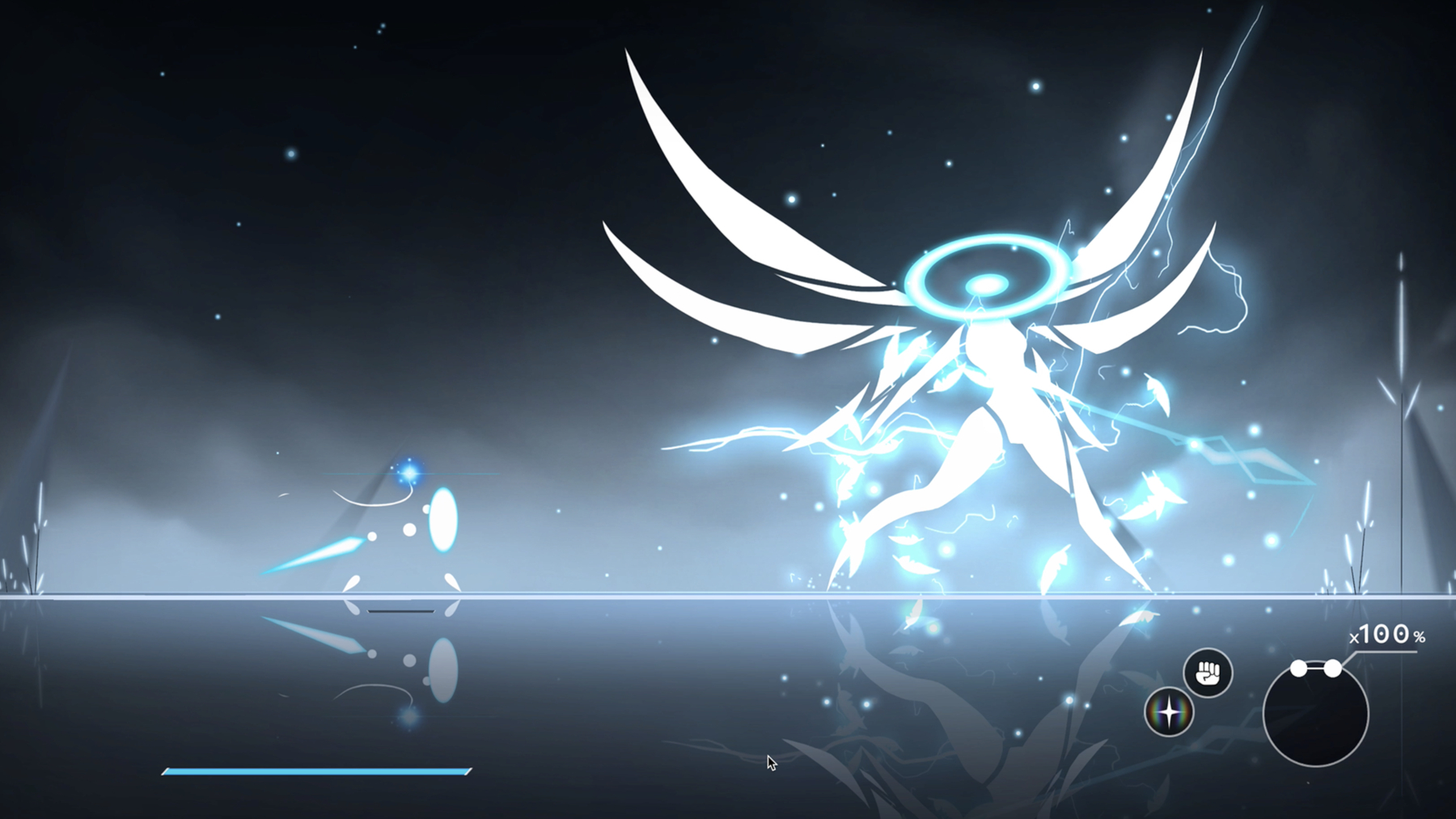
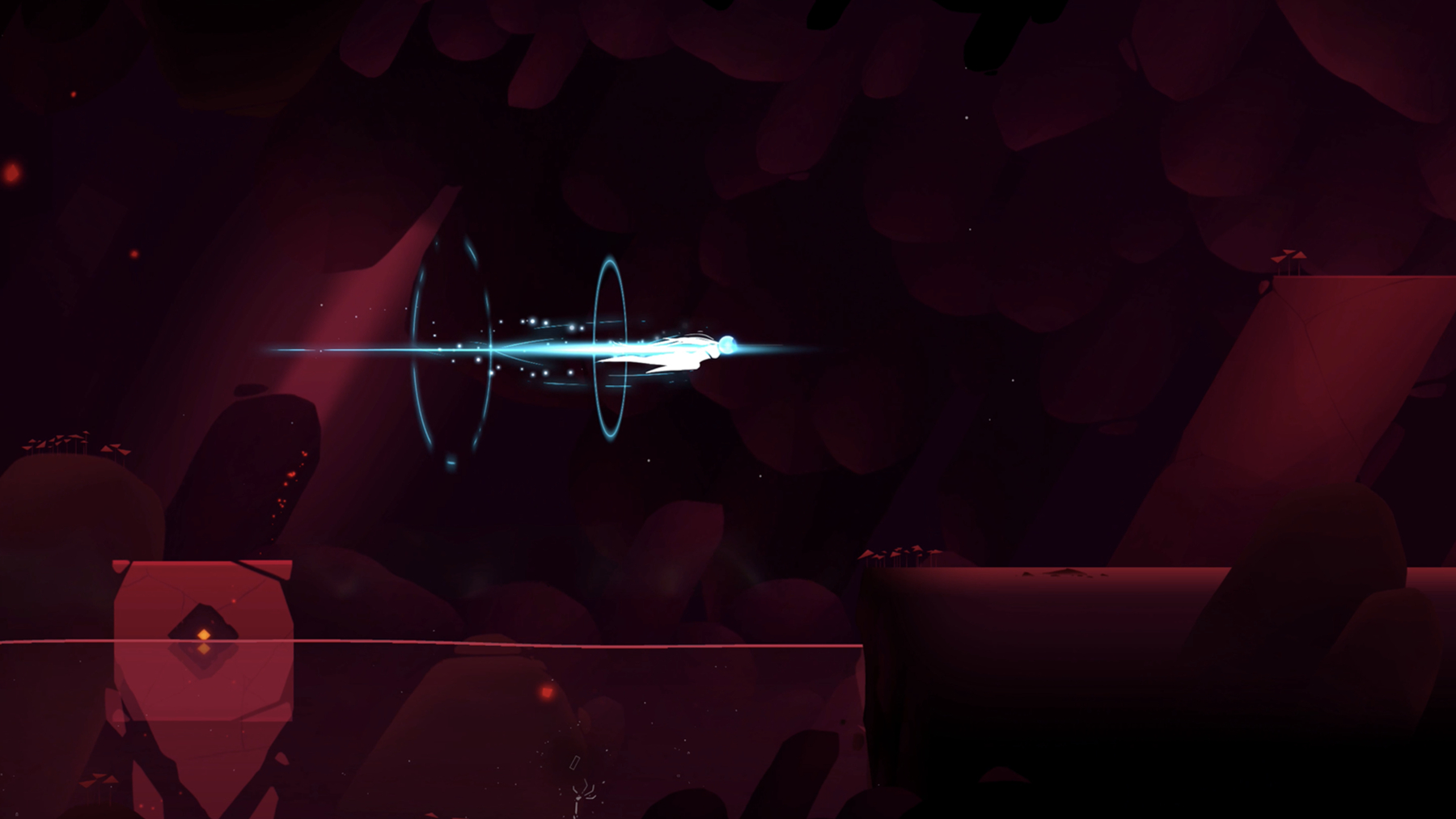

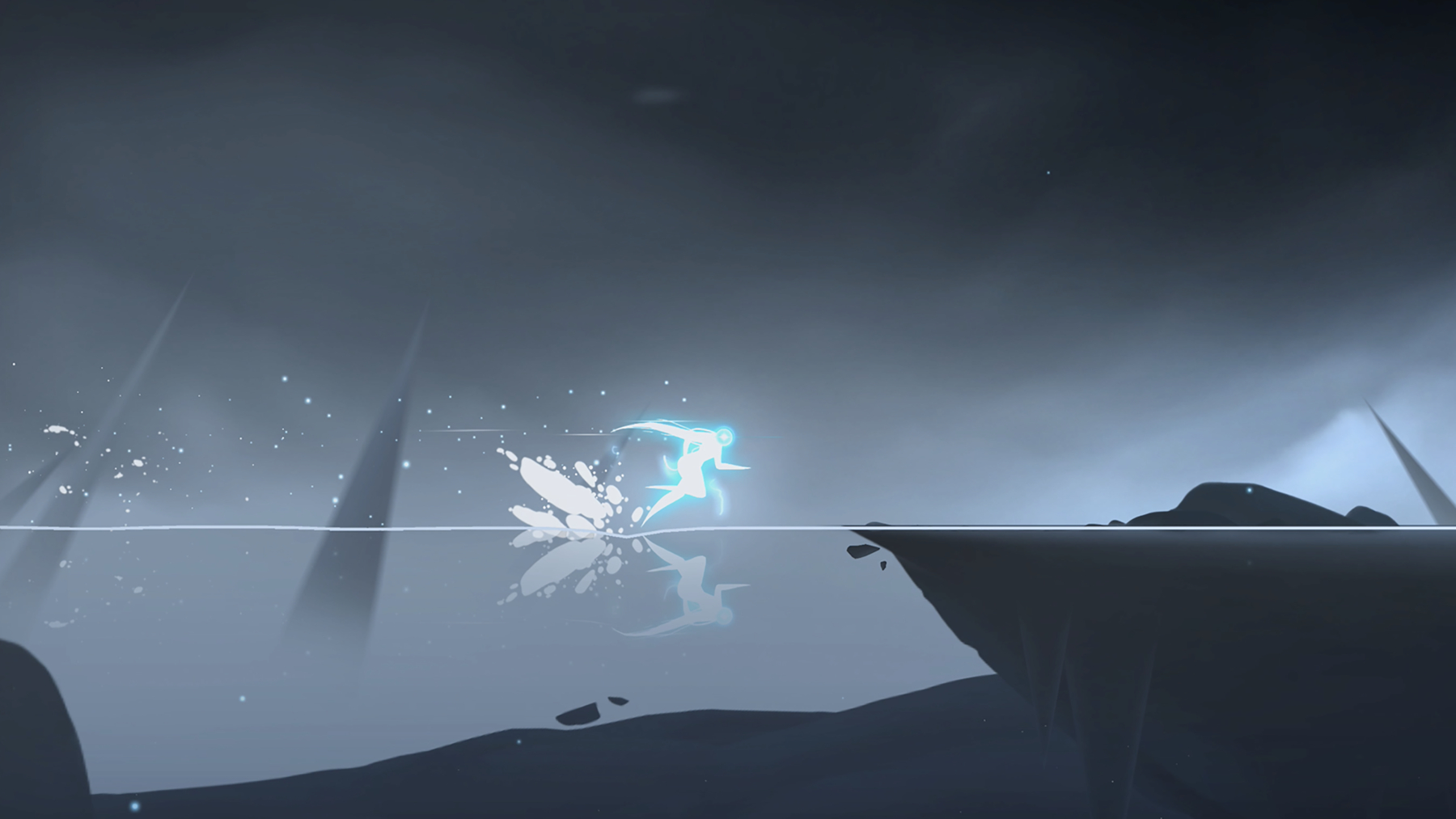
In the interest of full disclosure, VGamingNews was provided with a copy of the game in order to conduct this review.
Thanks for taking the time to read our review. If you’d like to support us further, please consider buying us a coffee!
Ghostrunner 2
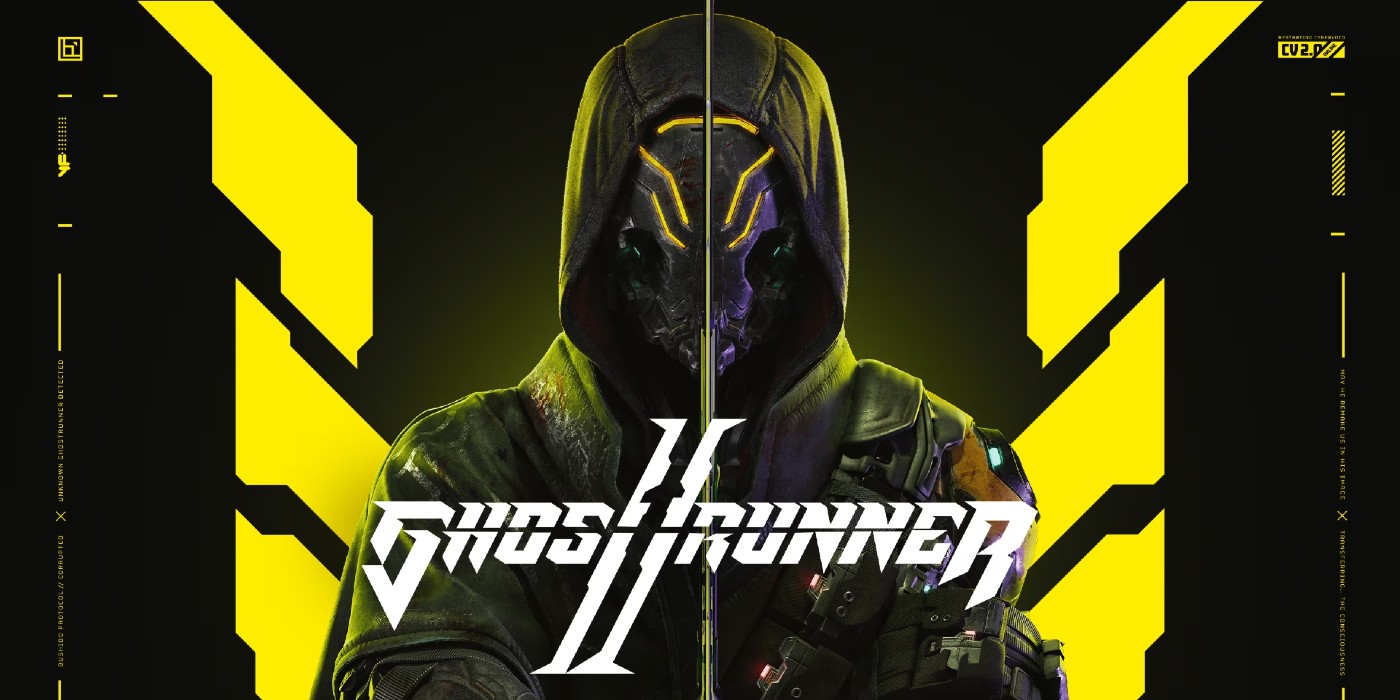

2023 has been a gaming treasure trove so far with incredible titles like Spiderman 2, Tears of the Kingdom and Baldur’s Gate 3, and after experiencing this high octane, thrill of a game, I believe Ghostrunner 2 deserves its own spot on that list. Developers One More Level have managed to build on the foundations of what made the first game so good, allowing you to wall run, grapple, glide and slice through bad guys, feeling like the ninja you’ve always wanted to be. With a host of new upgrades and abilities, Mirrors Edge inspired parkour, Cyberpunk-style visuals and head bopping soundtrack, Ghostrunner 2 is a brilliantly challenging action game that had me hooked from the word go.
This is an abridged version of my video review, which is embedded below for your enjoyment.
At A Glance
| Ghostrunner 2 | |
| Positives | + Seamless fast paced combat and freerunning + Excellent head bopping soundtrack + Become a ninja from the safety of your sofa |
| Negatives | – Story presentation could be better – HUB area can distort the pacing somewhat – Some lacklustre character visuals |
| Overall | 8/10 |
| Played On | Xbox Series X|S |
| Also Available On | PC, PS5 |
| Find out about our scoring policy here. | |
One year on from the events of the first Ghostrunner, you return as our protagonist Jack, where your actions at the end of the first game has left a power vacuum in the city of Dharma, which several different factions are trying to fill. This includes a band of unique and well-designed ghost runners who are quickly established as the antagonists, in turn setting up some excellent boss fights throughout the game. A ghostrunner is the perfect combination of flesh and code, a human/machine hybrid that in Jack’s case, has taken a leaf from the Terminator and indeed “come back”. There is also a recap section of the first game in the extra’s menu, which was a very helpful refresher. We are reminded quickly that simply cutting the head of the hydra does not mean the job is done, but rather to prepare yourself for what grows next. The lore itself is interesting, however I felt that it wasn’t presented as well as it could have been, leaving me feeling that the story is not quite so polished.
The gameplay however is where Ghostrunner truly shines. In this one hit-kill-or-be-killed gameplay loop, you are tested in not only mechanical skill, reaction speed and ingenuity, but also your patience. If, and when, you die, you can instantly spawn back into the action with the push of a button, either trying to better the original plan, or reassess and try something different. Whether it be an alternate path, using one of your abilities in a different way, or using one of your ultimate powers to wipe out a group of frustrating baddies, there is always that “one more go” mentality that leaves you highly satisfied when you eventually pull it off. Each time you enter the fray, the area is cleverly designed to allow you to almost effortlessly dance through combat like a Bob Ross work of art, it’s incredible when your fingers flow around the controller in sequence as poetry unfolds on screen.
It’s not always about the action though, as there are plenty of free-running sections that also utilise the same abilities you use in combat. These parts of the game segment the action very nicely, and are also the times when we get the majority of the dialogue between the characters, as there is not a chance you’re paying attention to them while trying not to die for the 20th time while fighting. The cybervoid makes a reappearance and allows for some very gratifying moments when you manage to use several abilities in sequence in order to successfully navigate to the end. Some of the best sequences of the game in my opinion come from when you discover the motorbike, putting you in the seat of the batcycle, zooming through the city, blasting, slicing, and soaring through the skies.
Unlocking new abilities allows you to stylishly and seamlessly combine them; a cool example is being able to throw shurikens that kill weaker enemies or stun the stronger ones and turn them into grappling points – this allows you to flaunt a little more during combat and help you navigate the map more quickly and easily too. There’s also the shadow skill, that creates a duplicate of yourself whilst you turn invisible. These very cleverly serve as tools in battle but also in exploration, where both free running and combat can be treated as puzzles in figuring out how to best use your skills to overcome the challenge in front of you.
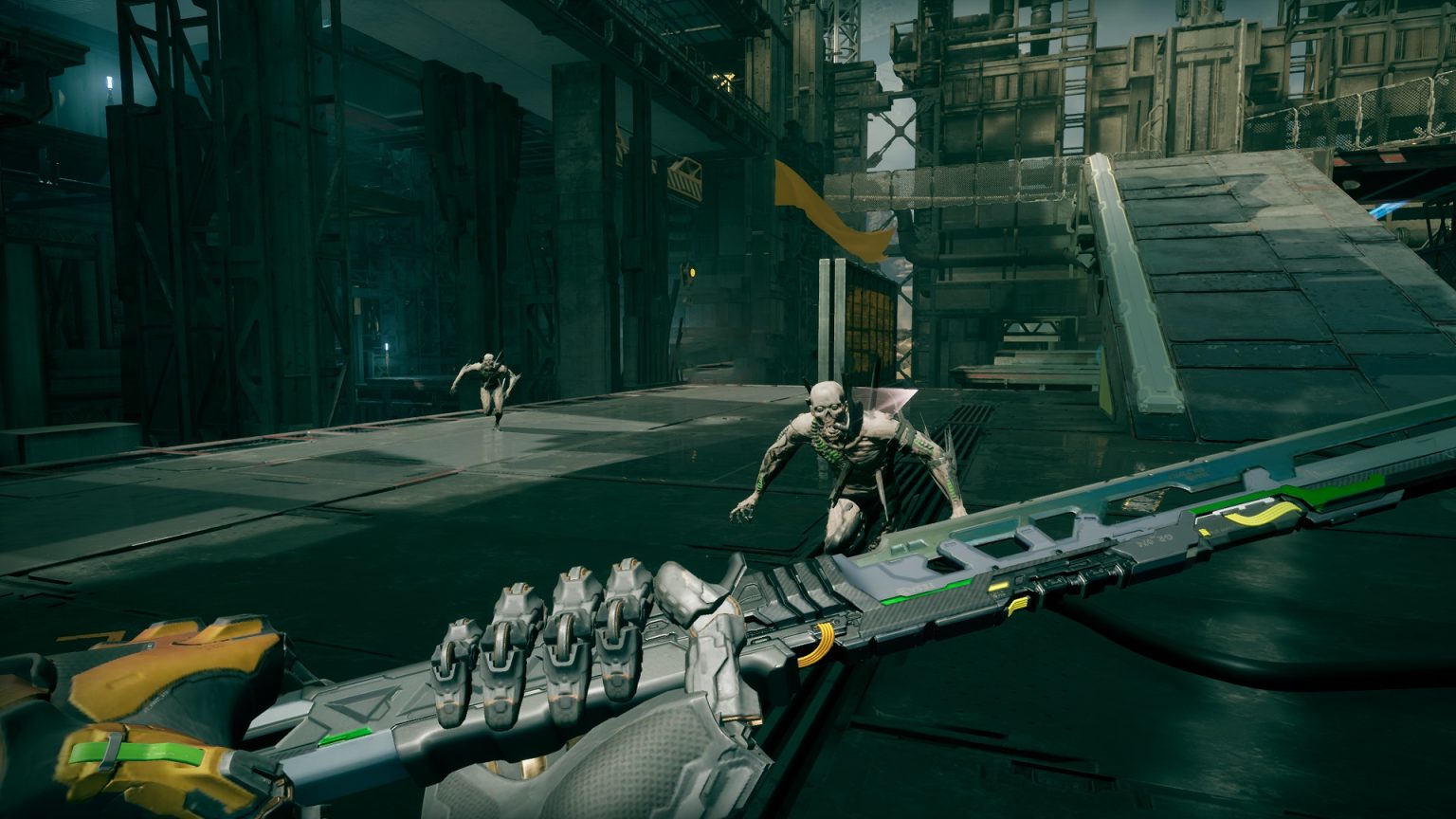
The upgrade system in Ghostrunner 2 is an improvement on that of the first game, where you purchase upgrade chips and install them onto your motherboard. You unlock more space on the board, and more points to use, by finding the many memory chips scattered throughout the levels. Depending on your playstyle, you can either focus more on your sword skills, your traversal kit, or perhaps if you’re feeling saucy, remove your ability to block to double your combo counter and invest into the Flow skills. Being able to go back to a level you’ve completed with a whole new toolbelt and tackle it differently is a great way to add variation and challenge to the game.
A good number of collectibles set out around each level provide an extra layer of exploration to reach. These aren’t just memory shards but audio logs, artifacts, and cosmetics for your cybernetic arms and sword. You can see how many you’ve collected at the end of each level, and if you miss any – fear not, as you’ll unlock the handy dandy level select. The trouble is, as much as I enjoy collecting, the need to do so goes against the narrative of what Ghostrunner 2 wants to achieve. The game is designed for you to blitz through the level as fast as possible, in a flow state of endorphins, so unless you plan on going through the game again, you’re very likely to miss a lot.
Along with the collectibles, there is also the rogue runner minigame, where you are given preset challenges on a roadmap of either parkour or battle arenas with a set number of lives. This mode sees you stripped of your usual abilities, unlocking them in part or gaining extra lives as you progress towards the end. The rewards for these are more cosmetics for Jack to strut his stuff.
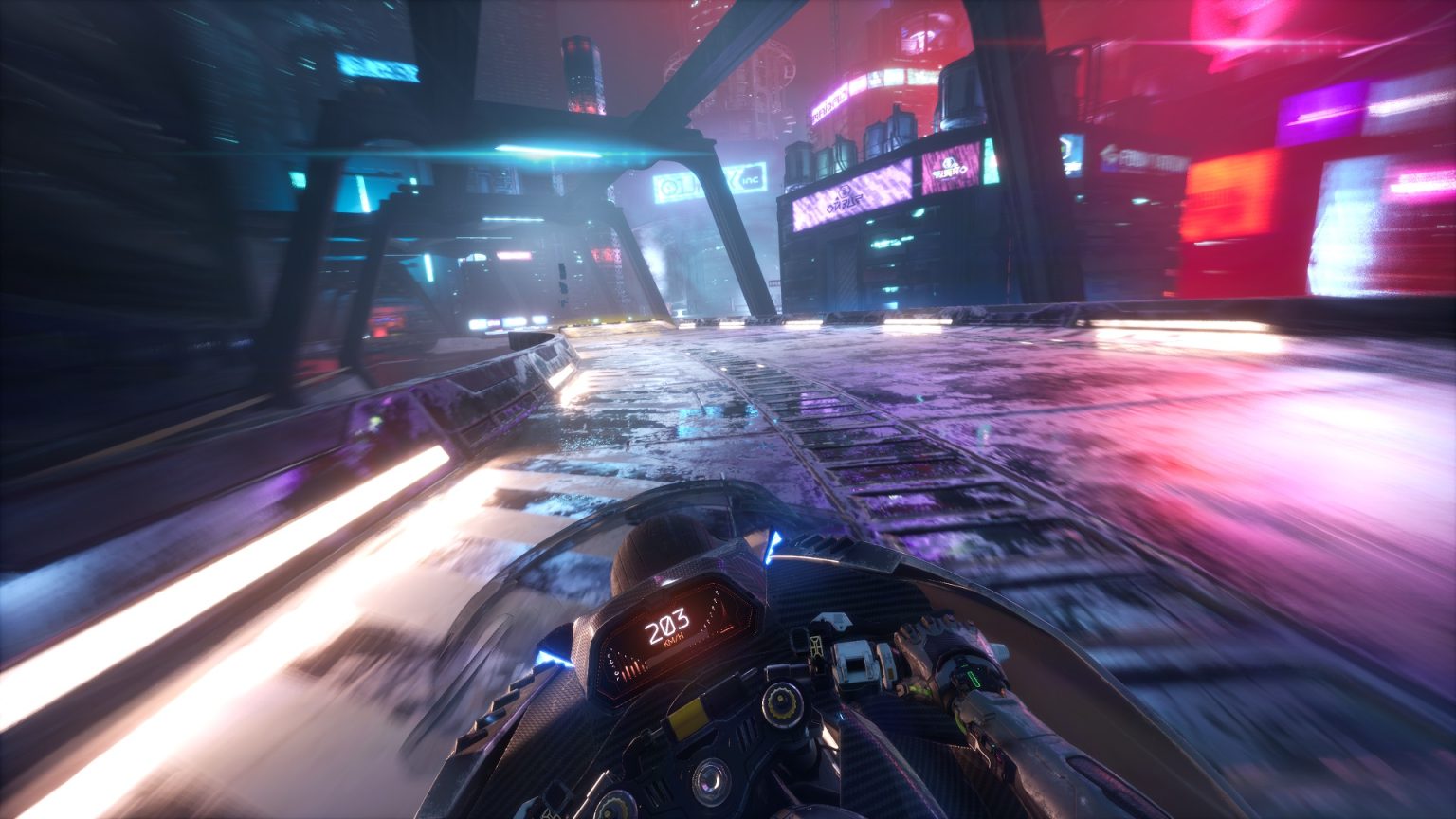
Between each level during the campaign, you return to a hub where you can talk to your team, purchase upgrades, and take a breath as you make a well-deserved cup of tea. The characters you meet are both old and new, each one decently voice acted. I particularly enjoyed the dry and blunt humour that occasionally comes from our hero, although I did feel that I was getting relentlessly bullied during the boss fights. Some criticism I have though stems from the design of the good guys, as most feel lacklustre, and the facial expressions don’t match with the feeling of the dialogue. There are times as well where said dialogue can feel a tad awkward with the unnatural pauses between options. The hub of Ghostrunner 2 was a bit of a double-edged sword for me. On one hand it did help flesh out the characters, but on the other I just wanted to run past them to start the next level to continue the high-speed pace. Your pals do have their uses even if you ignore them, like when they make you a winged suit to take your recklessness to the next level.
The aesthetic is another sticking point. The city of Dharma is gorgeous, with bright neon lights and vibrant colours as you dance around the screen. But there’s a segment of the game in the outskirts of the city that seems to take a 180; where you’re met with 50 shades of grey, and not the fun kind. It makes sense with the area trying to reflect a dystopian environment, but for me it just felt a bit flat. Regardless, the head banging synth wave music that accompanies the action elevates the gameplay, and in many ways reminds me of Hotline Miami.
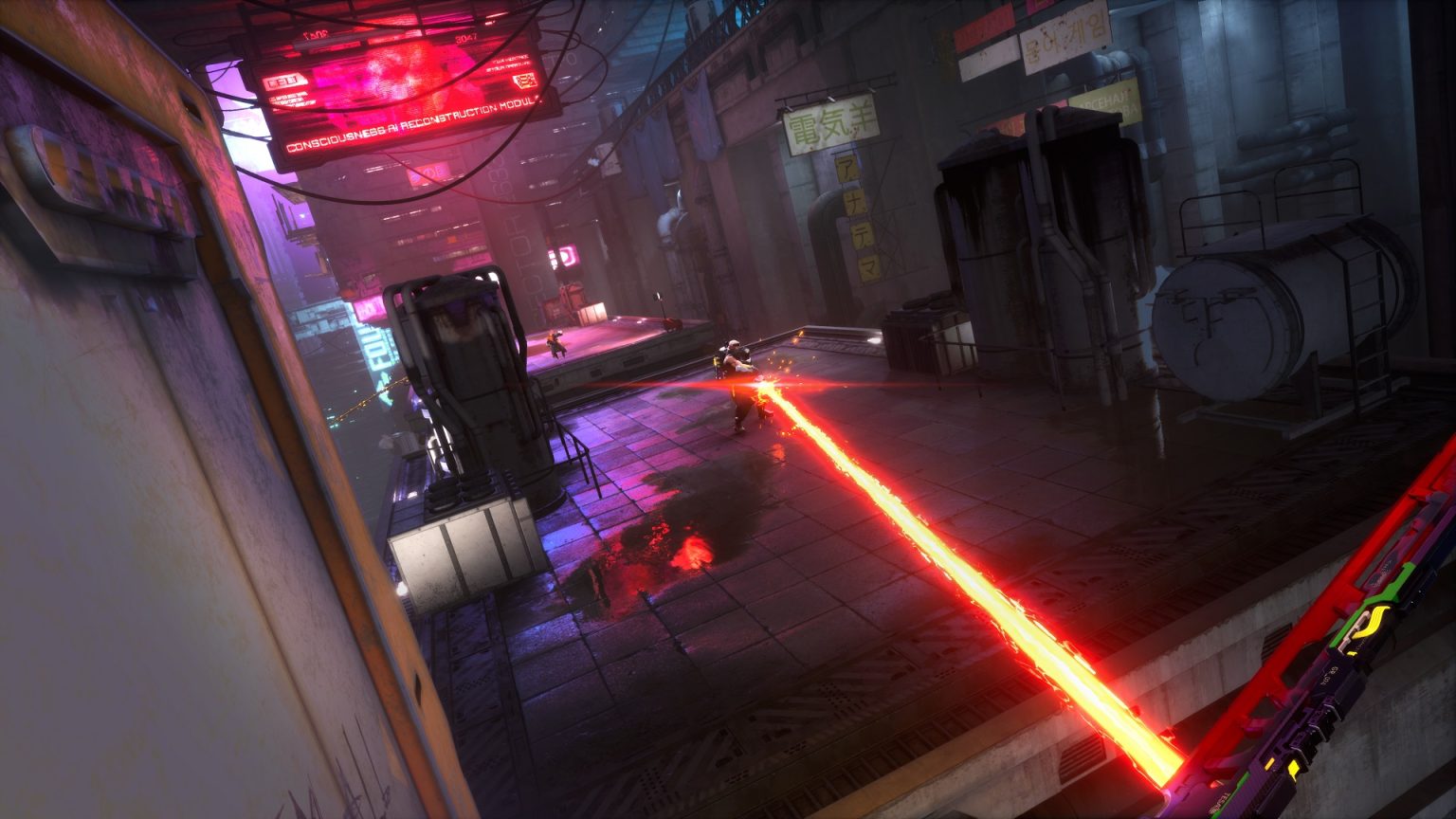
I completed Ghostrunner 2 on the Xbox Series X and I encountered very few issues with performance, counting on one hand the number of times there were noticeable frame drops. The time to credit roll was around 10 hours, not including all the extras. That is if you’re not a speed runner, who I’ve seen have already conquered the game in a tenth of that time.
All in all, Ghostrunner 2 is a blast, One More Level has done an amazing job at creating a sequel that is smoother, bigger, and faster than its predecessor. It’s a clean and streamlined experience that excels in its vision, fuelling not only the adrenaline but the need to dive back in again and again to master the blade. That isn’t to say that it’s not without its flaws, but if you’re looking for a badass dynamic action game to test your mettle, look no further.
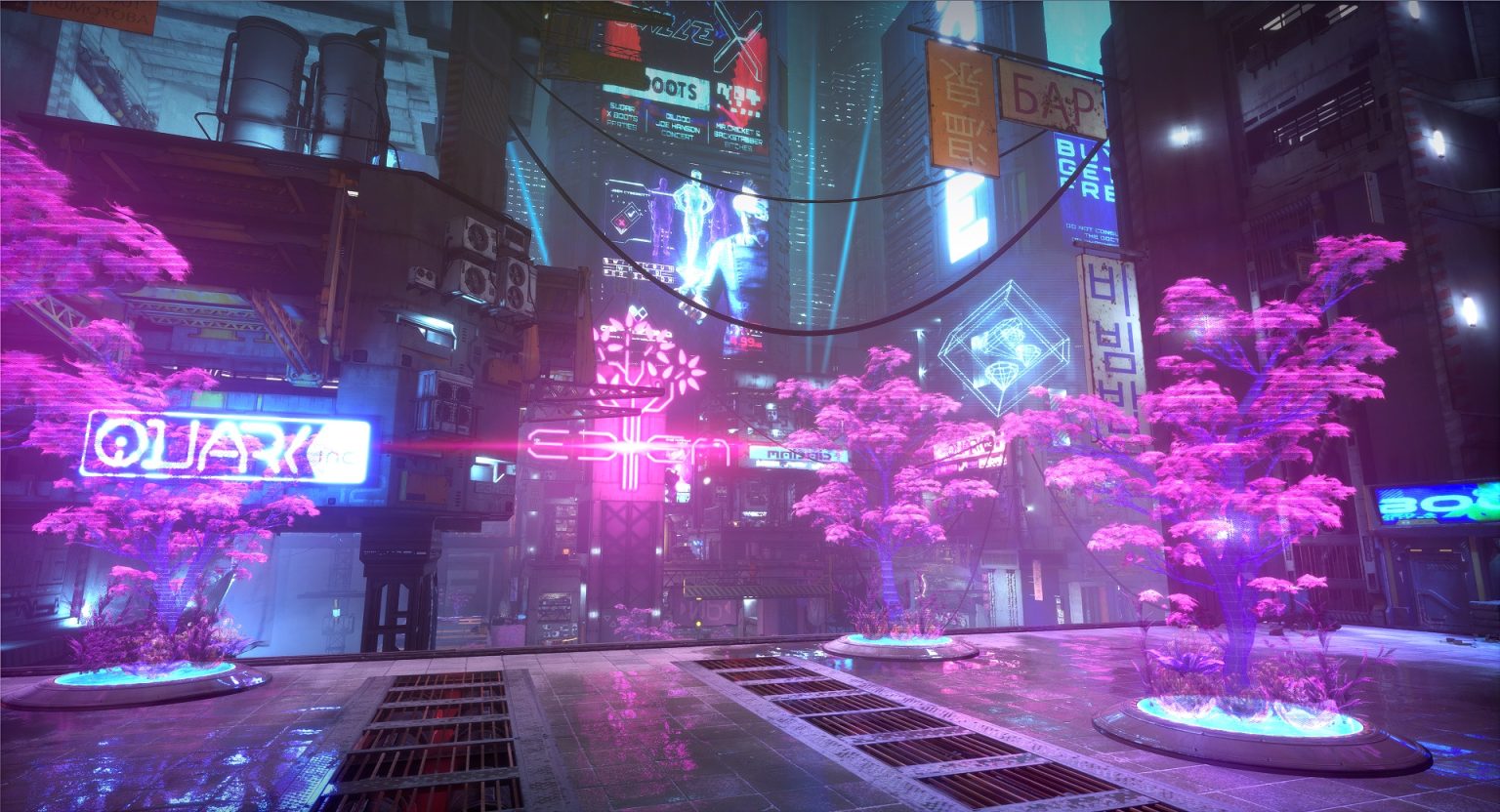

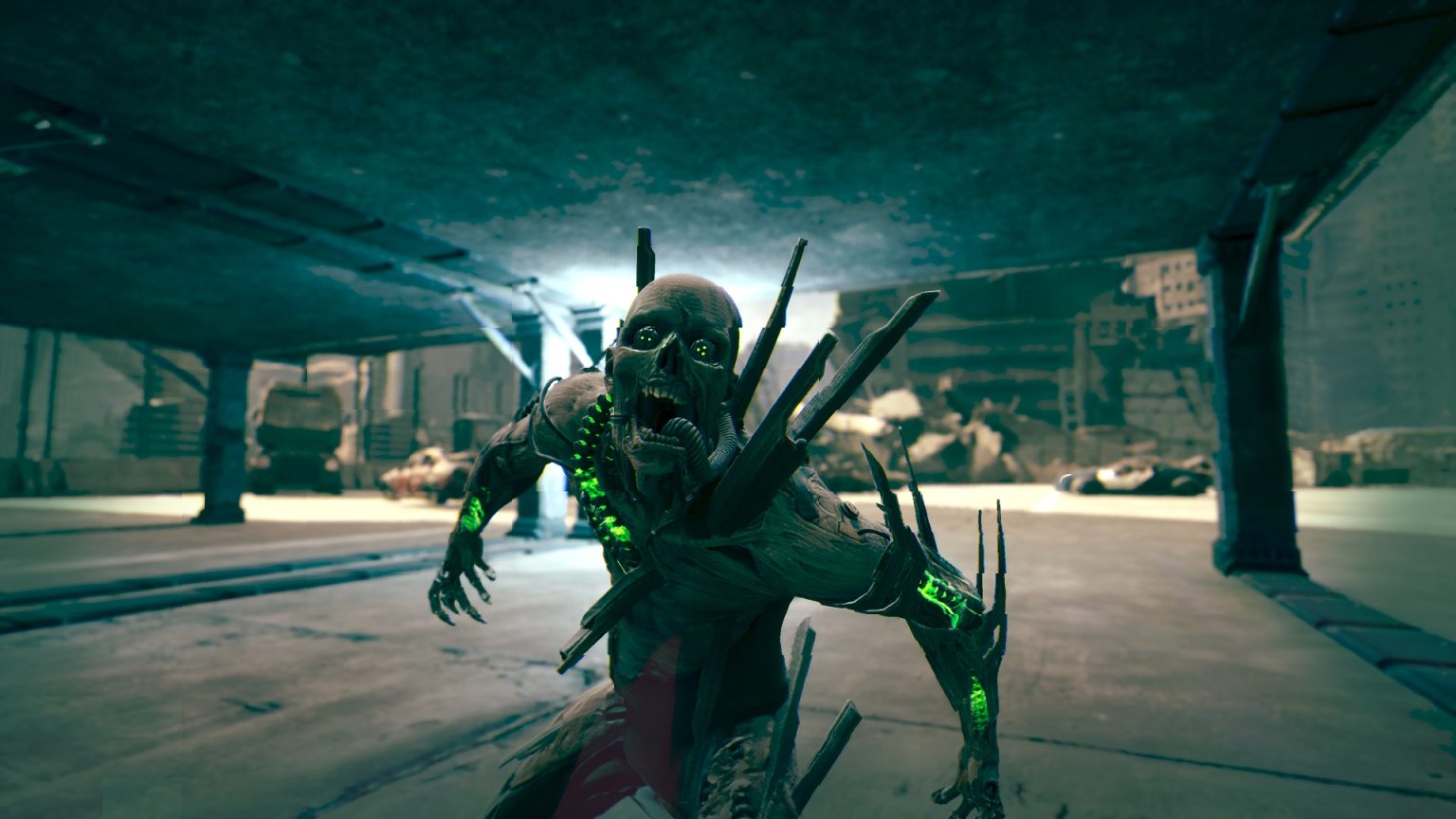


In the interest of full disclosure, VGamingNews was provided with a copy of the game in order to conduct this review.
Thanks for taking the time to read our review. If you’d like to support us further, please consider buying us a coffee!
Terminator Resistance Complete Edition
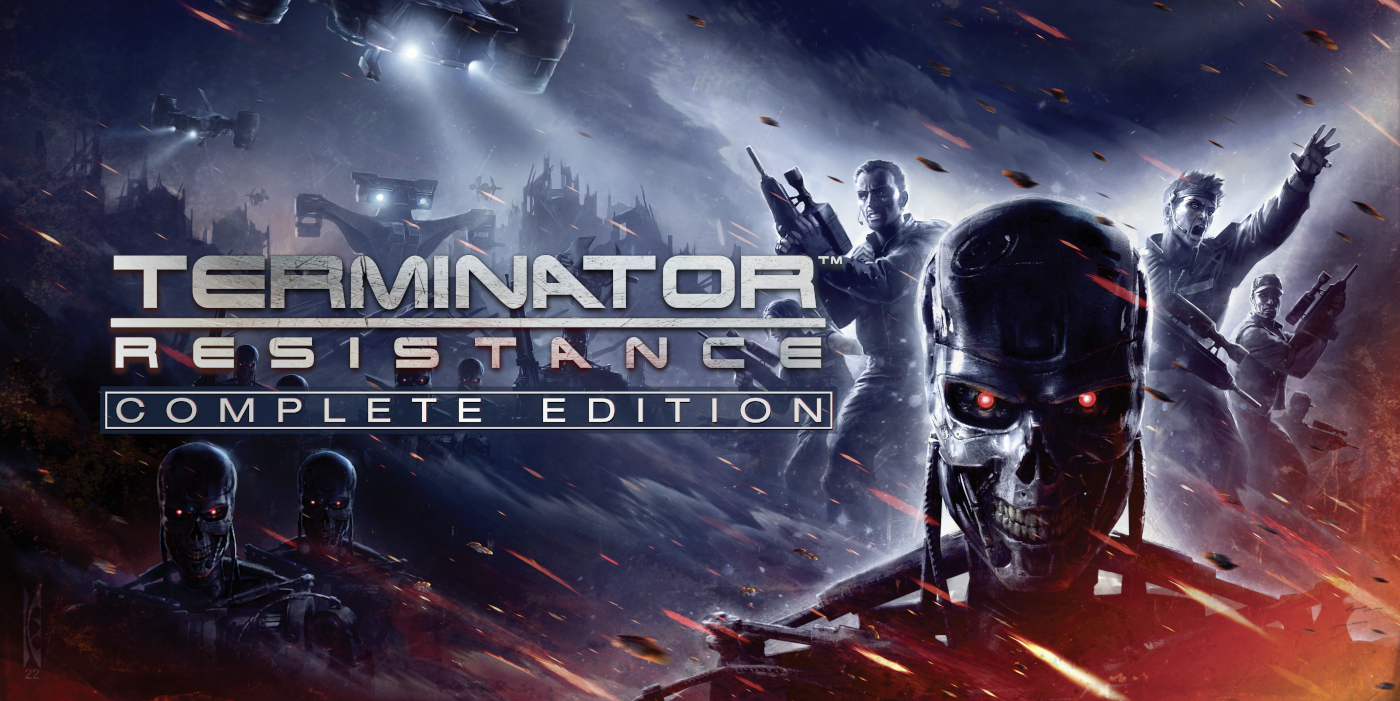

August 29 1997, also known as Judgement Day, is a day that will go down in history. It was when the artificial intelligence called Skynet activated and changed the world. Shortly after coming online, Skynet took over the running of all of the military defences in the United States, eliminating the need for humans. As we had become a redundant part of the programming, the machines sought to destroy us and launched nuclear bombs. As the enemies of the USA retaliated, so began the eradication of the human race. In the years that followed, the remaining people banded together to form a counter-offensive but Skynet was waiting, creating their own soldiers, the Terminators; skeletal machines that are brutally efficient at taking down their targets. The following is an account of what happened during the Future Wars, when one lone soldier decided to rise up against the machines and bring the fight to the machines in a place formerly known as Pasadena, California. This archive is known as Terminator Resistance.
At A Glance
| Terminator Resistance: Complete Edition | |
| Positives | + Stealthy and terrifying start + Depth of characters and story + Great additional content |
| Negatives | – Descends quickly into mindless shooter – Bland, Xbox 360-esque visuals – Dumb AI (ironically) |
| Overall | 6/10 |
| Played On | Xbox Series X|S |
| Also Available On | PC, PS5 |
| Find out about our scoring policy here. | |
Originally released in 2019 for the PS4 and Xbox One, Terminator Resistance was developed by Teyon, whose only other game was another 1980s movie franchise, Rambo. Terminator Resistance is set during the “Future Wars” of 2030, where the machines are close to stamping out humans once and for all. From a continuity point of view, Resistance expands on the first two films in the franchise and ignores everything else – a piece of advice I’d give to anyone, frankly. In the first-person shooter, we take the body of Private Jacob Rivers, a member of the human resistance who has been marked for termination by the menacing Skynet. Being bestowed such an accolade, Rivers has to work with the Resistance to launch a counter-offensive before the machines finish the job they started thirty years prior.
I started my journey through the ruined streets of Pasadena, California, a place that has been devastated by the War. Being placed in the shoes of someone who wasn’t John Connor or Kyle Reese felt refreshing. While they certainly exist in Terminator Resistance, being relegated to passing characters allowed Teyon to focus on something more grounded. The first few levels of the dystopian future are some of the most tense scenes I’ve played in a video game for a while. The T-800s, in their pure skeletal forms, are introduced almost immediately, patrolling the area and hunting down any human they spot. At this point Rivers has no way of confronting them; his weaponry is ineffective and his skill levels simply aren’t high enough. There are smaller robots which can be dispatched with a basic pistol, but weapons are ineffective against the big boys and if I was spotted, I was hunted down until there was nothing left.
The early levels induced a heart-pounding experience as I had to plan my way through a large map, scoping out cover and making sure I wasn’t spotted. This was very reminiscent of Alien Isolation, where you are constantly hunted and looking to survive, rather than win. It came to a head early in the game when I visited the same hospital where Sarah Connor was held in Terminator 2. It was crawling with those machines, derogatorily called Tin Cans. Without Arnold to come in to rescue me, I had to memorise the patrol patterns, manage my decoy tools and patiently wait until the area was clear before moving on. With such a perfect start, I was hopeful that Terminator Resistance would be more than a mindless shooter. Unfortunately, it wasn’t long before things started going south.
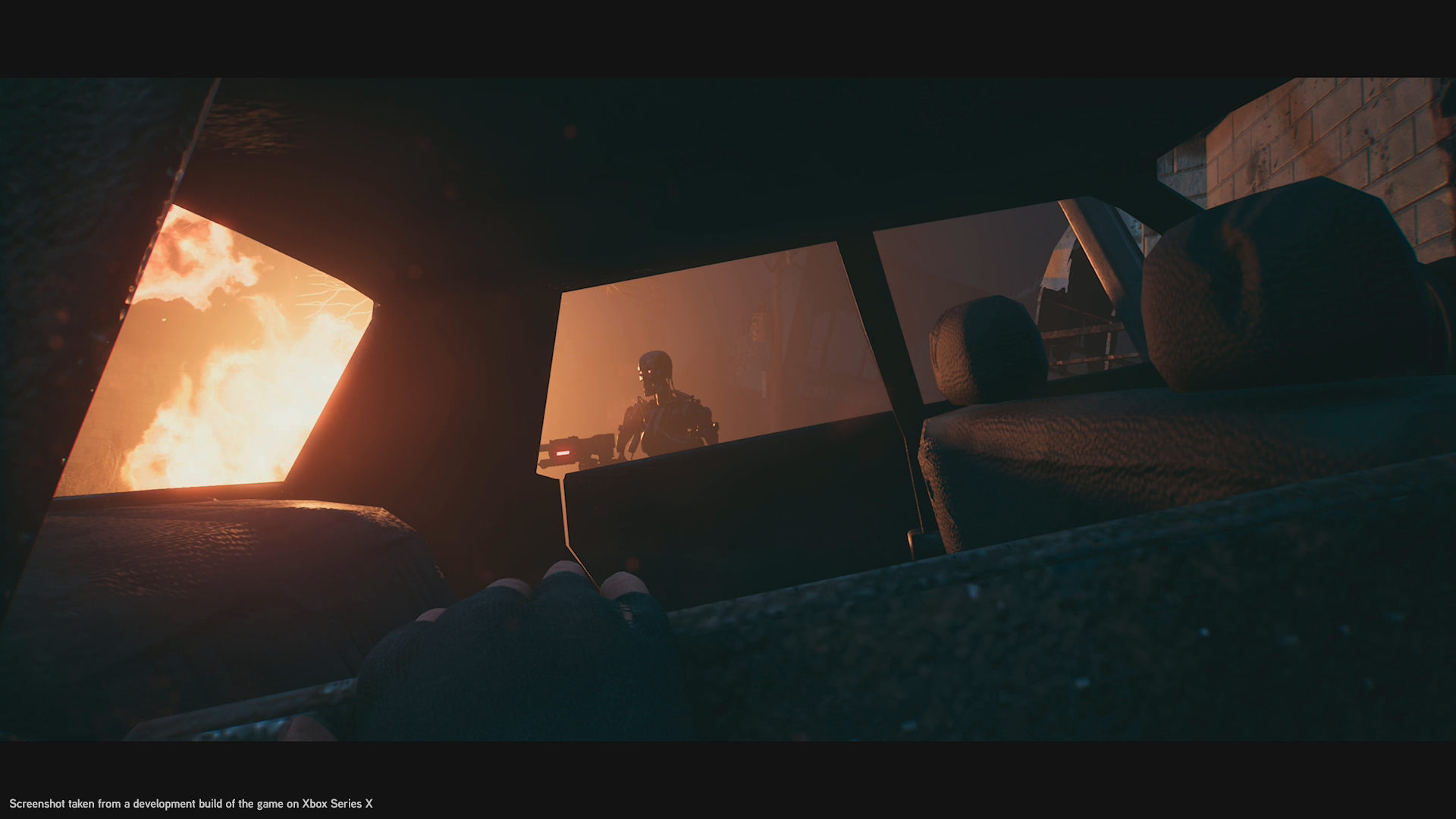
Shortly after the hospital incident, Rivers is given access to plasma weapons and is able to fight the Terminators mano-a-machino and the need for stealth is thrown out of the window. The game gives you carte blanche to blast everything in sight. The once-threatening T-800s become little more than metallic zombies as I was able to cut through them like Robert Patrick through John Connor’s foster parents. This shift in momentum suited the story really well, it was at this point the tide began to shift in humanity’s favour, but it also made the game ridiculously easy as I could open fire on anything that wasn’t a human and be done with the game.
Granted, there are some enemies that take a few rounds to take out, but they are still easily taken care of thanks to the broken crafting mechanics that Terminator Resistance employs. There’s an abundance of spare parts lying around just about everywhere, including in every single enemy. With only a few bits and bobs, I was able to craft all the ammo, healing kits and lockpicks I ever wanted, allowing me to be neigh on invincible just one hour into a 10-hour game. The ridiculously dumb AI employed by Terminator Resistance is laughable and after the hospital segment, the CPU turns from ruthless killer to Star Wars Stormtrooper levels of stupidity, only able to hit you if you stand in one spot long enough. At one point, I was able to run from one end of a map, pass two dozen enemies, destroy a Terminator spawning area and only get shot once. Being this overpowered so early in the game meant that the lengthy missions were dull, drawn out and provided no challenge whatsoever. If Terminator Resistance continued on its stealth path or switched to a DOOM-style game, where countless enemies punctuate compact levels, I feel the game would have been more engaging than what it ended up being.
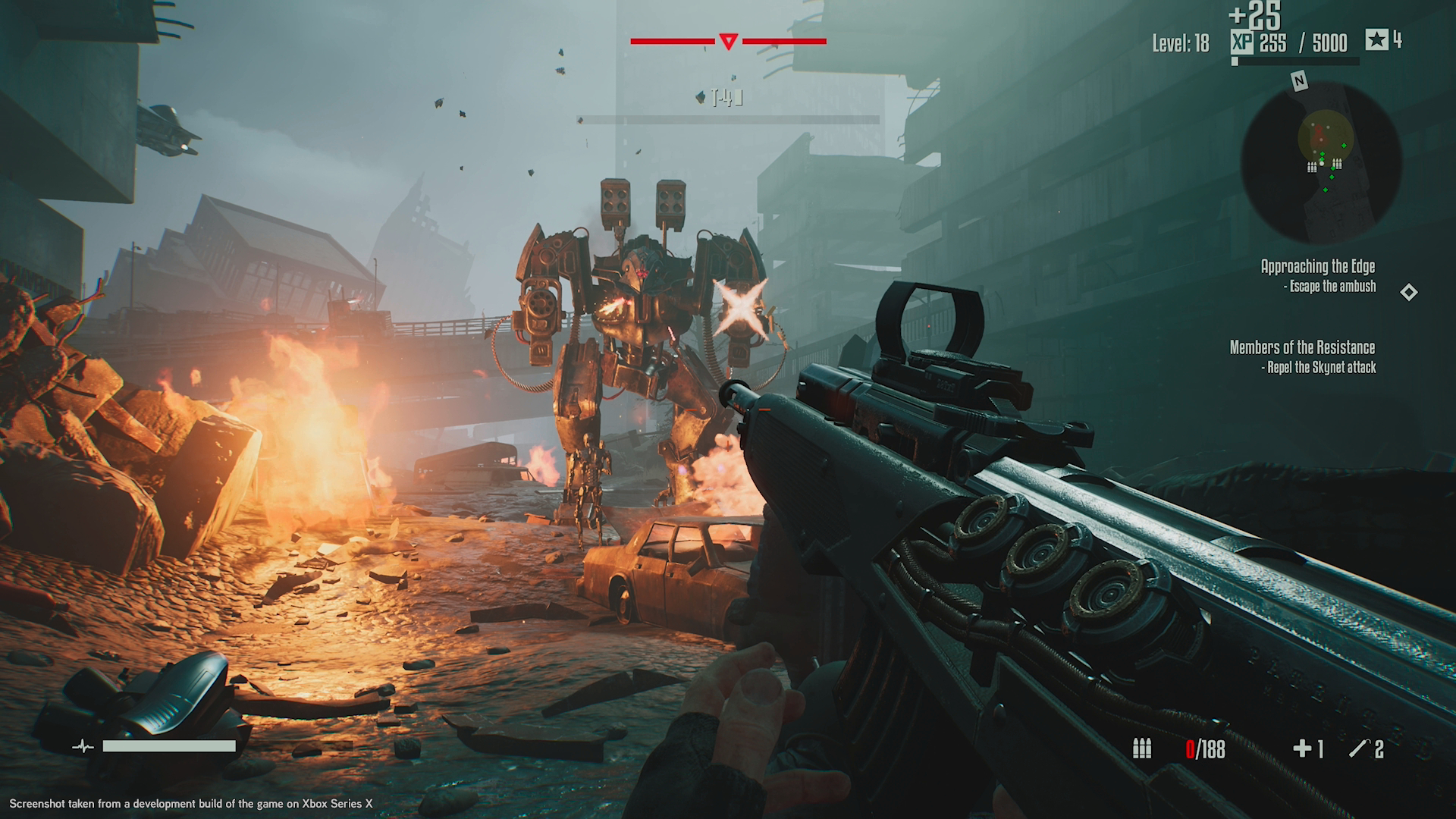
I probably would have enjoyed the action more if the game’s environments were in any way inspiring, but unfortunately, the choices boiled down to either a post-apocalyptic city or… another post-apocalyptic city which was reminiscent of Xbox 360-era games like Fallout 3, where all the detailing is limited to shades of grey. The wide open areas provided pockets of enemies to take out but overall, it felt empty rather than deserted. It’s not all bad news though, the Terminators themselves are as imposing as ever, with the light reflecting off their metal domes really well. The little spider bots scuttle at you in a crisp, robotic manner but the human character models are not so great. Flappy mouths, jagged edges and a slight look of ship model dummies made me question if I was playing a game from 2003, rather than 2023.
The gameplay and graphics might not be up to snuff but Terminator Resistance does have a few selling points that saves it from the scrap heap. While the graphics really don’t do the game any favours, the characters Rivers interacts with have surprisingly deep backstories that flesh out a world devastated by the events of Judgement Day. Throughout the game, Ryan, the leader of a small group of survivors regales his brutal rise to becoming the one people turn to in a crisis that revolves around the death of his brother. The DLC expands on the story in a similar way with two additions included in one package –Annihilation Line, where you fight alongside Kyle Reese before he’s sent back to the 1980s. Each bit of content only lasts a handful of hours but mixes up the repetitive gameplay found in the main campaign. Infiltrator Mode is particularly addictive as you take the mantle of a T-800 whose sole purpose is to methodically work your way through enemies looking for a particular member of the resistance to gain intel. The DLC isn’t long enough to sell the game on its own merits, but they round out the package nicely.
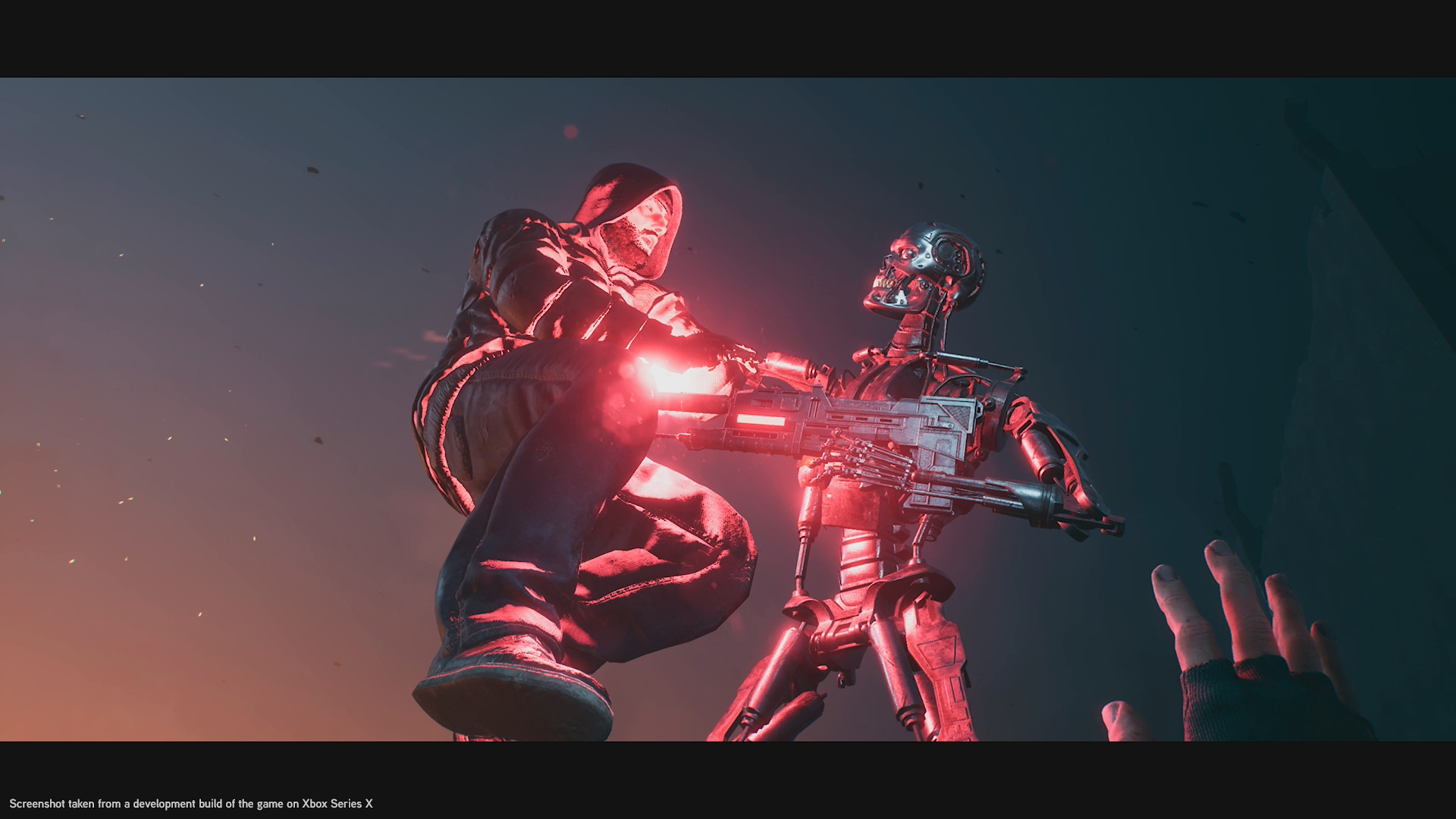
Terminator Resistance: Complete Edition ticks a lot of boxes, the story of what happens post Judgement Day fills in some of the gaps left by James Cameron’s original works and the first few levels where you are stalked by the machines are absolutely brilliant. It’s unfortunate that the game quickly becomes a by-the-numbers shooter with its baffling AI, bland environments and dull gameplay. The included DLC does help matters a little, with the Infiltrator Mode being a short-lived highlight, but unless you’re a diehard Terminator fan, it’s probably not for you.
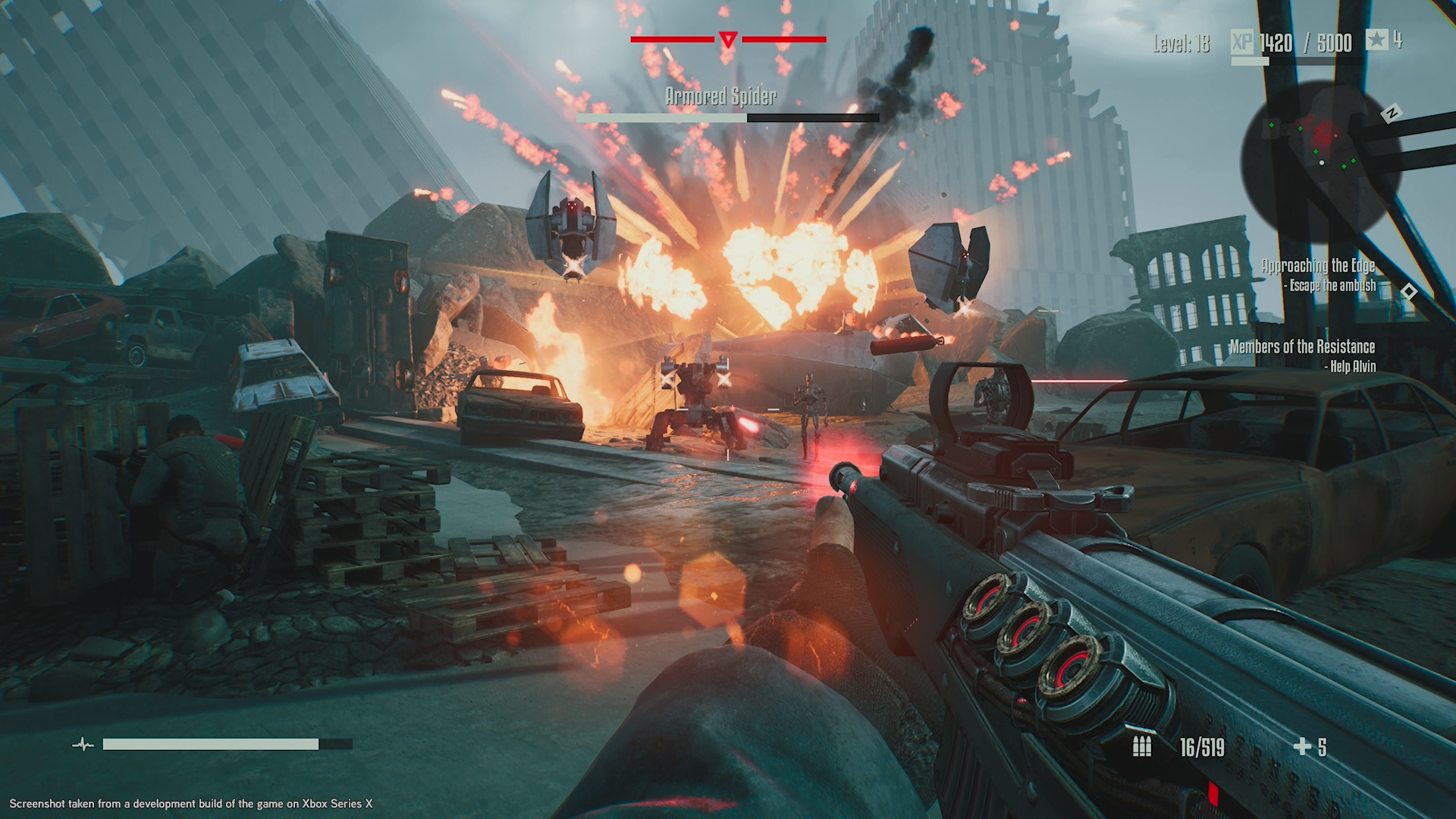



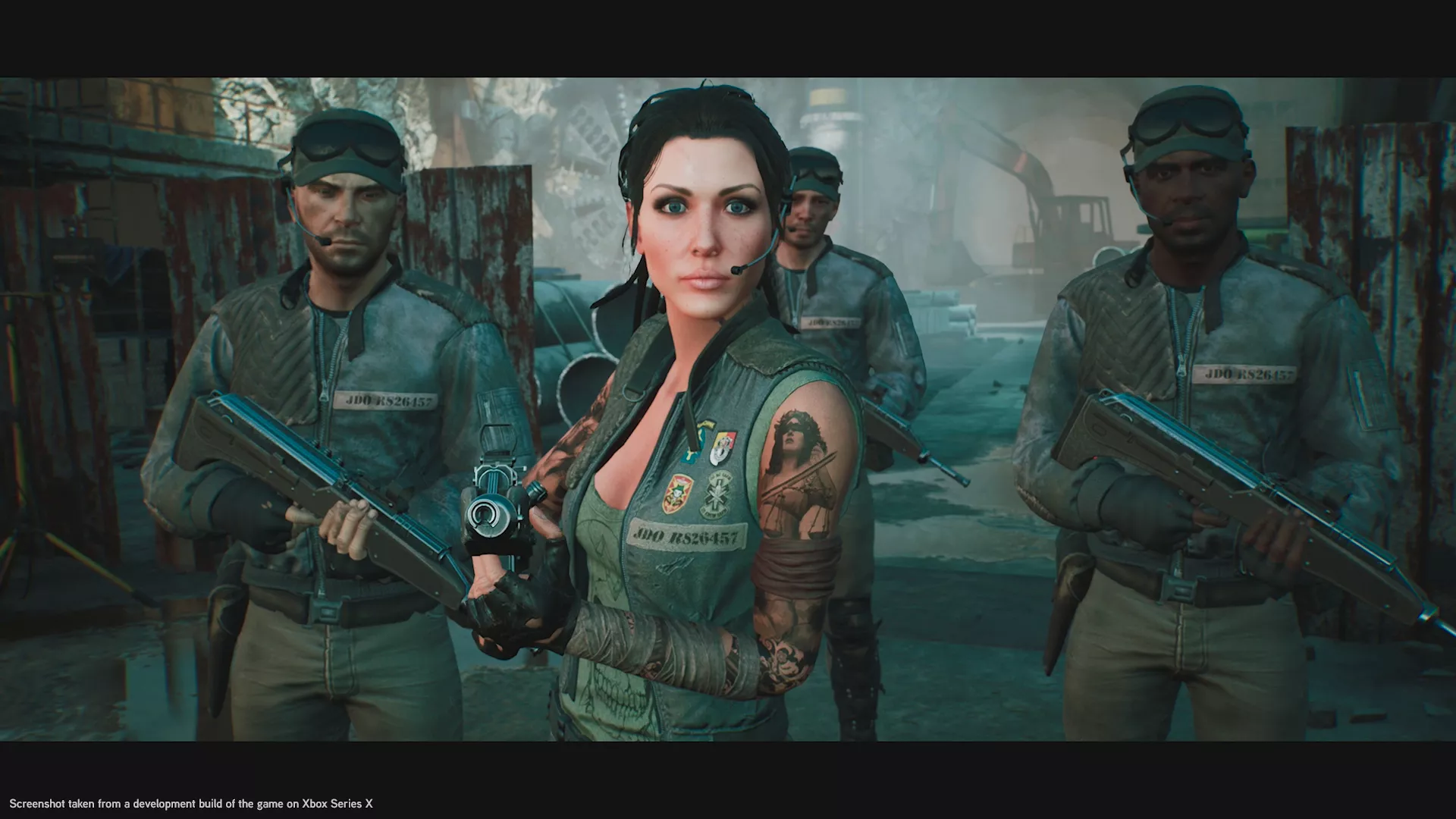
In the interest of full disclosure, VGamingNews was provided with a copy of the game in order to conduct this review.
Thanks for taking the time to read our review. If you’d like to support us further, please consider buying us a coffee!
Wanted: Dead
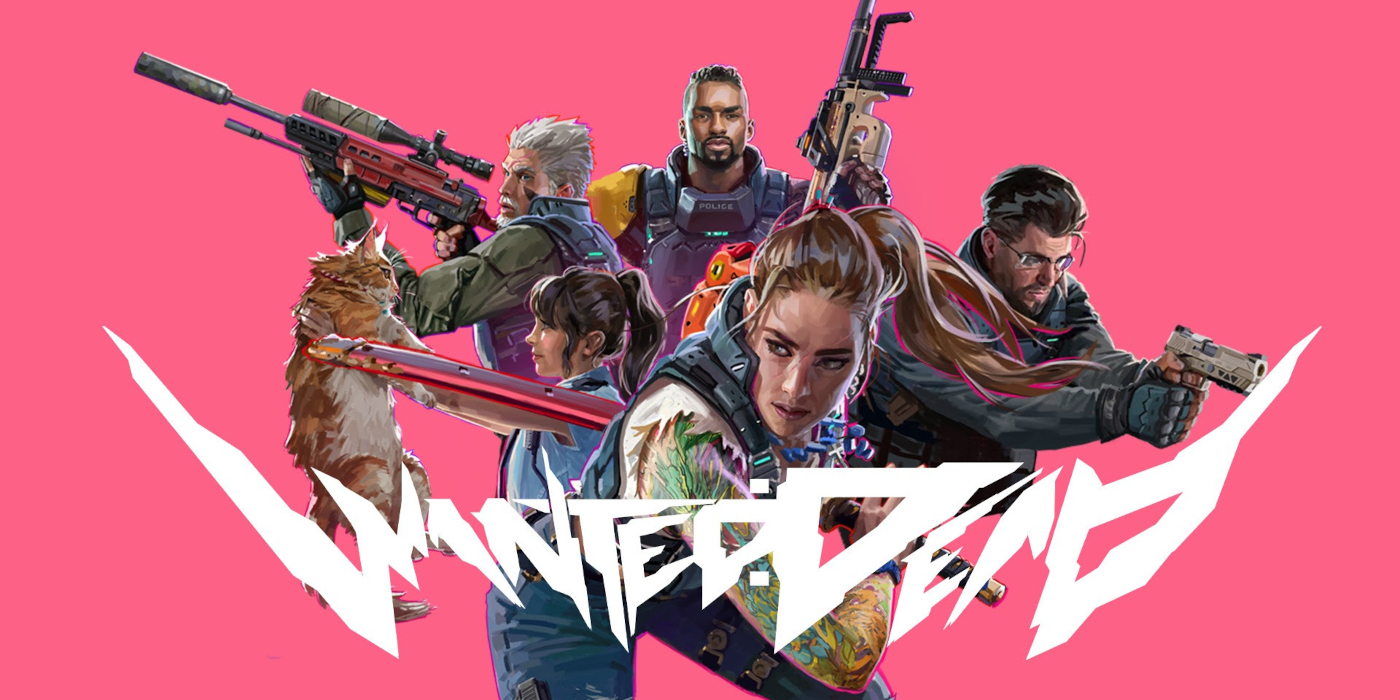

Everyone has that one game from their childhood sitting on the shelf that no one else has heard of. It’s typically a 5 or a 6 out of 10 action game that did well enough that you bought it, but not so well that it became a long running franchise. Mine is Oni, a launch window PS2 game made by Bungie and published by Rockstar of all people – it was a middle of the road action-shooter that was the dictionary definition of “bang average” and probably sold about four copies before it was quickly forgotten. One of those sales must have gone to 110 Industries because loading up Wanted: Dead instantly took me back to the early noughties!
At A Glance
| Scores | |
| Visuals | 5 /10 |
| Sound | 5 /10 |
| Gameplay | 9 /10 |
| Overall | 5 /10 |
| Positives | + Peak melee/gunplay mechanics + Fun upgrades + Decent sized levels |
| Negatives | – Horrible pacing throughout each mission – Inconsistent difficulty – Rough visuals |
| Price (When Reviewed) | £49.99 |
| Our Playtime | 13 Hours |
| Version Tested | 1.1 |
| Available On | PC, PS5, PS4, Xbox Series X|S, Xbox One |
Part hack-and-slash, part 3D action-shooter, Wanted: Dead is a love letter to games like Oni, Ninja Gaiden and Enter The Matrix – those forgotten action games of the early PS2/Xbox era. The aim is to blaze through the story as violently as possible while looking as cool as can be. If you think of all the action sequences from John Wick smashed together into one bloody video game, you won’t be far off what Wanted: Dead is like to play.
Before I get too carried away, let’s run through the story. Wanted: Dead is set in a futuristic Hong Kong, in a world where governments have fallen and corporations rule in a violent competition for profit and greed. The police act as little more than bodyguards to the highest bidder and Lieutenant Hannah Stone, complete with a mechanical arm and her Zombie Unit, are tasked with uncovering a corporate conspiracy in a set up that is not at all Robocop. Yes, Wanted: Dead ticks a lot of tropey boxes: big conglomerates taking over governments and the police becoming little more than security guards, but that’s not what we’re here for. Thankfully 110 Industries knows that, and while the plot is very paint by numbers stuff (the only stereotype that’s missing is Murphy Stone shouting “Dead or alive, you’re coming with me”), the journey is where people should focus most of their attention.
Like any early noughties game Wanted: Dead drops you straight into the action with only the briefest blink-and-you-miss rundown of the various kill buttons… and away you go. Mercifully, everything is rather intuitive – shooting is locked to the shoulder triggers and melee attacks are reserved for two face buttons and using a combination of presses, Lt Stone, who is the only playable character, can execute any number of brutal moves that usually end up with some form of limb removal. The gameplay element is an absolute dream, from the off it’s slick and reactive enough that I managed to cut down hundreds of goons with a swish of a sword and a blast of an assault rifle.
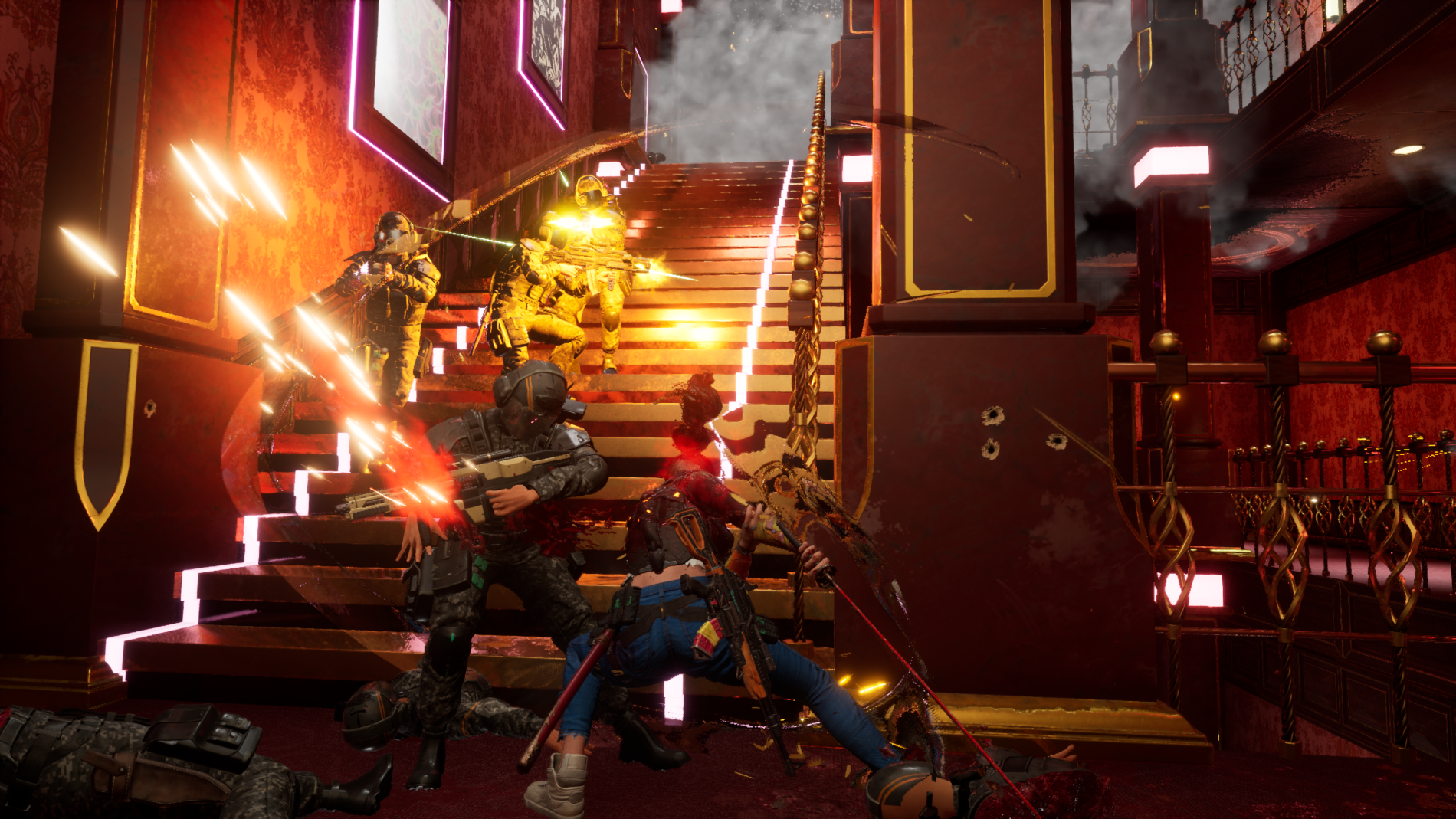
Unlike games like Ninja Gaiden and Devil May Cry where you have to struggle until you get the cool upgrades right before the final boss, Wanted Dead gives you almost everything upfront. I was impressed through the opening levels on what I could do right out of the gate, and after the first level I had 35% of the games’ skill tree unlocked. Stone can use points earned for her kills on incremental upgrades such as incendiary grenades or teammate assists, which does help speed up general progression, but is hardly needed to succeed in the game.
110 Industries developed Wanted: Dead to be an homage to those early 2000s action games, and while they absolutely nailed the gameplay, the same can’t be said about everything else. Visually the game is decent enough, just like Stone and her motley crew they get the job done. As the gameplay zips by, the visuals don’t present too much of an issue but when watching the lengthy cutscenes it is easy to notice a lack of polish. These show up mainly with the character models, which are quite literally rough around the edges so the point that it gives the impression that the game’s code is held together with spit and duct tape. The audio is all over the place too; the rat-tat-tat of an automatic weapon tends to drown everything else out, and the voices come through the screen at a gnat’s whisper. It was a shame because the scripting and the delivery of the lines was so comical I wanted to hear more scenery chewing performances from everyone.
The level design also became a bone of contention in that it’s a cookie cutting affair revolving around fighting in an open area, running down a corridor, having another fire-fight and moving on. After repeating this for 45 minutes Stone and her team will have to face off against some oversized boss before calling it a day. This did start to get boring after the first couple of times, as only the look of the environments changed – boardrooms gave way to a giant park, which in turn gave way to more office buildings.
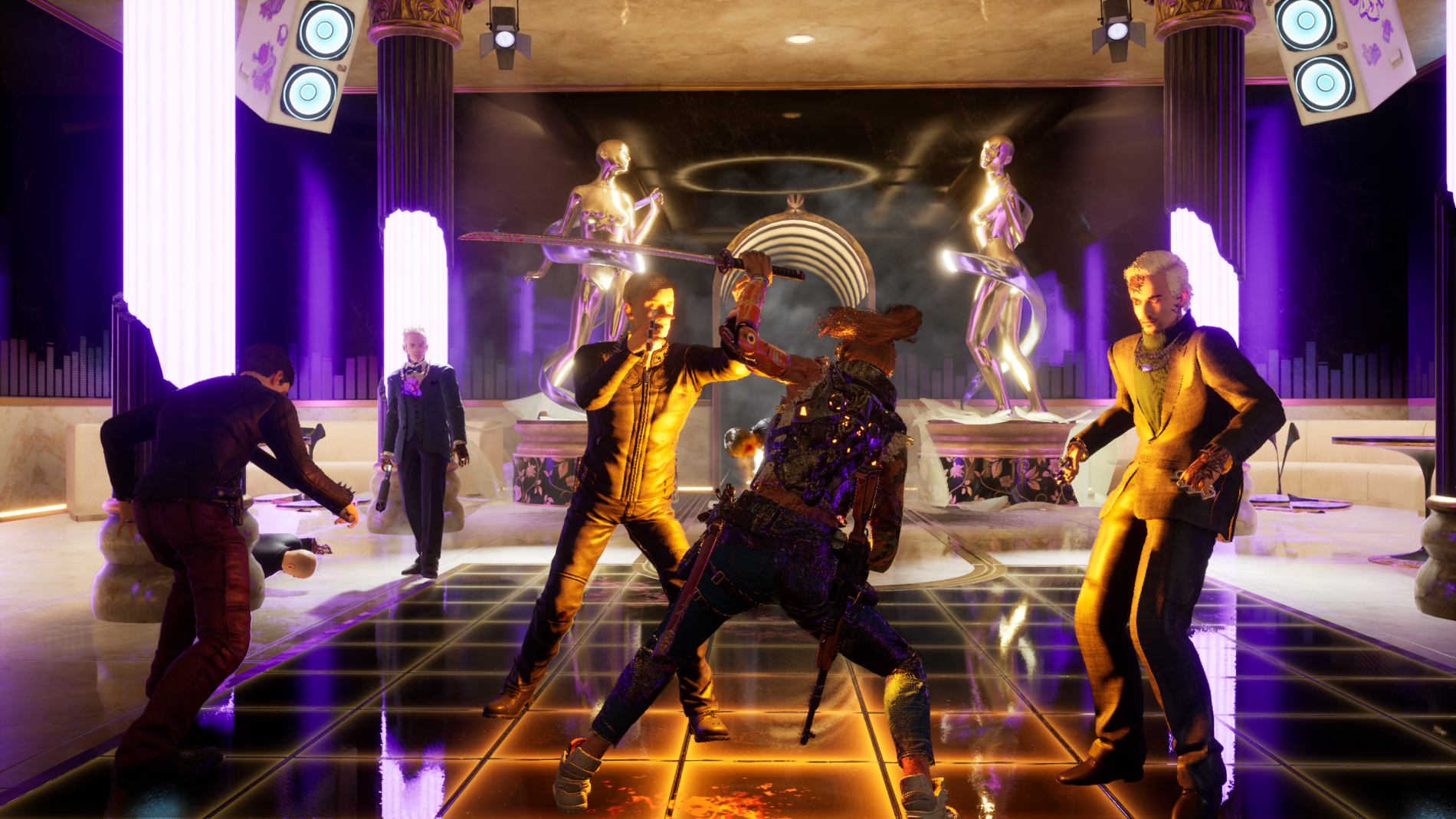
The enemies are tough, can absorb a lot of bullets and even land a few suckerpunches here and there, which normally wouldn’t be a problem, except it highlights Wanted: Dead’s biggest omission – the spacing between save points. I’d have preferred more variance in the level setups, or simply more checkpoints so I could have a rest and help break the monotony that the game became. Don’t get me wrong, there are a number of times where you can save your progress throughout any given map, but it often seems they are either too spread out, or bookending a short corridor. Having to run through half a level where I took on wave after wave of goons, only to be gently tapped on the noggin with the butt of a rifle and be sent back to an hour earlier is more soul destroying than anytime spent in Elden Ring – at least From Software had the decency to put in an autosave function. This is compounded by the game’s boss fights which ramp up the difficulty for no apparent reason.
For the most part the difficulty level isn’t the problem with Wanted: Dead, despite spongy enemies and your three AI controlled “teammates” who shoot at nothing but the walls – the issue really is the consistency. There has to be give and take somewhere, and even something like Dark Souls, which is built around the difficulty of the levels, ultimately feels stable and fair. Being forced to repeat the same sections of a level over and over because something so ridiculous takes you out at the last possible section isn’t the one.
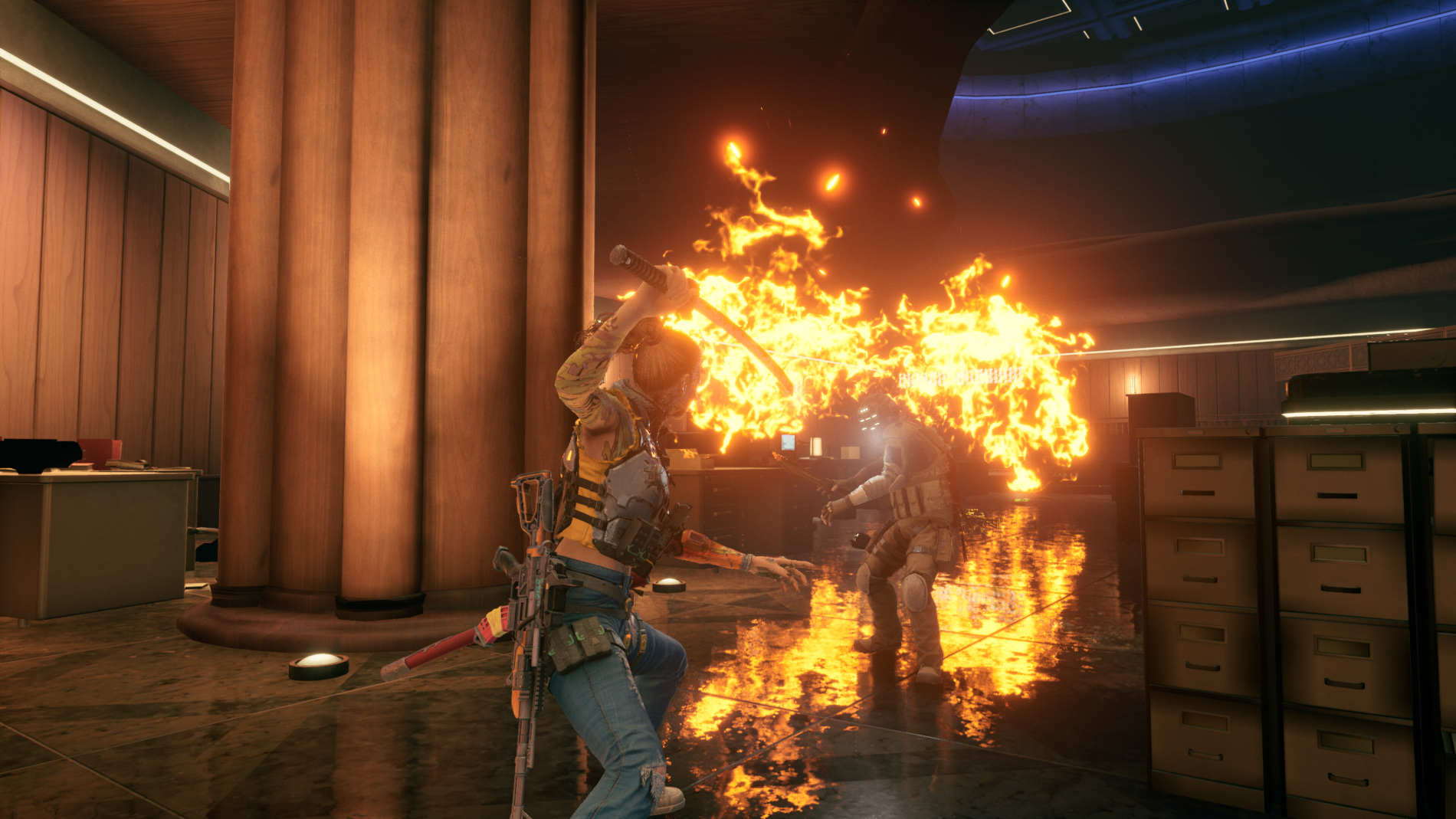
Outside of the main game, Wanted: Dead takes a strange turn. In between missions, Stone and the Zombie Unit are sent back to HQ for downtime and I was free to explore at my leisure. I quickly came across a handful of minigames that ranged from target practice, to a relaxing crane game and, for some unfathomable reason, ramen making classes. This and the karaoke minigames felt completely strange as they were rhythm games I was forced to play in an effort to better get to know my teammates. I get that cops need to let off steam, but I’m not sure why I needed to “have fun” in these useless objectives – I hate doing it in real life, so why enforce this hell on me during my own downtime.
Wanted: Dead looks back at the last twenty years of game design and manages to combine shooter and hack ‘n’ slash elements rather cohesively into one of the tightest melee/shooters I’ve played in a long while. Unfortunately, while I will scoop praise on the gameplay until the end of time, there are issues that can’t be ignored. When I wasn’t shooting things with gleeful abandon, everything else was trying to make me put down the controller. The wooden plot and lifeless characters are a given, but the strange minigames, awful level pacing and difficulty spikes left a bitter taste in the mouth. There’s no doubt this is a fun game and I can see a small section of players absolutely loving it to death, but outside a tight knit niche of fans, I’m certain that Wanted: Dead will sadly be quickly forgotten.

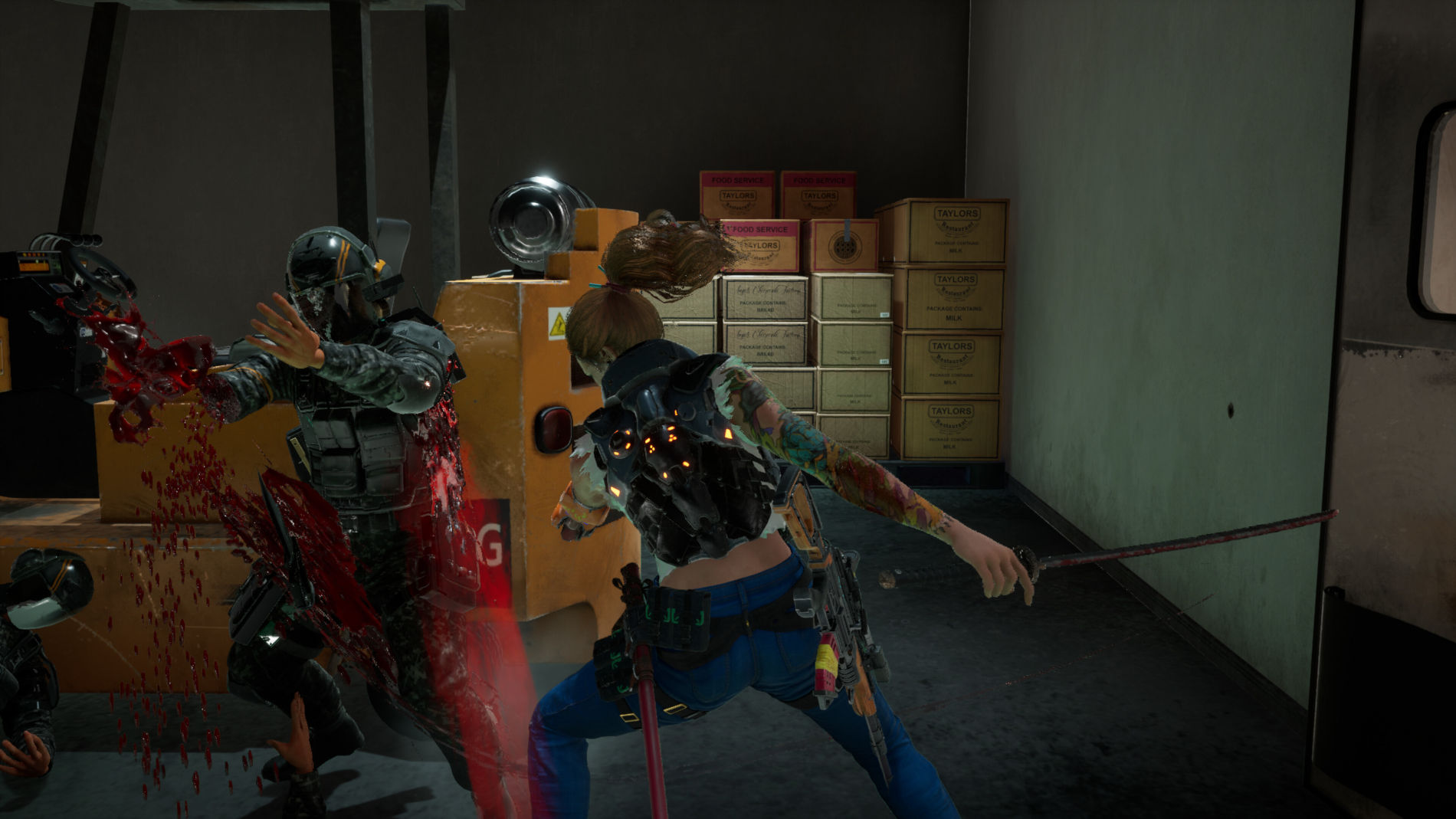
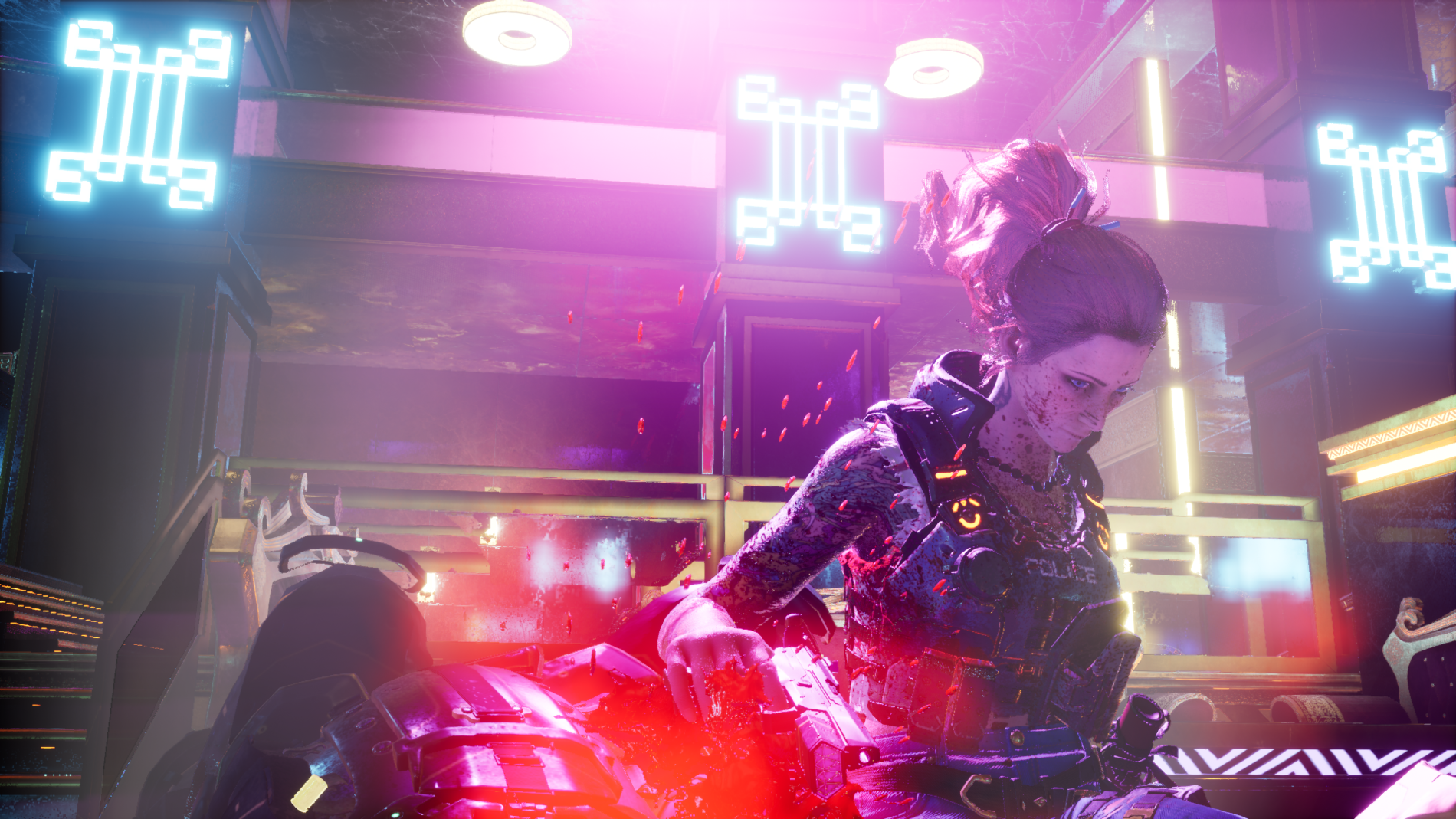
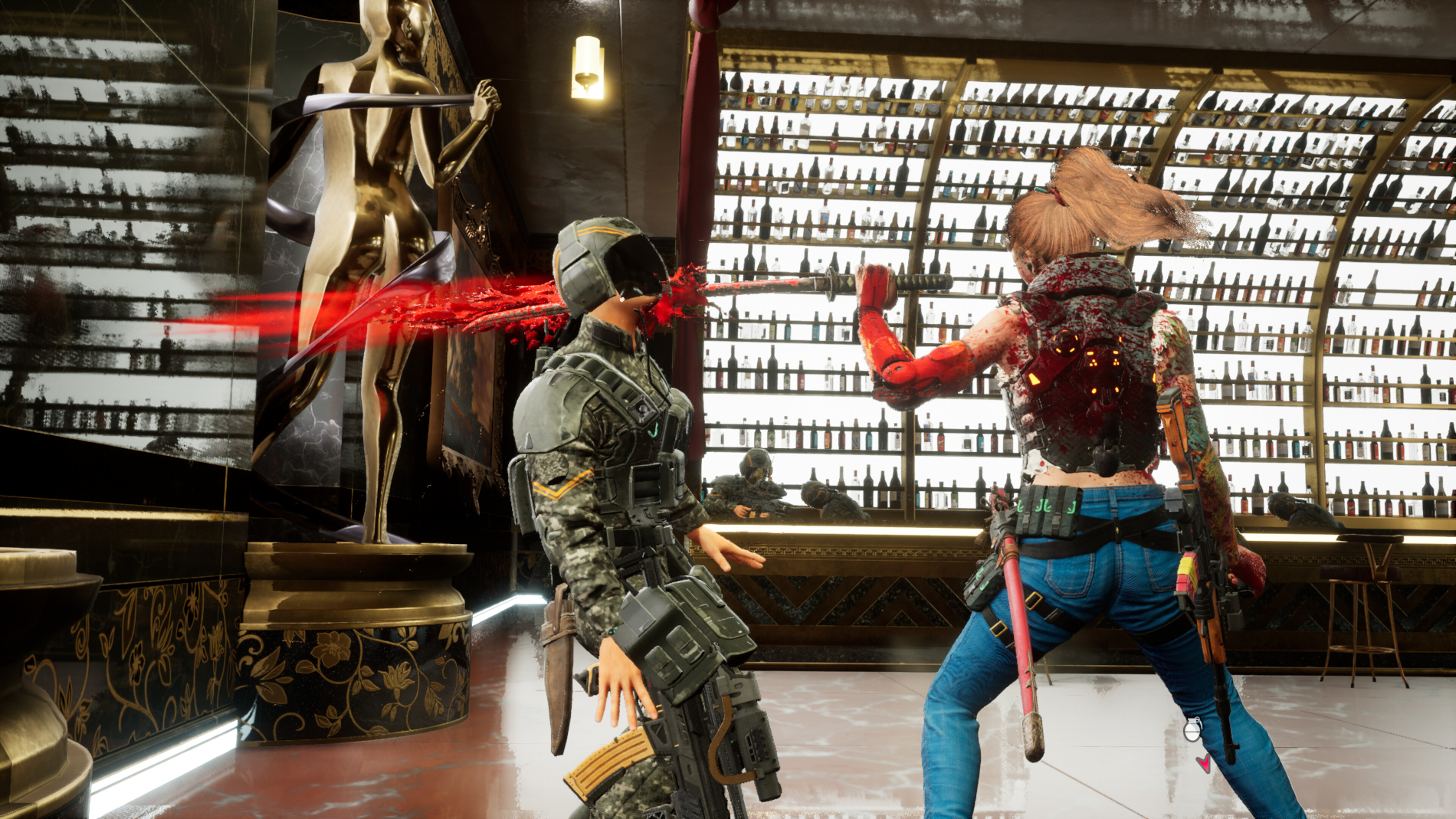

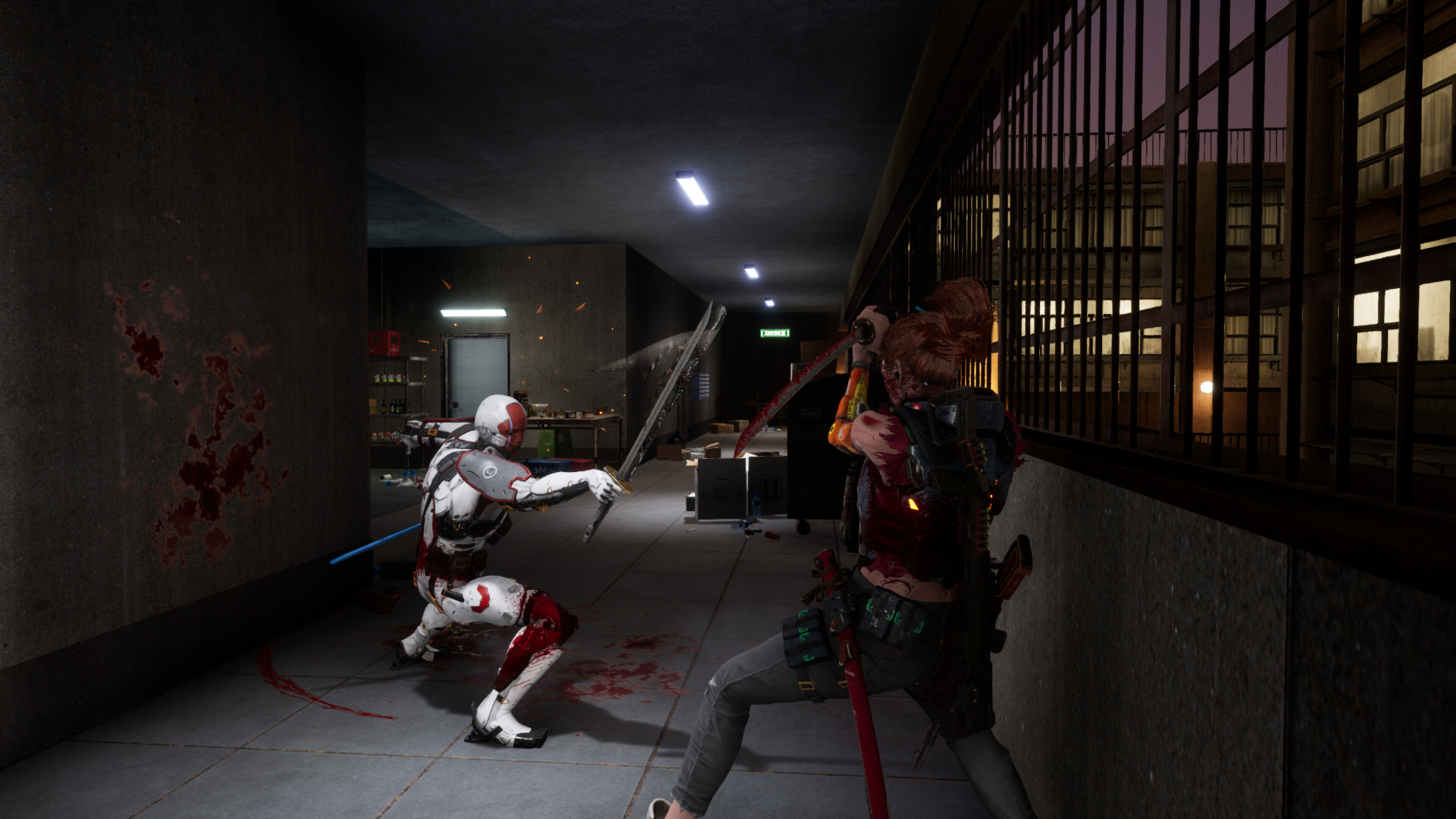

In the interest of full disclosure, VGamingNews was provided with a copy of the game in order to conduct this review.
Trek to Yomi
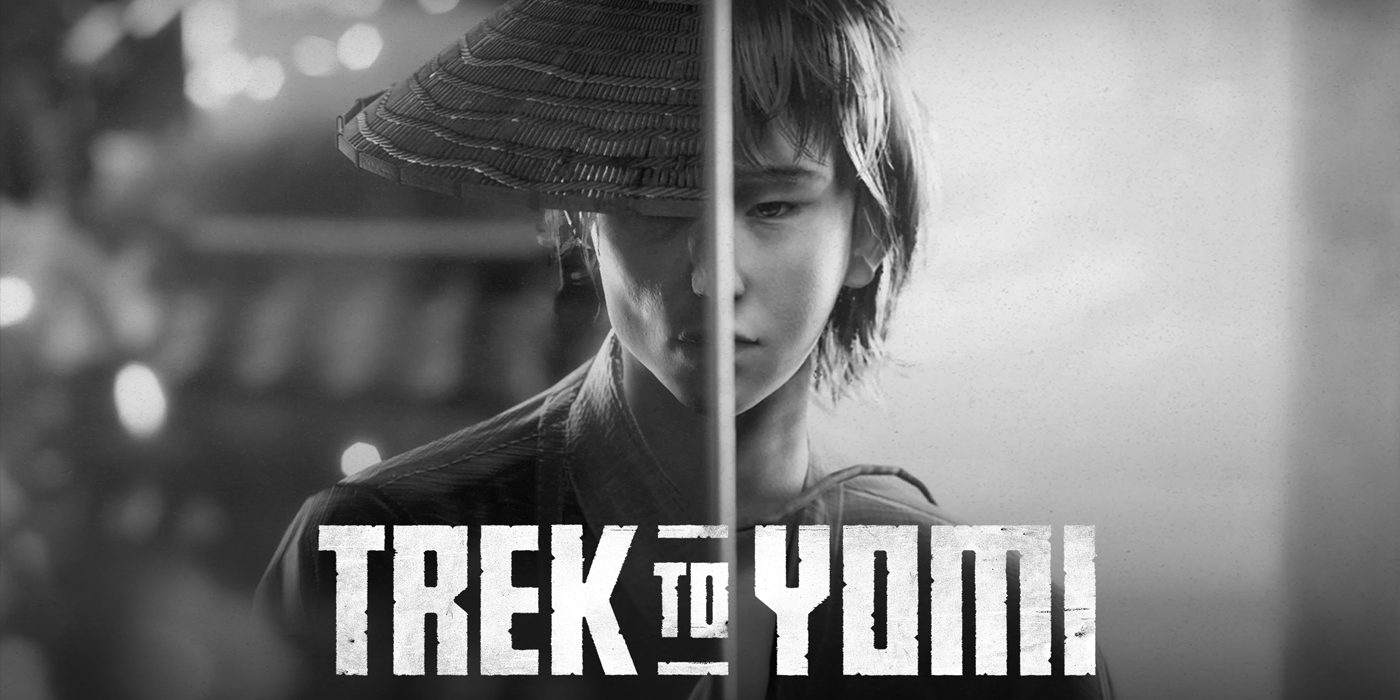

Whether or not he likes it, Tom Cruise has a lot to answer for. Not content with providing some of the most memorable moments in modern cinema, 2003’s Last Samurai introduced a young Joe to the world of historical Japanese cinema. While not entirely historically accurate and perhaps a little bit insensitive, the western take on Asian culture sparked my interest in 1950s samurai films. For me, there is nothing better than watching a film where every detail has meaning; the way a soldier hangs his sword, or the specific words used to convey emotion, having been carefully orchestrated to set an emotional tone and make the audience understand the trials and tribulations of a typically tormented character. And if that wasn’t enough for you, filmmakers throw in a couple of very violent battles and call it a day. So when Devolver Digital announced a video game based on the love of the same genre of movie, I simply had to give it a go.
At A Glance
| Scores | |
| Visuals | 8.5 /10 |
| Sound | 9 /10 |
| Gameplay | 8 /10 |
| Overall | 8 /10 |
| Positives | + Intense, well-balanced action + Stunning scenery + Incredible soundtrack |
| Negatives | – A little on the short side – Difficulty quickly ramps up – Character models are average |
| Price (When Reviewed) | £16.74 |
| Our Playtime | 6 hours |
| Version Tested | |
| Available On | PS5, PS4, Xbox Series X|S, Xbox One, Nintendo Switch, PC |
Developed by Leonard Menchiari and Flying Wild Hog, Trek to Yomi is best described as a 2D cinematic hack and slash game, set during the Edo period of Feudal Japan. When Hiroki’s village is razed to the ground, the young samurai sets out on that most classical quest – revenge. Hiroki must travel to Yomi, the Japanese underworld, in order to confront his aggressors and seek peace.
Like any good film, if you dig too far into the plot you’ll see it’s not the most layered experience and the same holds true for Yomi. The tale of revenge is as complicated as it gets, and at five or so hours, it felt more like a snappy video game that left me wanting more rather than an over-bloated and complicated film. Although there are a handful of sidequests to encounter and a plethora of collectibles to find throughout your time, these are easily found and once the credits have rolled that’s it.
As alluded to in the introduction, Trek to Yomi is a love letter to the old samurai films of the last century, which can be seen not only in the classic storytelling but throughout the game’s presentation. Saying the game has black-and-white visuals is an oversimplification of what is going on here. Yes, the game has no colour and has a grainy filter often seen in old 35mm films, but that’s not to say it’s monotone by any stretch of the imagination.
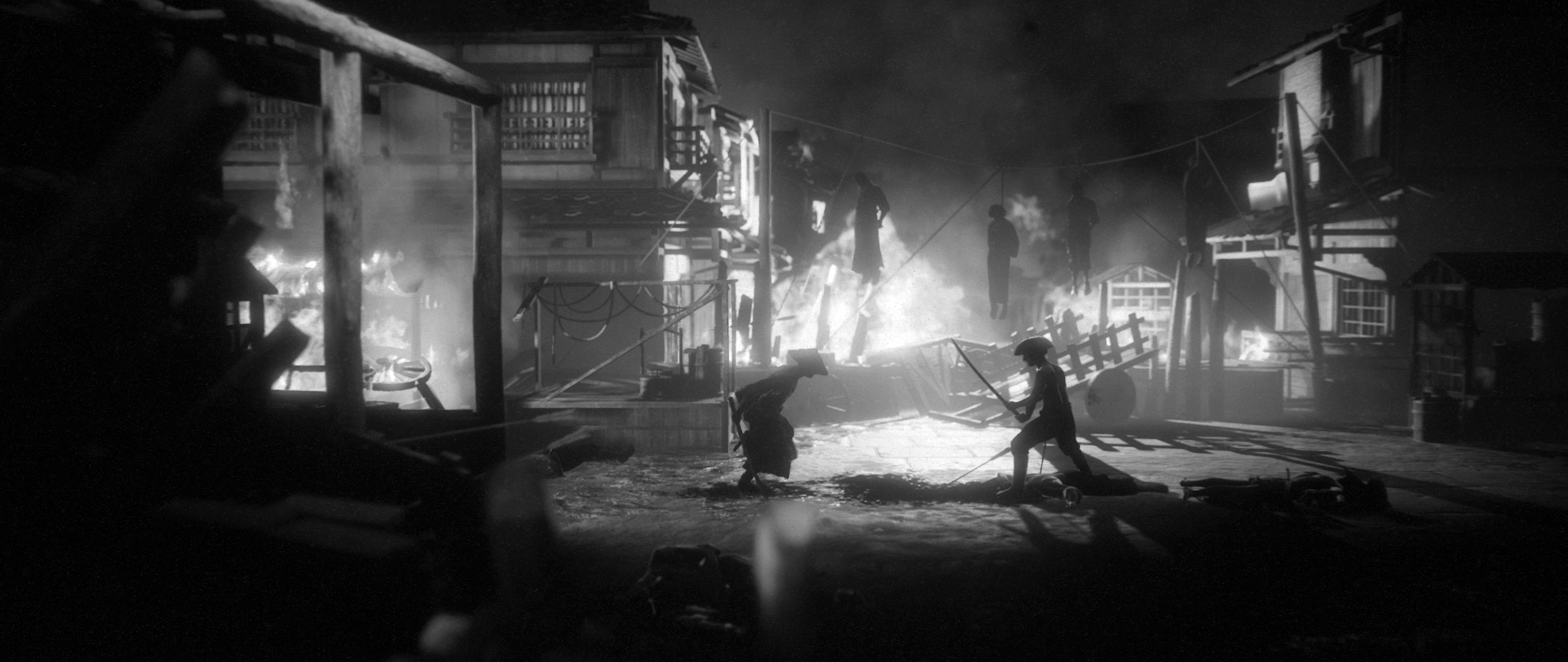
The 2D presentation lends itself to Yomi as it allows a static camera to frame each scene. The use of light sources is equally cinematic, and much like a director lighting a set, every single frame of the game extrudes different shades of grey. Depending on how the scene plays out will depend on how the light interacts with the objects, either casting large shadows or drawing my eyes to the bright source which led to some interesting mind tricks. I knew the game was black, white and every shade between, but despite the lack of colouration I still felt that the fires on screen were burning hot orange, and I felt that water running under bridges was as crystal clear as can be – it was as if the colours of the objects were seeping into my mind as it tried to colour the game itself.
The scenery is equally impressive, the ragged towns seen in the first few hours are in a state of decay and destruction that feels out of a high-budget movie set. The rolling vistas and the jungle areas in which Hiroki finds himself are almost photographic in appearance and exactly how I would expect Edo-era Japan to look. The only blemish on the otherwise perfect visuals is the character models themselves, which appear rather simplistic compared to the rest of the aesthetic.

With incredibly detailed environments, having plain characters does spoil the presentation a little bit. Don’t get me wrong, the wide camera angles keep you far enough away from the action that it is hardly noticeable, but up close, the warriors are definitely on the bland side. The most annoying aspect of Trek to Yomi is the game’s soundtrack, more specifically the NPCs. Throughout the opening scenes, villages are being pillaged which leads to a lot of townsfolk understandably crying out in pain, but the repetitive and consistent wailing noise cuts through the otherwise brilliant soundtrack that encapsulates the Edo period. It’s a small annoyance but after a few repeat retries, it didn’t half get on my nerves.
Up to now, I’ve talked about how Yomi would make a great, albeit long film, so let’s talk about what makes Trek to Yomi a decent video game – combat. As a budding samurai, each fight revolves around swordplay with a katana being your main source of power. Flying Wild Hog has mercifully chosen to keep things relatively simple, one button swings your sword for a light attack, another acts as a heavy strike and one more acts as a parry. The trick to success, however, is that you need exquisite timing in order to make serious progress; each enemy regardless of if it is a boss or your bog-standard grunt, will need precise actions, otherwise, you will end up as a yakitori.
This caused me issues to begin with, as I struggled to get to grips with Hiroki’s speed, but once everything clicked into place, each battle became a glorious, bloody ballet, usually resulting in a decapitation. Battles are tough but the multitude of save points and health collectibles – especially in the early stages – means that even though there will be multiple retries, you’re never thrown too far back and you can quickly regroup for the next assault.

Trek to Yomi is one heck of a game that sets out to pay homage to the great samurai films of the 1950s and it certainly achieves this and then some. With a bold art direction that perfectly resonates with mid-twentieth-century film-making, it is one of the most well put together games in the indie scene. Its breathtaking scenery and equally impressive soundtrack create an atmosphere that encapsulates the Edo era, with the only downsides being the most nit-picky of details. The gameplay is a rewarding adventure in itself, with every strike and parry full of meaning. There are very few downsides to consider with Yomi, and when the biggest complaint is the constant screaming in the earlier levels, it certainly says something about the game’s overall design.
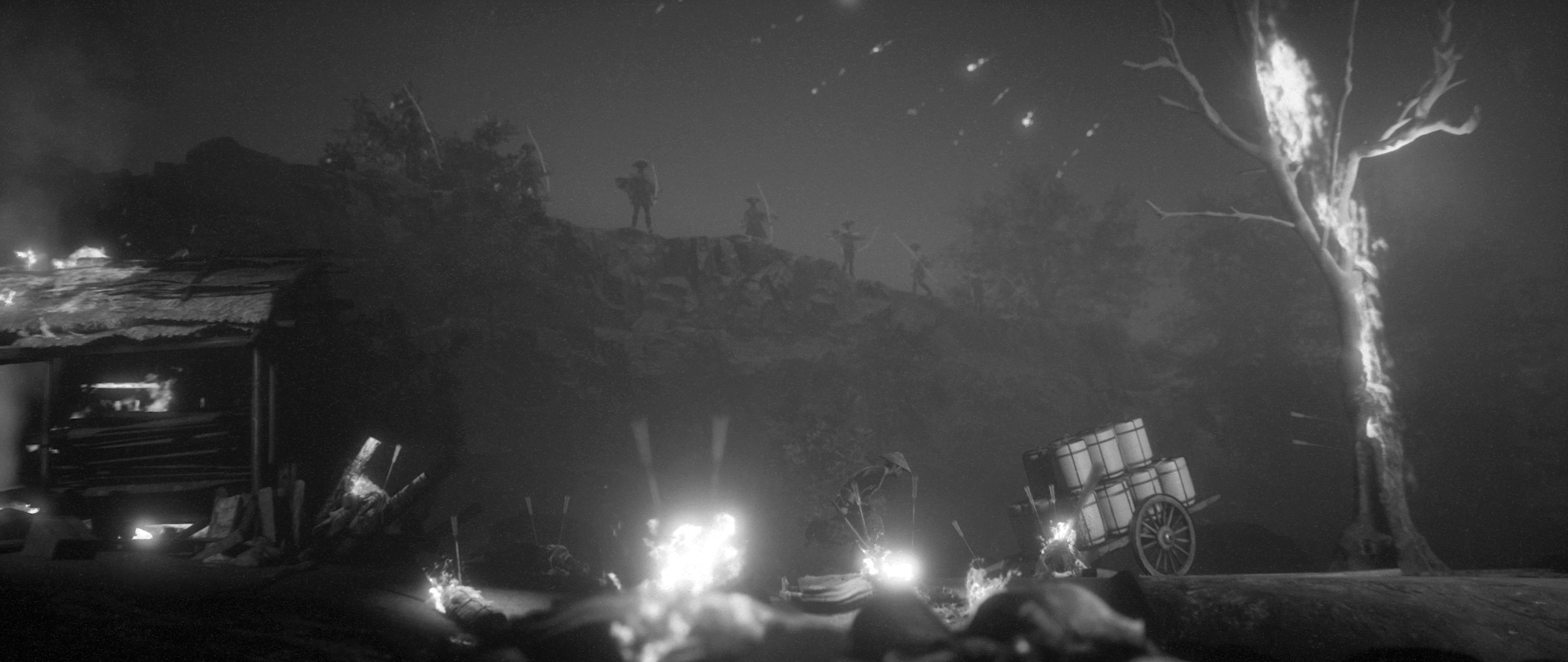
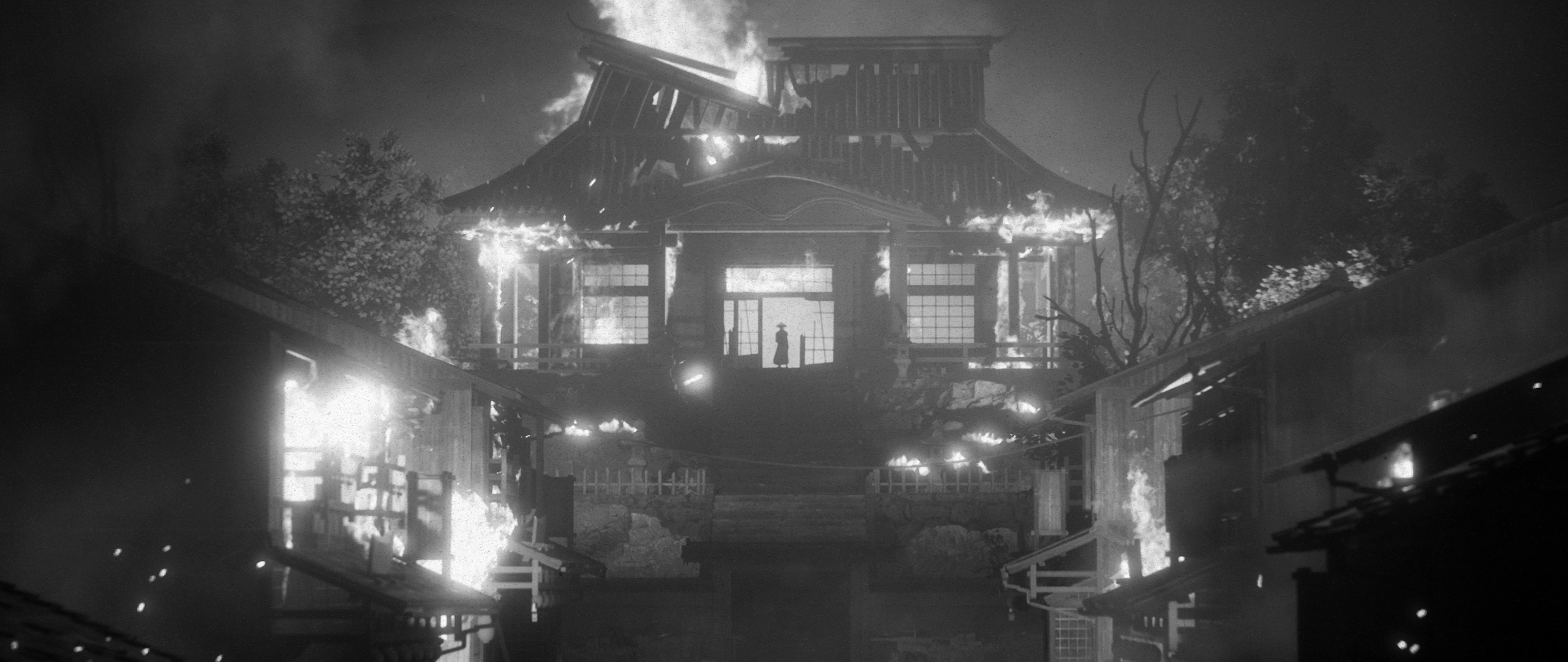
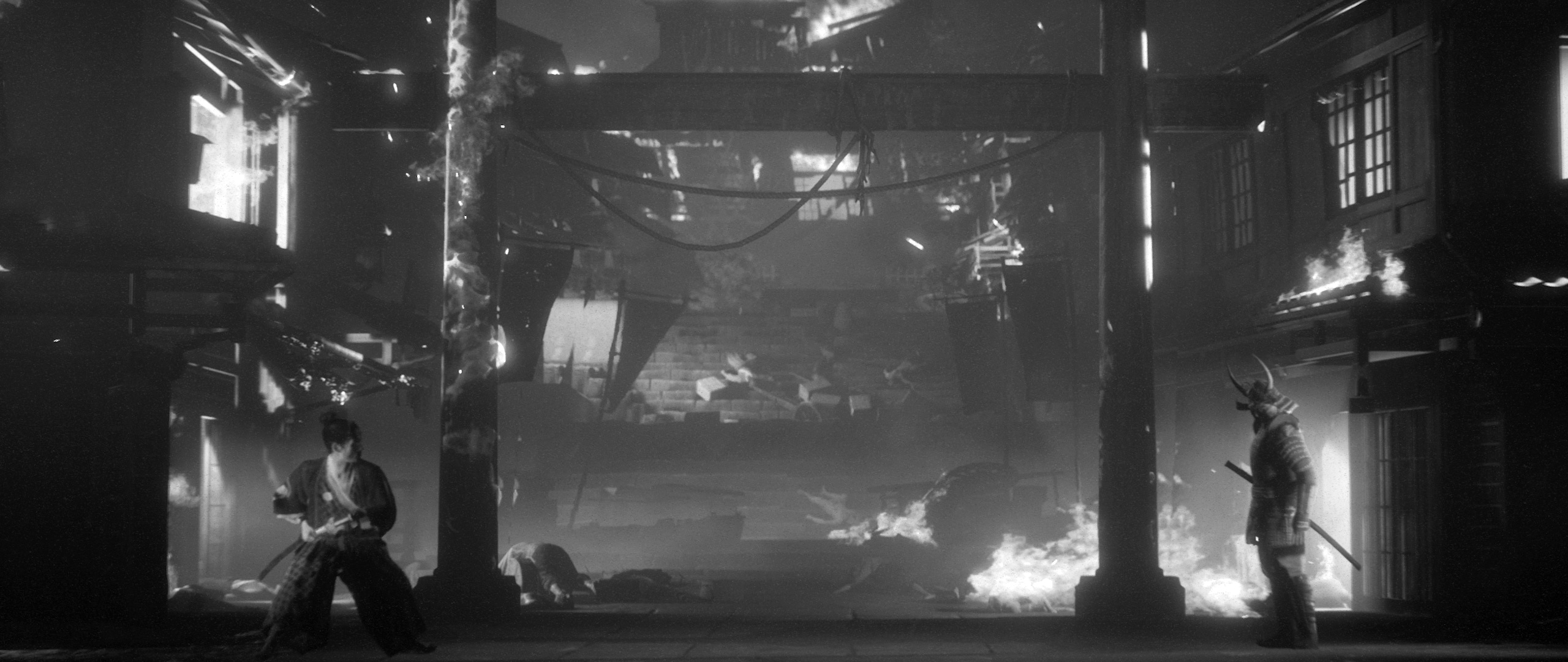
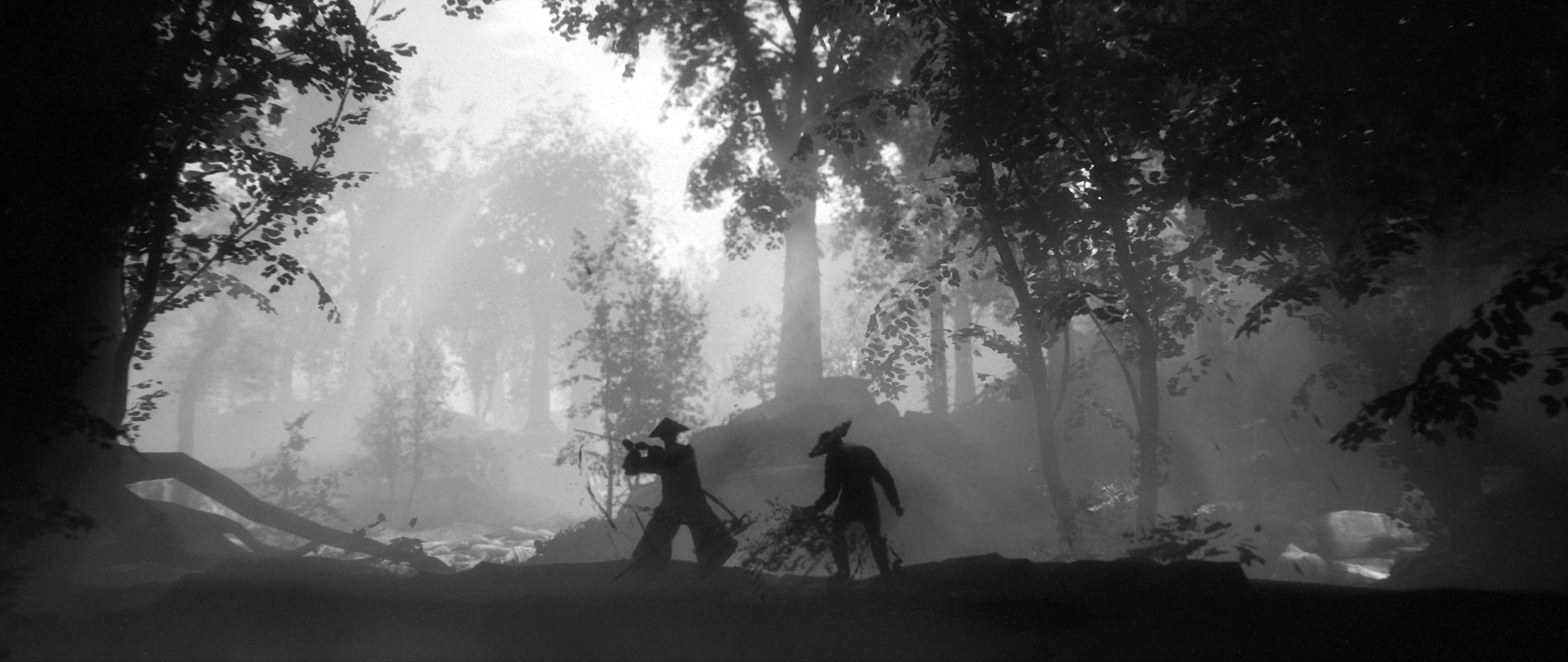
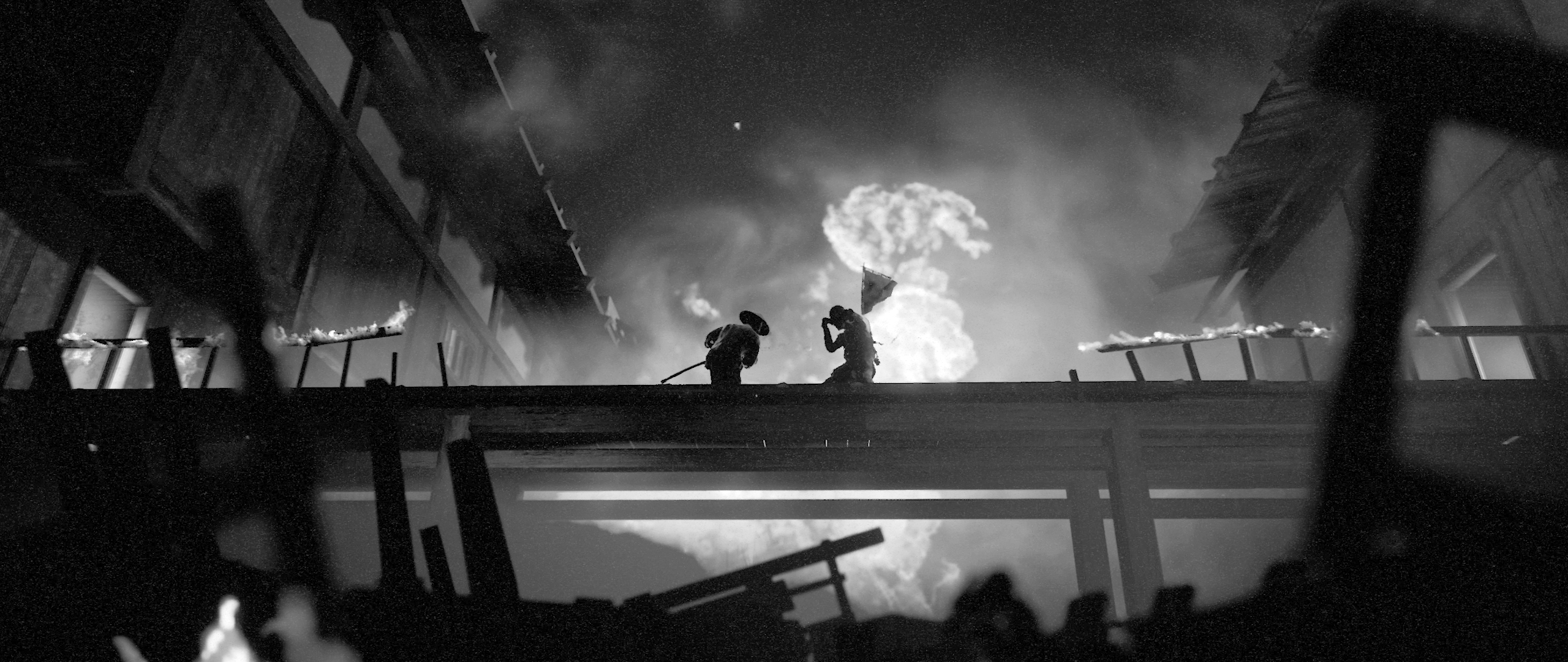
The Last Hero of Nostalgaia
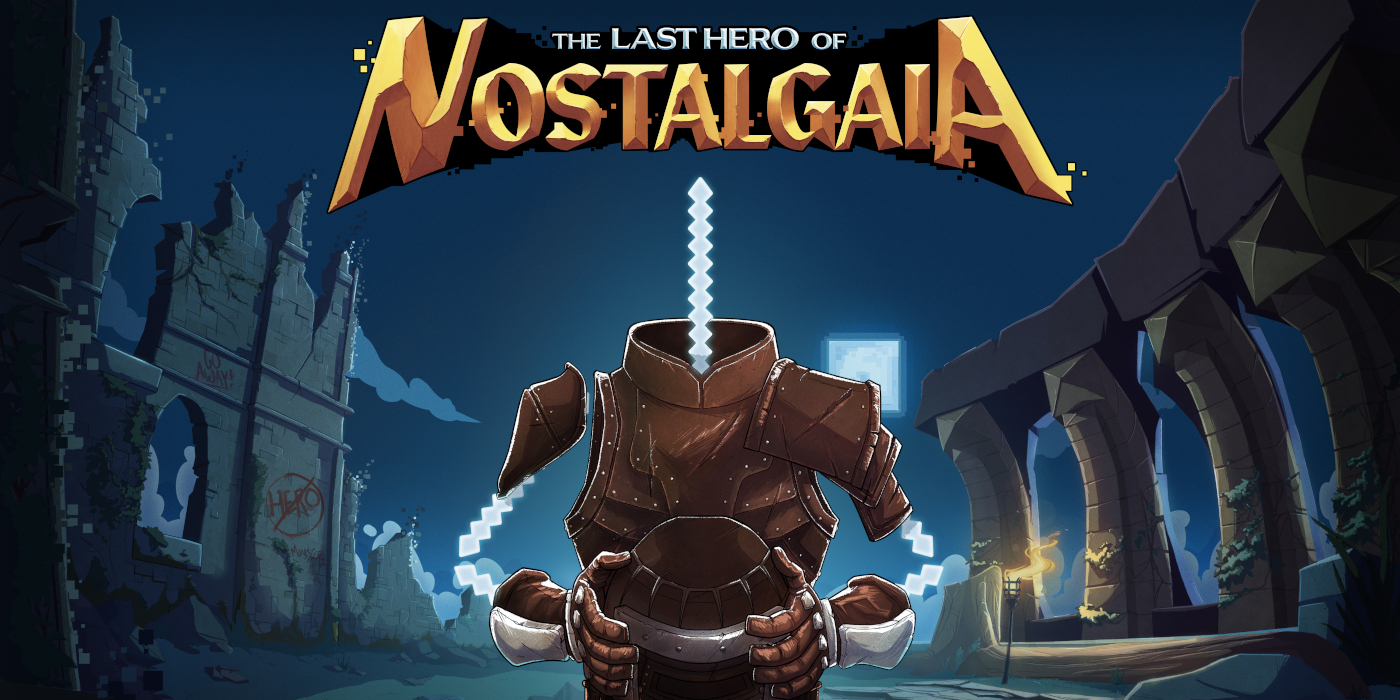

At A Glance
| Scores | |
| Visuals | 5 /10 |
| Sound | 8 /10 |
| Gameplay | 7 /10 |
| Overall | 8/10 |
| Positives | + Witty story + Hilarious narrator + Perfect Dark Souls inspired game |
| Negatives | – Glitchy experience – Clunky controls – Perfect Dark Souls inspired game |
| Price (When Reviewed) | £19.99 |
| Our Playtime | 16 hours |
| Available On | Xbox Series X|S, PC |
Created by Over The Moon Studios, The Last Hero of Nostalgaia tells the simple story of a figure setting off in the world to save it from a rot that has taken hold. This devastating destruction has ravaged the once fully-fledged 3D world and turned it into a flat, pixelated mess. The shining figure that is the game’s hero happens to be a 2D stick figure that has all the personality of, well, a stick person. We don’t know who it is, or why it is the main character in the game, it just is. There’s nothing more I can say on the matter.
If you couldn’t tell, The Last Hero of Nostalgaia is the Spaceballs of Souls games, a pure play on the ‘genre’ from the start and if you couldn’t tell by the stick figure hero that adorns the artwork, then the character creation tool certainly gives the game away. Usually the character creator lets players become part of the game, but here, you are a stickman through and through, no matter what colour your eyes are, or how big you set the nose slider, you are a stickman, no ifs, no buts.
Once the pleasantries were taken care of it was time to head off on an adventure. Those of you who have played Dark Souls, Bloodborne, or Elden Ring will feel right at home here. The core mechanics have been ripped directly from FromSoftware and implemented perfectly in Nostalgaia. Battles, progression, and even the small details such as leaving messages for other players are all here. You can even call other players to help with tricky bosses if need be. For those who haven’t taken to any of these games before, this means the game plays out as an adventure game that relies on a slow and steady approach to progression. Levels have to be managed carefully, each enemy has to be treated with respect and approached with some form of strategy, otherwise you’ll find yourself being sent back to a checkpoint that is a fair distance away from where you need to be.
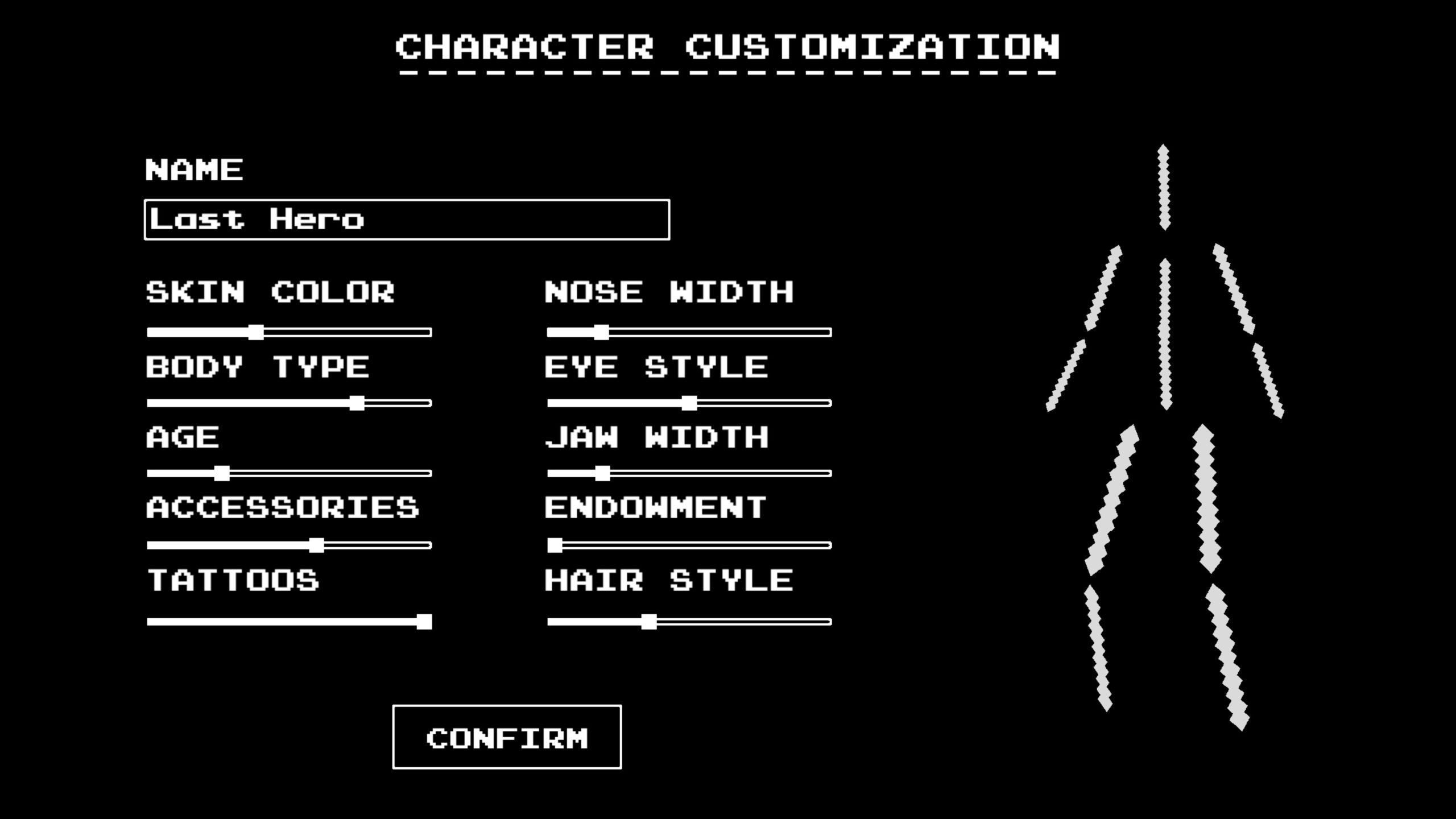
Thankfully, the brutal difficulty that is seen in those soulslike games, hasn’t fully made the transition over to The Last Hero of Nostalgaia. While I did find myself dying a fair amount, thanks in part to the game’s enemies hitting hard, it did feel that with a couple of tries I could learn enemy patterns and push on through to the next checkpoint. Bosses are particularly tough to handle but the margin of error that was reserved for blocking and returning hits is pretty forgiving when compared to other Souls games. This meant that while battles were a challenge, they didn’t feel frustratingly unfair, especially considering the amount of ‘source’ (the game’s answer to Souls) being so generous, meaning that the unnamed hero was quick to level up. I think this was for a good reason; The Last Hero of Nostalgaia isn’t the longest game in the world, clocking in at around 15-18 hours of playtime.
Time spent in the world of Nostalgaia is remarkably well spent; the game moves at a brisk pace and doesn’t slow down unless you want to backtrack or explore every nook and cranny. I felt the game was designed for the player to follow the most obvious path so without exploring, you could smash through it in next to no time – in fact, one of the achievements is to finish within five hours. The world itself is broken into a number of different sections that include a broken town, a winding network of caves and a vast castle, and while they all suffer from different stages of pixelation, visually they feel a little safe. Each area is represented in a brown and grey palette, and while there are splashes of colour, the world did feel a little drab when exploring.
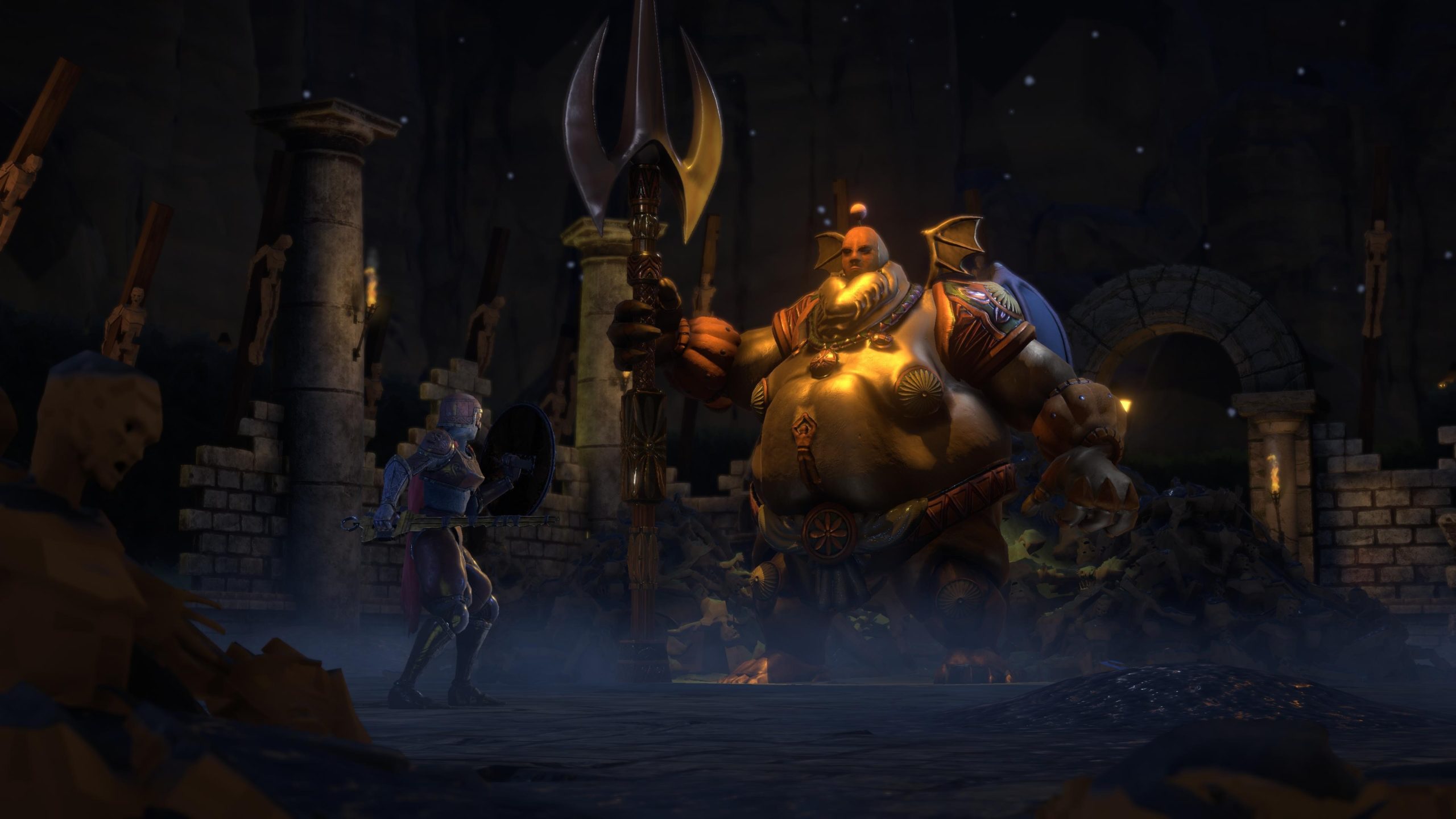
The humour spreads into Nostalgaia as much as the pixelation of the world. Throughout the quest, there are secret areas to be found, but rather than existing as extensions of the main areas, these are NPC break rooms where I found enemies sleeping or training for their jobs. It was hilarious walking around the catacombs and suddenly finding myself in the enemy break room, adorned with slogans and mantras on how to carry out their job. Along for the ride was an omnipotent Narrator who constantly updated me on the progress of the game and the general state of things going on in the world. This information would often be important plot lines, but at times the updates would be more mundane, but if this was the case, the old voice would break character and throw something at our two-dimensional friend. This could mean more enemies suddenly appeared, or it could mean a whole train would appear on a tiny bridge and start chugging toward the hero. Whatever it was, it always spiced up the game and kept me on my toes, especially on those long treks to the next level.
The voice acting throughout is simply stunning and even though some of the dialogue is utterly crazy, it is still delivered without a hint of the type of *wink wink, nudge nudge* campness that you’d expect from a game that you would class as a parody title. In fact, each of the NPCs I met on my excursion sounded exactly as I’d expect them to; the Narrator was authoritative yet dismissive throughout, while some of the adventurers leaned into the exhaustive life of being a hero. The only trouble with the sounds is that for some reason, the mix was off, and occasionally it sounded as if an NPC I was face to face was coming from the other side of the room.
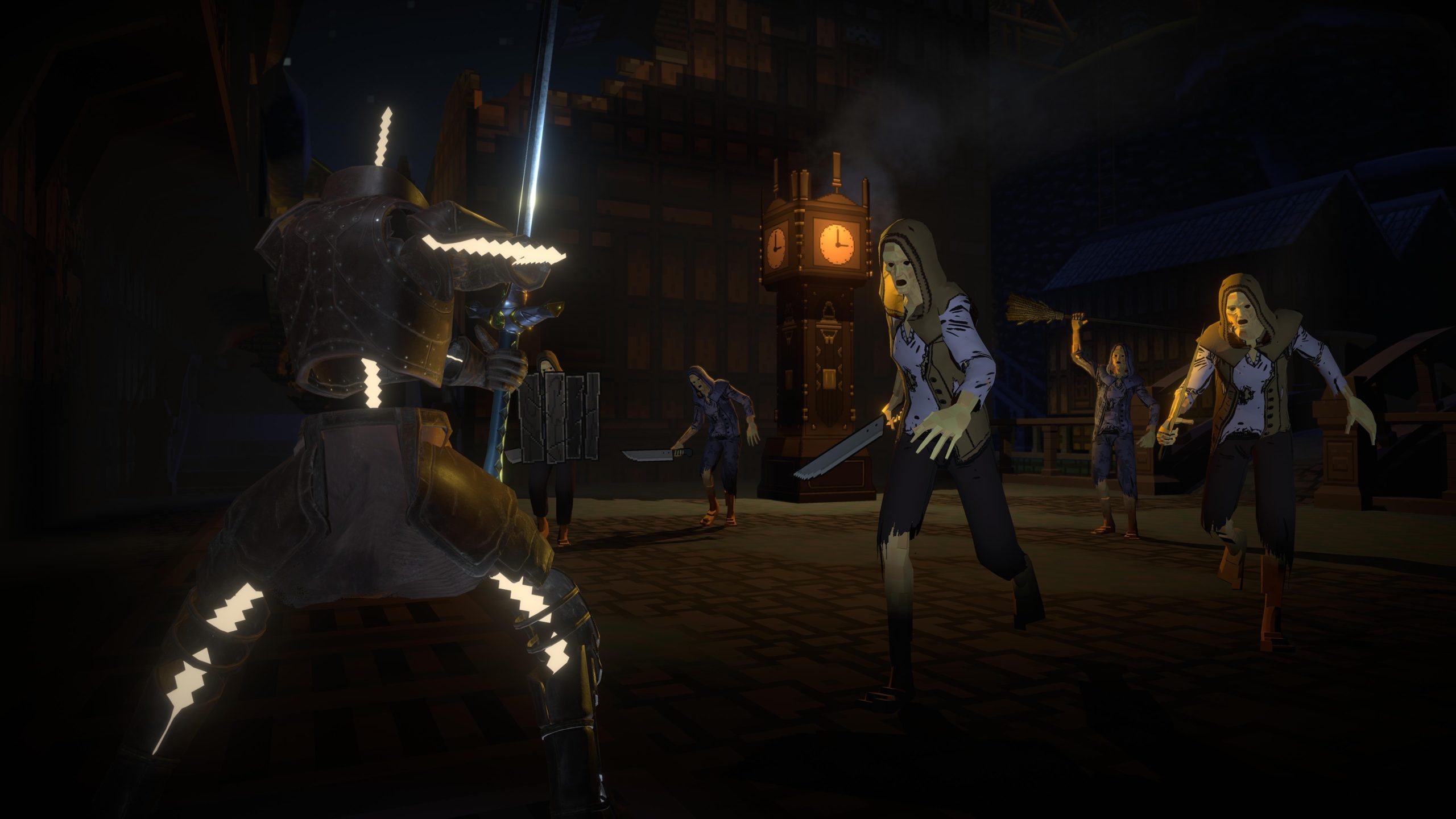
Nostalgaia succeeds in creating a carbon copy of FromSoftware’s work and manages to bring a satirical take on a usually serious genre, and while this is the biggest plus point the game has going for it, it is also the biggest flaw. In emulating the entire battle system, UI, and all the technical gubbins, the team at Over The Moon has also brought the same clunky menus and convoluted upgrade systems to Nostalgaia. When I first booted the game, I was utterly confused that the left stick didn’t navigate any menus, even the start screen. It’s certainly not game-breaking in any way, but the menus’ quirks are as frustrating as the constant dying.
Depending on the level of detail that the developers were going for, the clunky UI could be forgiven – this is a staple feature of other Souls games, so why not this one? But menus aside, Nostalgia sadly suffers from other technical glitches, especially as the game trundles on. When moving through the game, it is a flawless experience. Levels load instantly, and the world appears in front of me, ready to be explored. As I unlocked more abilities, the option to backtrack through the land became more alluring (as I made notes of certain places that warranted more attention), but as I travelled back to earlier levels, the screen froze for a few moments while the console loaded up the necessary bits to continue. The combat became a choppy affair too, which did temper my excitement for unlocking more of the game.
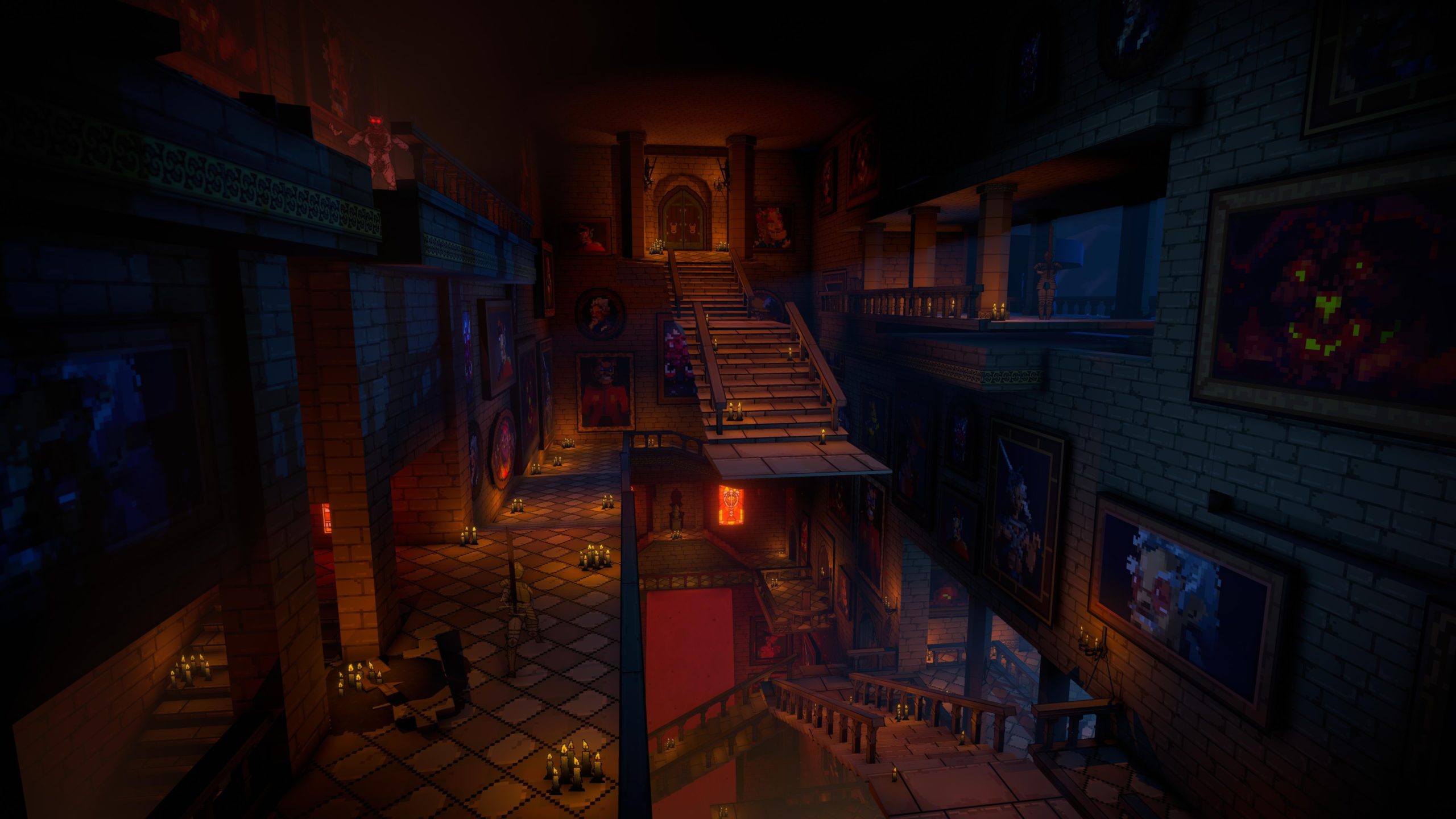
The Last Hero of Nostalgaia has every right to call itself a ‘soulslike’ game. It happily rips off every aspect of the Dark Souls series with gleeful abandon and with a giant smirk across its face. If you’ve played a Souls game, then it’s all here; the controls, menus, and attack patterns are all where you’d expect them to be. The difficulty is lowered somewhat and there is a much shorter run time, giving Nostalgaia more of a ‘Soulslite’ feel that’s more accessible to the mainstream player without it feeling like a cheap knockoff. The story is remarkably solid and never takes itself too seriously, and throughout the quest, random interjections from the Narrator consistently lift the mood and throw unexpected curveballs. I was left feeling like The Last Hero of Nostalgaia is an irreverent, self-deprecating, and above all else fun game that everyone should at least dip their toes into.


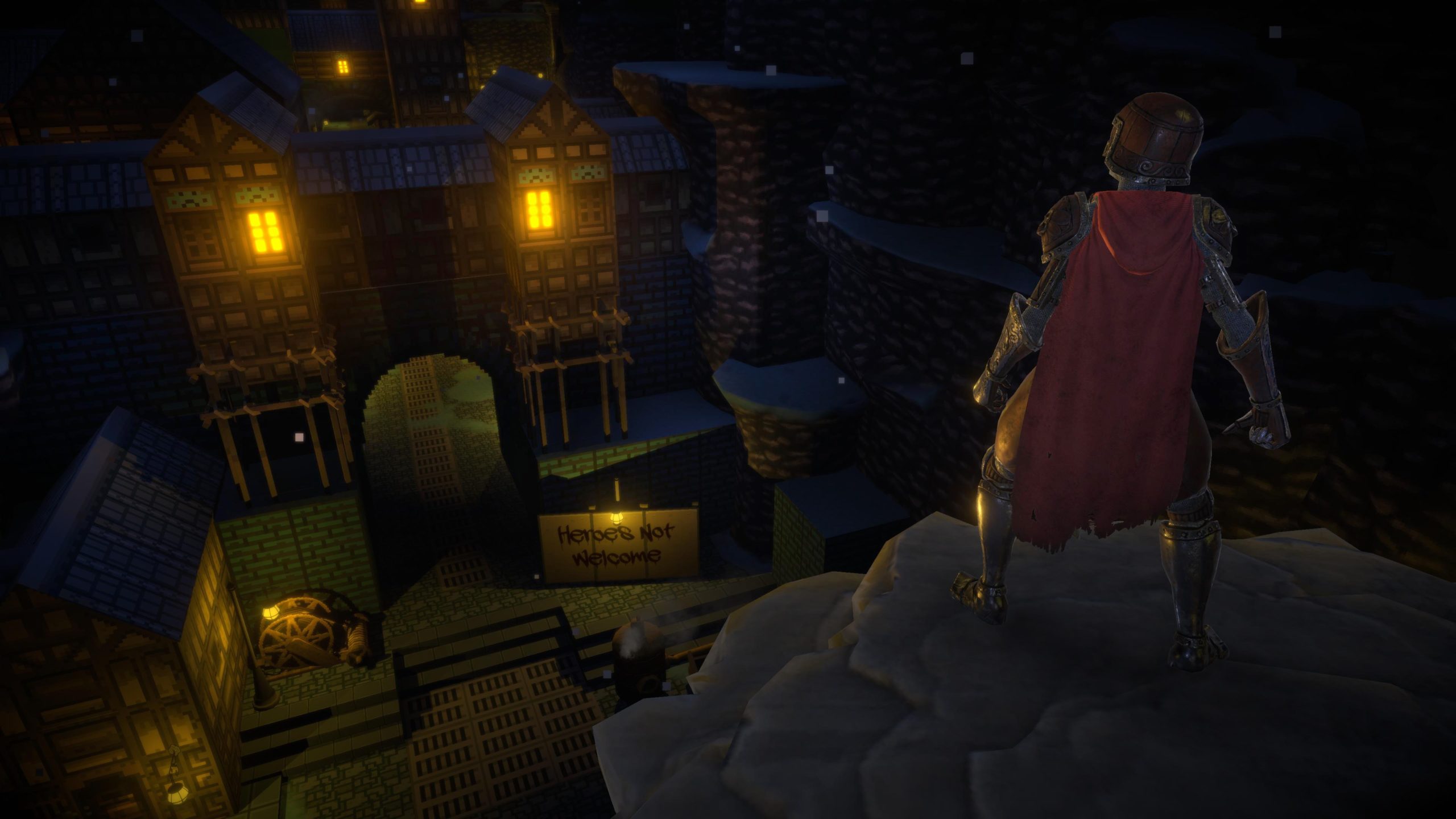


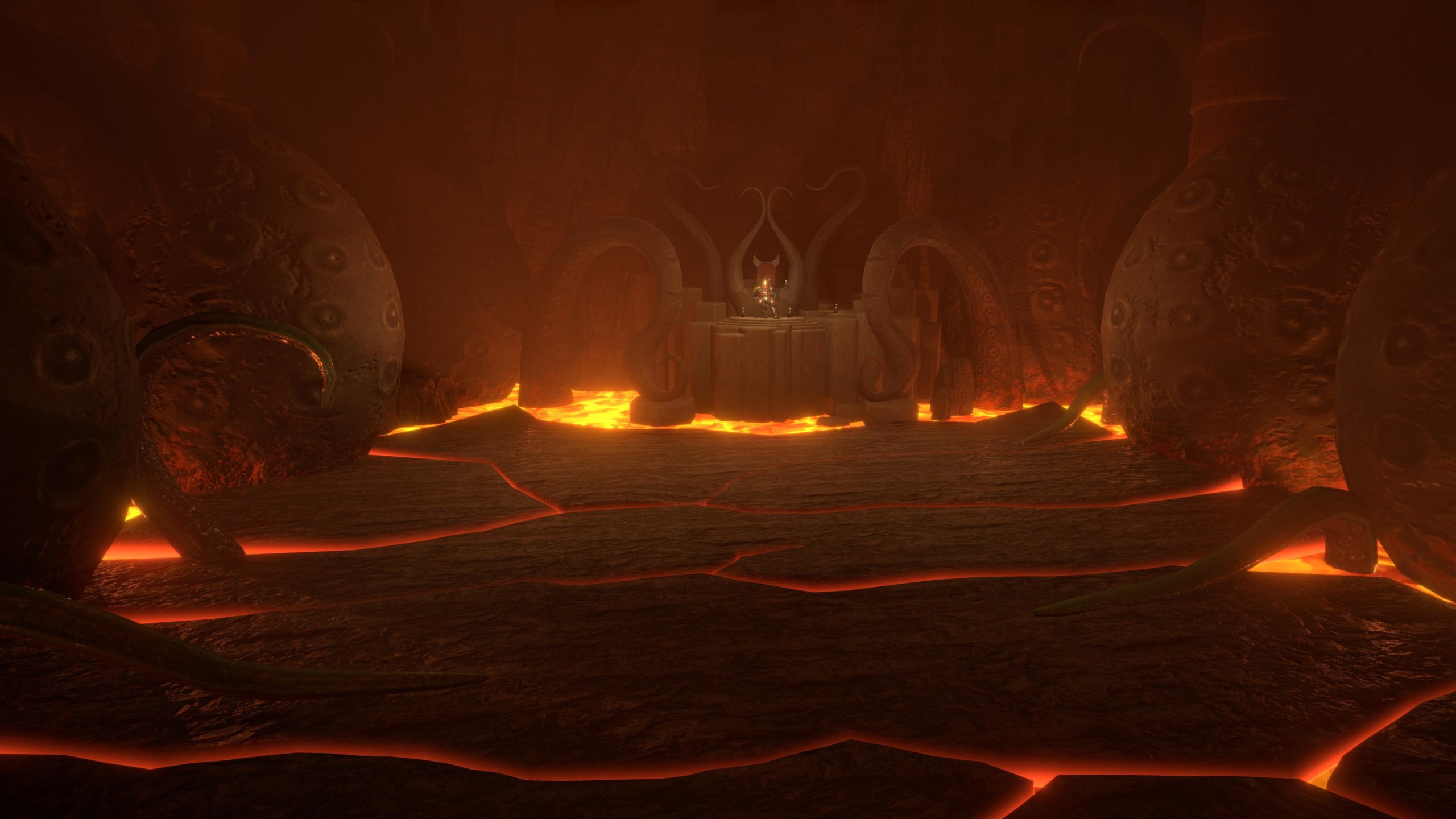
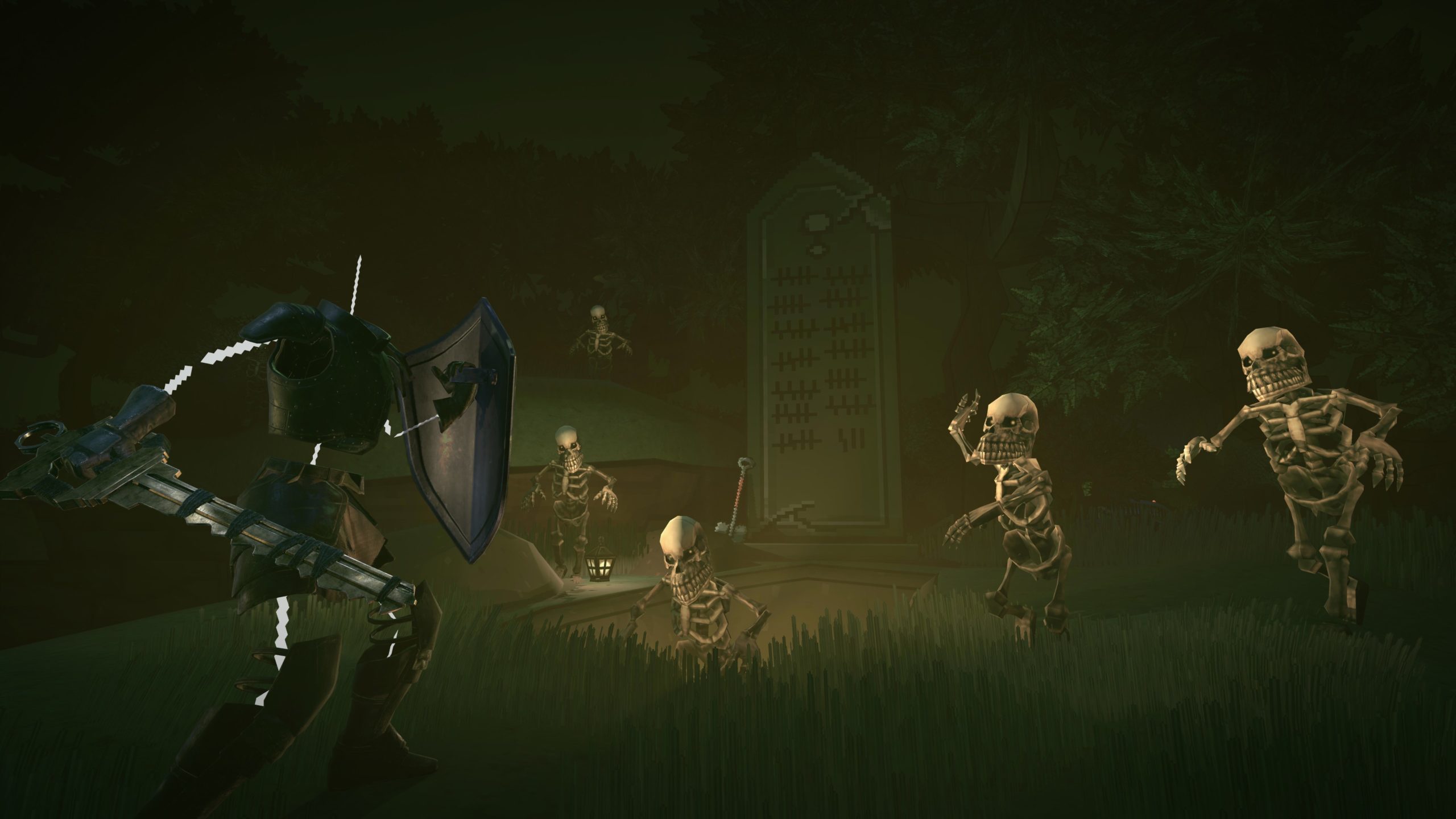
In the interest of full disclosure, VGamingNews was provided with a copy of the game in order to conduct this review.


